NOTE: For prior parts in the Hizballah Cavalcade series you can view an archive of it all here.
—
Deck the Halls with a Minority Alliance: Shia Militia Social Media Messages to Christians
By Phillip Smyth
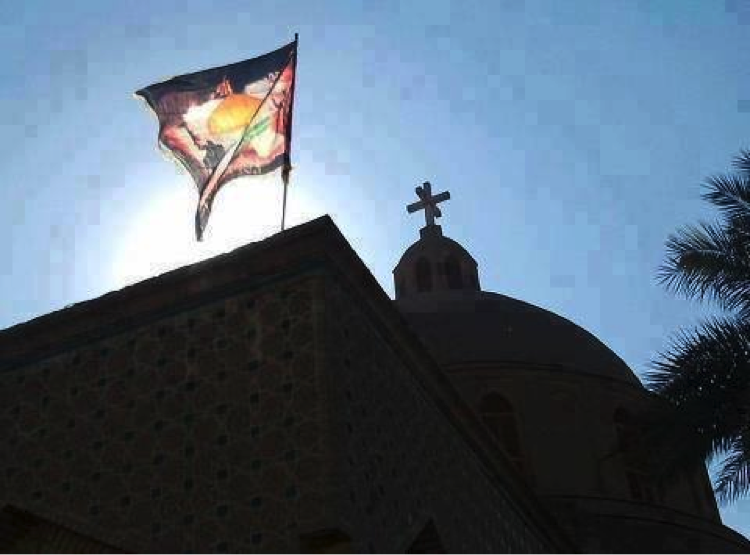
Figure 1: This photo, purporting to show a Shia banner on a church (possibly in Iraq) has been circulated around as a symbol of Shia-Christian unity and coexistence. The photo has been present on a multitude of Iranian-backed Shia Islamist group Facebook pages.
Minority alliances in the Middle East are hardly a new trend. During the Syrian Civil War there has been deliberate engagement by some minority elements to build more effective political alliances and fighting groups based on minority identification. This has particularly been the case with the mainly Alawite support base for Syrian leader Bashar al-Assad and his system’s relationship with Druze and Christian elements within Syria.[1] The trend of marketing the Syrian leader as both a secularist and as one who will take care of other minority groups has been a major theme in pro-Assad open source media circles.[2]
Nevertheless, Bashar al-Assad’s power bloc is not the only group touting their minority alliance credentials in the face of a mainly Sunni Islamist rebel enemy. In fact, Shia Islamist militias backed by Iran, which are also engaged in fighting these rebels, have also actively attempted to court Christians. These groups have tried to build a minority alliance sentiment with a number of strategically placed photos on their hive-like social media accounts. While this is but one of many different trends found on Shia Islamist militia social media pages, it does play to grander narratives.
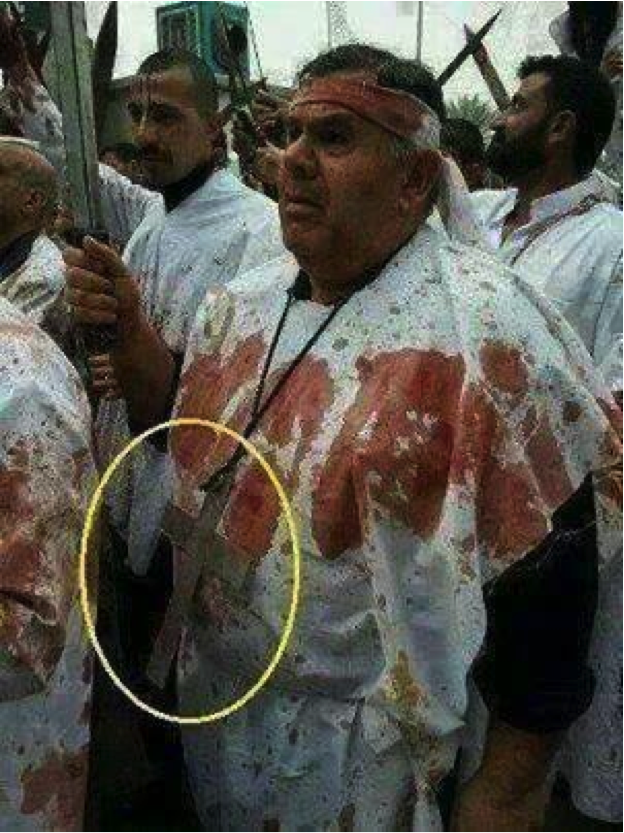
Figure 2: A photo showing a man covered in blood from what can be assumed was his own practice of zanjeer zani (Shia self-flagellation using a sword or knife). Note how a crucifix around his neck is circled. Some pro-Shia-militia-in-Syria social media pages have suggested the man is a Christian showing his devotion to historical Shia leader, Husayn. Other pages have used the photo as a symbol of Shia respect for Christians (and vice versa).
Lebanese Hizballah has actively engaged Lebanon’s Christian (primarily Maronite Catholic) community. In 2006 the group became a senior partner with Michel Aoun’s mainly-Christian Free Patriotic Movement in the March 8th Alliance.[3] Lebanese Hizballah has also attempted to court Lebanon’s Christian community in recent years. In 2012 around Christmas, pro-Hizballah writers published pieces touting the group’s outreach to Christians.[4] The group also issued a 2013 Christmas greetings to Christians and held meetings with the community.[5]
Since Shia militia groups in Syria have branded their enemies as al-Qa’ida style extremist “Takfiris”, it allows for continued marketing of Shia group activities as a hard power counter. Many Christians in Syria arrived in the country due to attacks they suffered in Iraq. Other Syrian Christians worry about their presence in the country with ascendant Sunni Islamist extremist groups in the country.
The goal of these photos appears to be less of an attempt to recruit Christian fighters for Shia militia ranks.[6] Instead, they are used to create the image of cross-sectarian unity. This form also pushes a narrative that Christians can not only find protection with Shia Islamist militias, but that these organizations will both respect them and act as viable long term allies. This messaging structure also plays off of earlier themes adopted by many regional Christian groups, namely the fear of being drowned in a “Sunni Sea”.
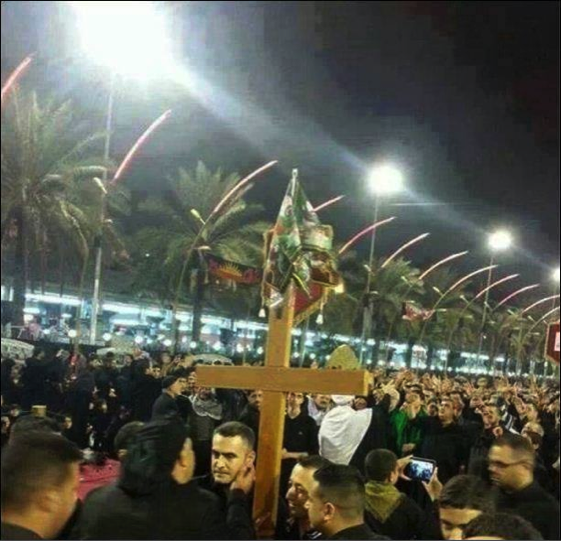
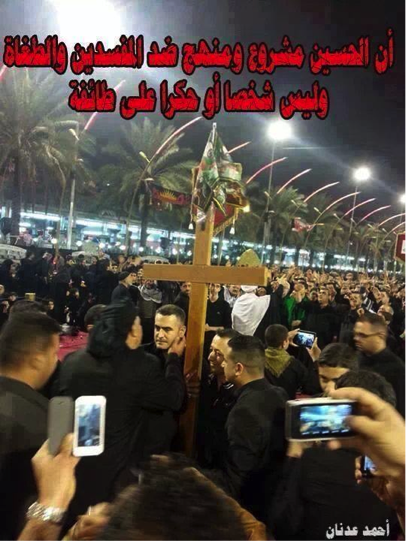
Figure 3: A photo supposedly showing Christians in Iraq engaging in a Shia pilgrimage. This photo also received many different captions. The main theme behind the captions promoted Christian-Shia brotherhood.

Figure 4: A photograph claiming to show an Iraqi church which had hung Shia banners to help usher in the New Year. This picture started to appear on Shia Islamist militia pages in December 2013. The photo was unclear, but implied it was taken in November during Ras as-Sanah al-Hijriyah (the Islamic New Year). Rebel activists seized upon the photograph, claiming it showed a church being desecrated with Shia flags in Syria.
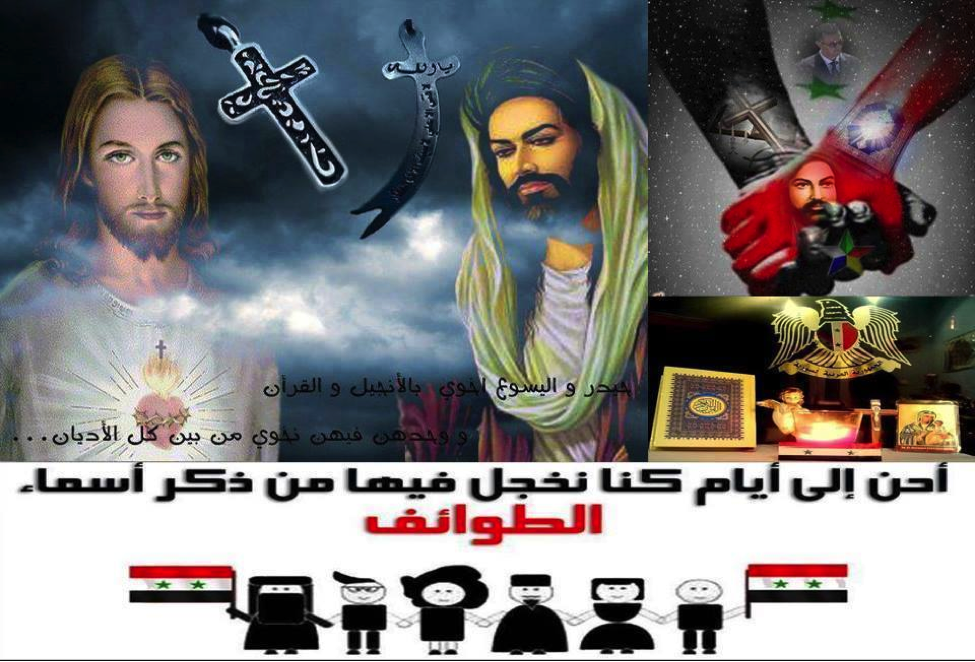
Figure 5: A picture promoting ‘Syrian unity’ between Shia and Christians. This picture has appeared on a small number of Iraqi Shia-manned militia group Facebook pages.
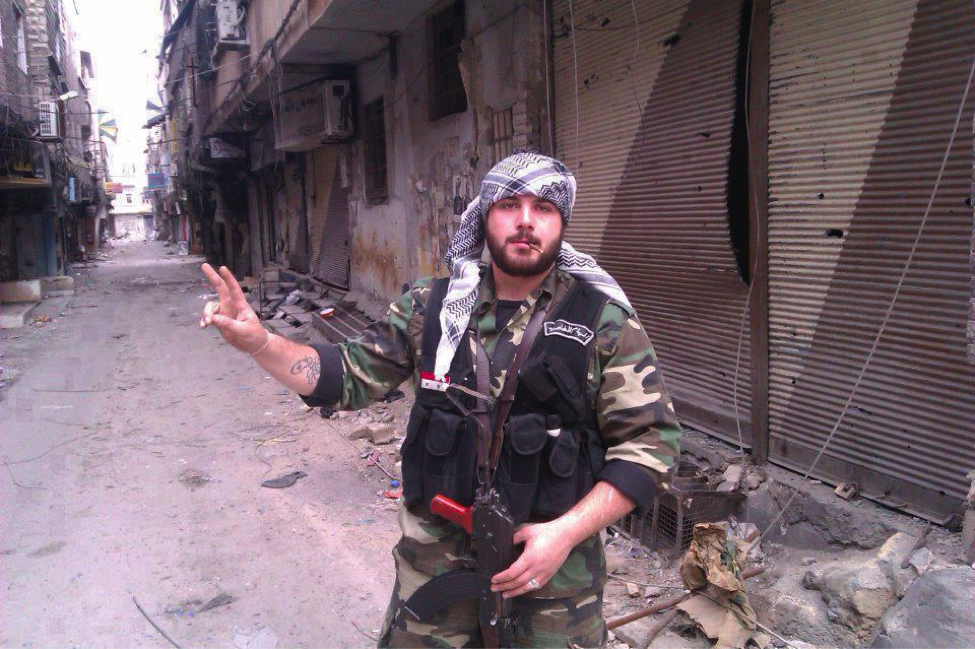
Figure 6: In April, Shia militia pages claimed this fighter was a “Christian martyred defending the Shrine of Sayyida Sukayna bint Husayn [the Sayyida Ruqayya Mosque]”. Some Shia militia pages referred to him as the “Son of the Virgin Mary”.
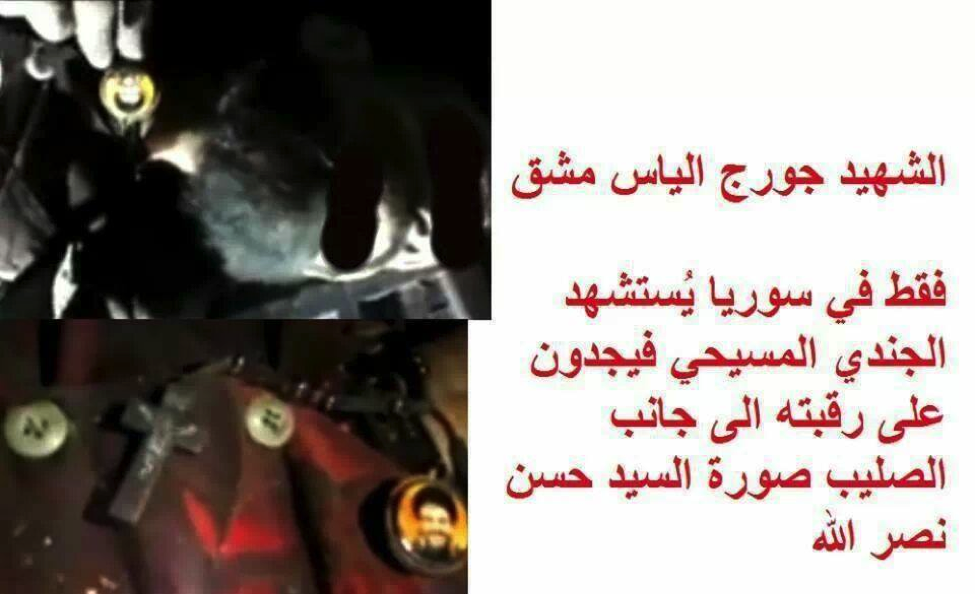
Figure 7: A photo showing a Syrian fighters accoutrements. Included are small medallion-like pictures of Lebanese Hizballah leader Sayyid Hassan Nasrallah and a crucifix. It noted in the caption that these items belonged to a Christian soldier named George Elias and that he wore them around his neck.
Category: Hizballah
Hizballah Cavalcade: Khamenei’s Cannon: .50 Caliber Anti-Material Rifles & Shia Fighters in Syria
NOTE: For prior parts in the Hizballah Cavalcade series you can view an archive of it all here.
–
Khamenei’s Cannon: .50 Caliber Anti-Material Rifles & Shia Fighters in Syria
By Phillip Smyth
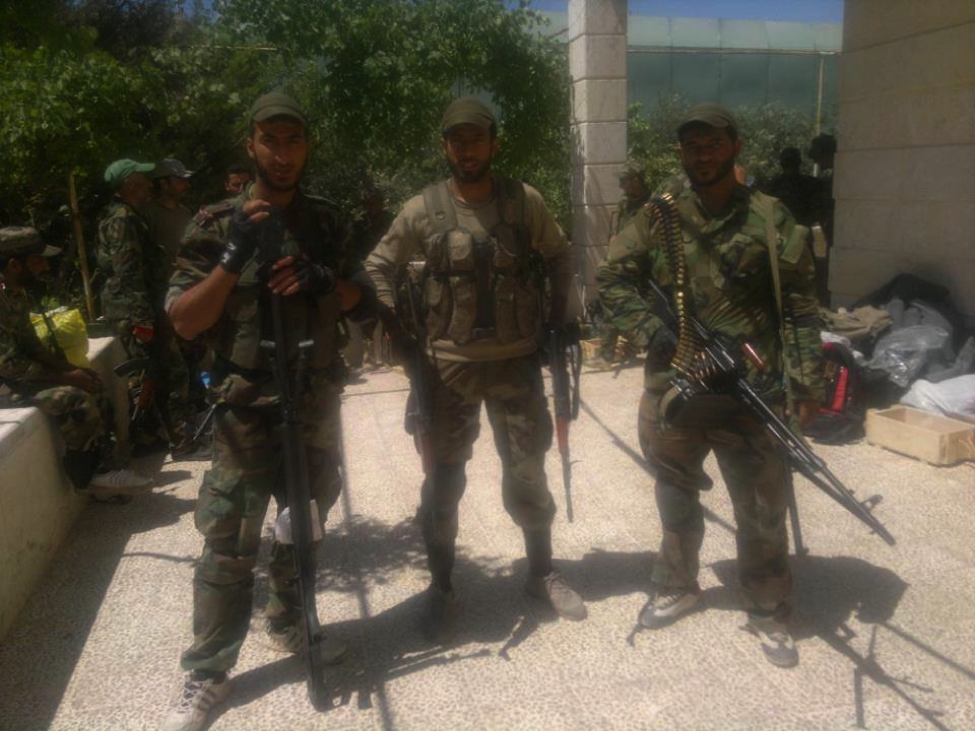
Figure 1: Combatants from Liwa’a ‘Ammar Ibn Yasir. The fighter on the left likely holds an Iranian-copy of the HS.50 rifle.
Since April 2013, around the same time Liwa’a Abu Fadl al-Abbas was first gaining broader exposure and name-recognition, another sub-trend started to appear in the photos showing Shia Islamist fighters in Syria. This trend remained minor and occasional. However, starting in October, there have been increasing examples of foreign Shia Islamist fighters being pictured with long range bolt-action anti-material rifles.[1]
It is possible these weapons were the bolt-action HS.50, .50 caliber (12.7x99mm) rifles produced by Austria’s Steyr Mannlicher. According to The Telegraph, 800 of the rifles were shipped to Iran in 2007.[2] However, according to the Brown Moses Blog, it is far more probable that these rifles are actually Iranian copies which were shipped to Syria.[3] Since the winter of 2012, pro-Iranian social media has also praised the Iranian-made copy of the rifle.[4] Still, serial numbers on the weapons are often hidden, making absolute confirmation difficult.
The original Steyr Mannlicher sale of these long-range weapons caused worries among British and U.S. policymakers and military personnel due to the fear they would be supplied to Iranian-created and supplied Shi’a Islamist “special groups” in Iraq. These groups included Asa’ib Ahl al-Haq and Kata’ib Hizballah. Both of these organizations are now sending forces to Syria.
Anti-material sniper rifles of this caliber have found a welcome place in Western military services. The U.S. military fields the M107 semi-automatic .50 caliber rifle as do a number of other militaries. In October, 2012 one of these weapons killed a Taliban member in Afghanistan from a distance of 2,475 meters.[5]
Presently in Syria, these types of rifles have been used by both rebels and pro-Assad forces. Nevertheless, the outfitting of highly organized foreign Shia fighter manned organizations may demonstrate a shift in tactics and training.
Groups using the rifle in Syria span the full spectrum of organizations backed by Iran. Lebanese Hizballah has been a primary poster of images with the weapon. Additionally, Iraq-based Harakat Hizballah al-Nujaba’s (a front for Kata’ib Hizballah and Asa’ib Ahl al-Haq) Syria-based front militias, Liwa’a ‘Ammar Ibn Yasir and Liwa’a al-Hamad have posted photos of their militants with the rifle. Iraq’s Badr Organization’s Quwet Shahid Muhammed Baqir Sadr and Kata’ib Sayyid al-Shuhada have posted their own images of their fighters with the HS.50 type rifle. Other Shia fighters from unnamed organizations have also been pictured with the weapon.
Films featuring Shia militia groups using the HS. 50 type rifles in combat in Syria have been extremely rare. Usually only photos are posted.
The first film showing Shia Islamist militias in Syria using the rifle was posted to Facebook and YouTube pages associated with the Badr Organization’s Quwet Shahid Baqir Sadr (BOQSBS), the group’s expeditionary unit in Syria. The BOQSBS has also been a main poster of high-quality images showing their combatants wielding these types of anti-material rifles. Around a minute of footage showing BOQSBS fighters using the weapon was inserted into a much longer film made to demonstrate the group’s activities in Syria (see below at minute markers 1:59-2:23).
Due to the high level of operational security employed by these groups, potential failures or successes of the rifle in combat are often not showcased. Operations using the rifle have also not been detailed on the many social media pages run by Iranian-backed Shia militia groups inside Syria. In fact, the rifle has rarely been named or described by Shia Islamist militia pages. Nevertheless, these rifles have become a regular feature in images featuring fallen fighters.
Such a capability, even if deliberately showcased for propaganda purposes, should be taken seriously by regional and global military forces. Iranian equipped and trained snipers, utilizing smaller caliber rifles, demonstrated a lethal efficiency during the Iraq War (2003). Their utilization of smaller caliber-wielding snipers (particularly using the SVD-type rifles) demonstrates a concentration on sniping tactics.
Some Possible Reasons Why the Rifles Are Appearing More
- Propaganda Purposes: Some of the photos of fighters holding the rifle appear to be posed images meant to showcase the size of the weapon (representing power) in comparison to the fighter. Additionally, since it is probably a copy, showing the rifle in operations overseas is a sign that Iranian-made weapons are of a high quality. Proxy organizations may also see the rifle as a symbol of advancement and as a sign they are comparable to first-world armies. The weapon may also be a sign to rebel groups that Shia militants have more advanced capabilities.
- General Incorporation into the Order of Battle: The rifle could have possibly become more prolific with increased foreign-manned Shia militia operations.
- Offensive Operations: Since the start of main offensives in October and increase in numbers of Shia fighters, it is possible the rifle has found more use and acceptance by fighters.
The Rifle & Its Shia Islamist Users
Lebanese Hizballah:
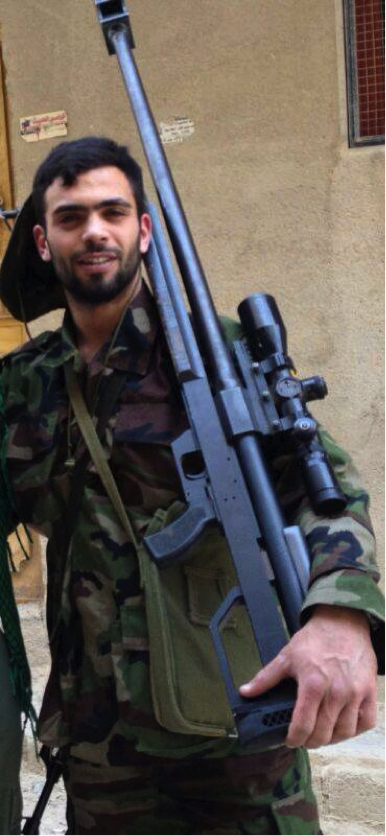
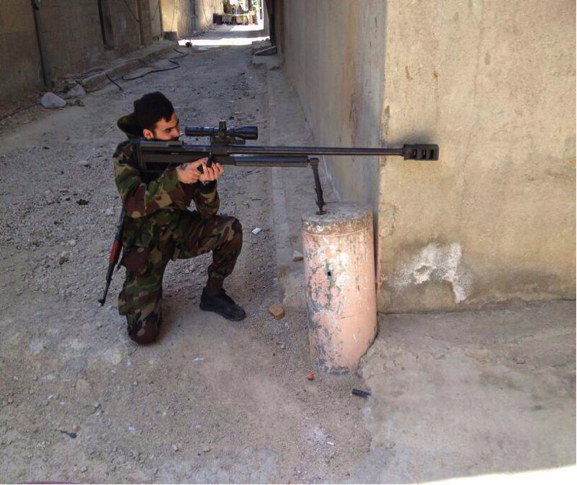
Figure 2: Lebanese Hizballah’s Ali al-Hadi Nuwn shown holding the weapon on his shoulder. (Left)
Figure 3: Another posed-photo of Lebanese Hizballah’s Ali al-Hadi Nuwn. In this picture he is taking aim with the .50 caliber rifle. (Right)
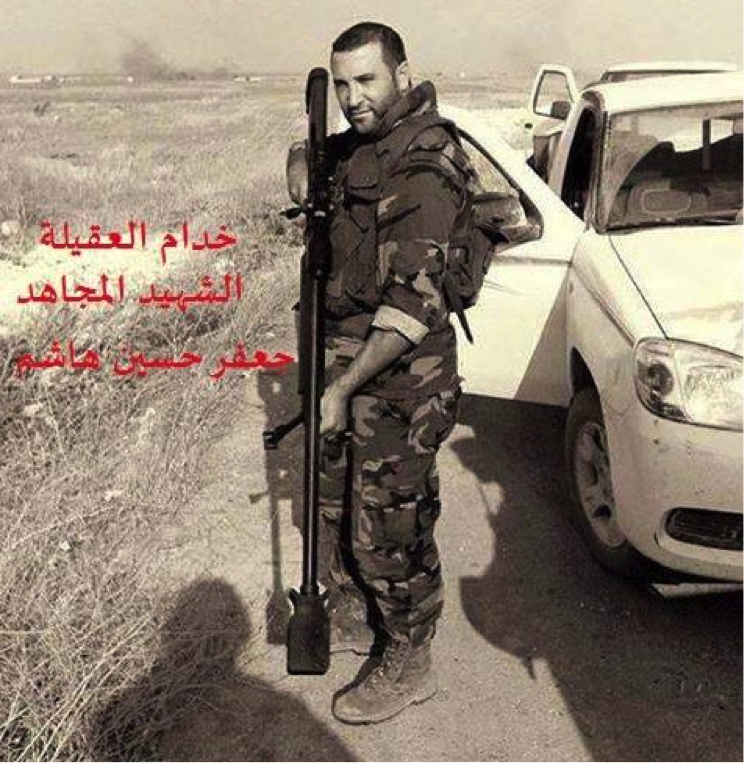
Figure 4: Hizballah commander Ja’afar Husayn Hashim with the rifle. He was reported to have been killed in Syria on November 1, 2013.
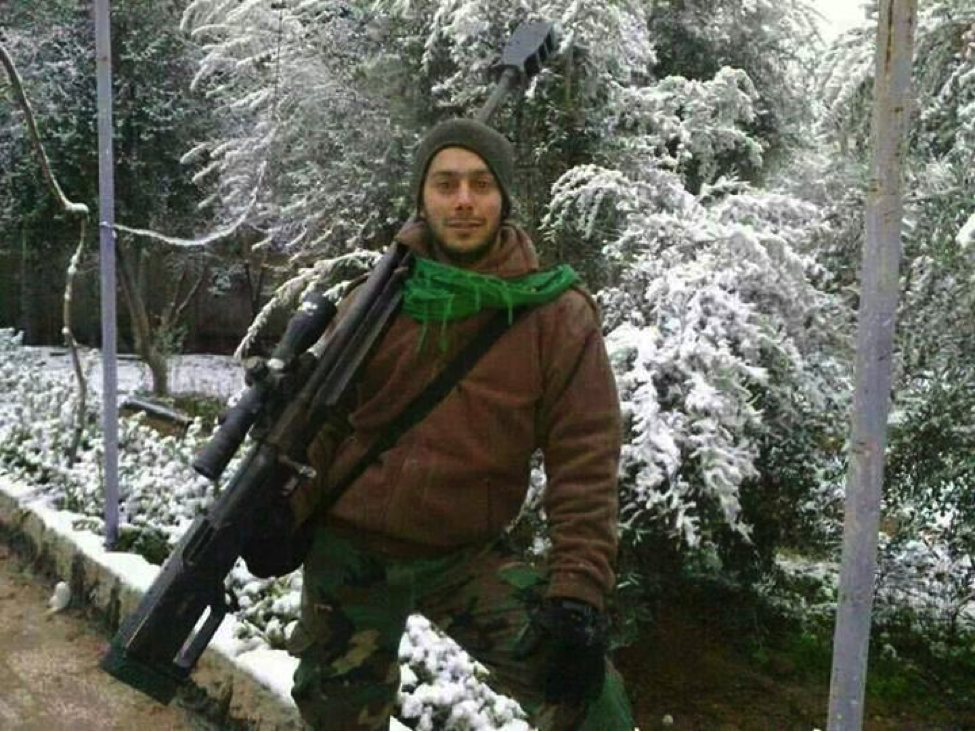
Figure 5: Hizballah’s Khadr Ahmed Matar, declared killed in Syria on December 2
0, is shown standing in the snow with the rifle.

Figure 6: Qasim Ghamloush is shown holding the .50 caliber rifle. His death was announced by Hizballah on December 7, 2013.
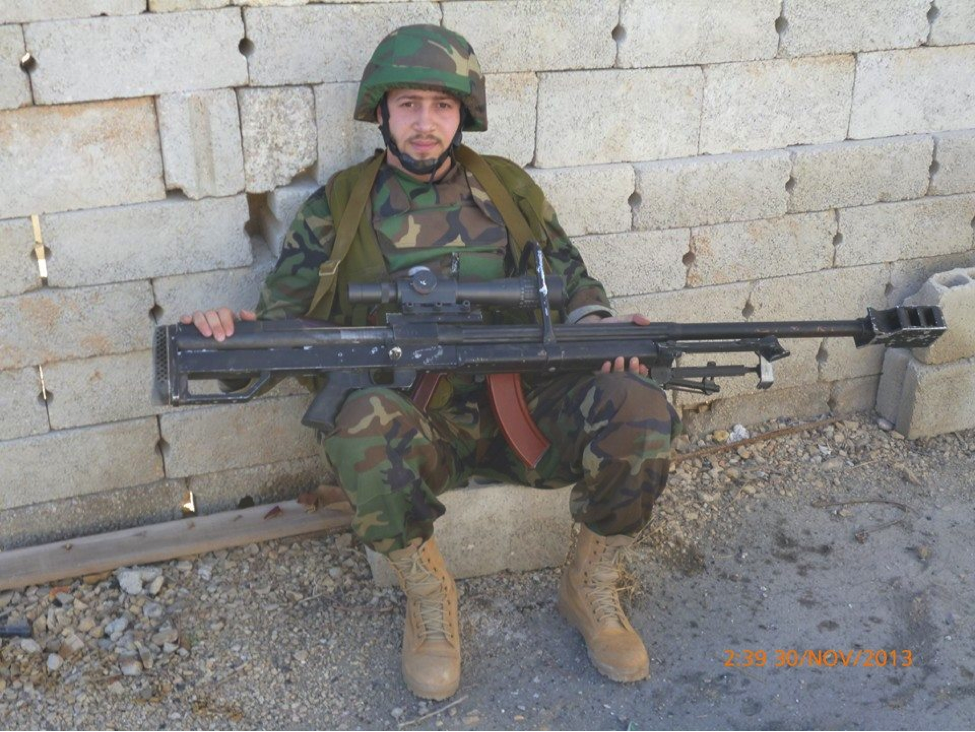
Figure 7: Ali Husayn Salah (A.K.A. Sheikh Hadi) is seen holding the rifle over his Kalashnikov-pattern weapon. Salah was also reported to have been killed in Syria on December 7, 2013.
Liwa’a al-Hamad:

Figure 8: An October photo of a fighter from Liwa’a al-Hamad taking aim with the HS.50-type rifle.
The Badr Organization – Quwet al-Shahid Muhammed Baqir Sadr
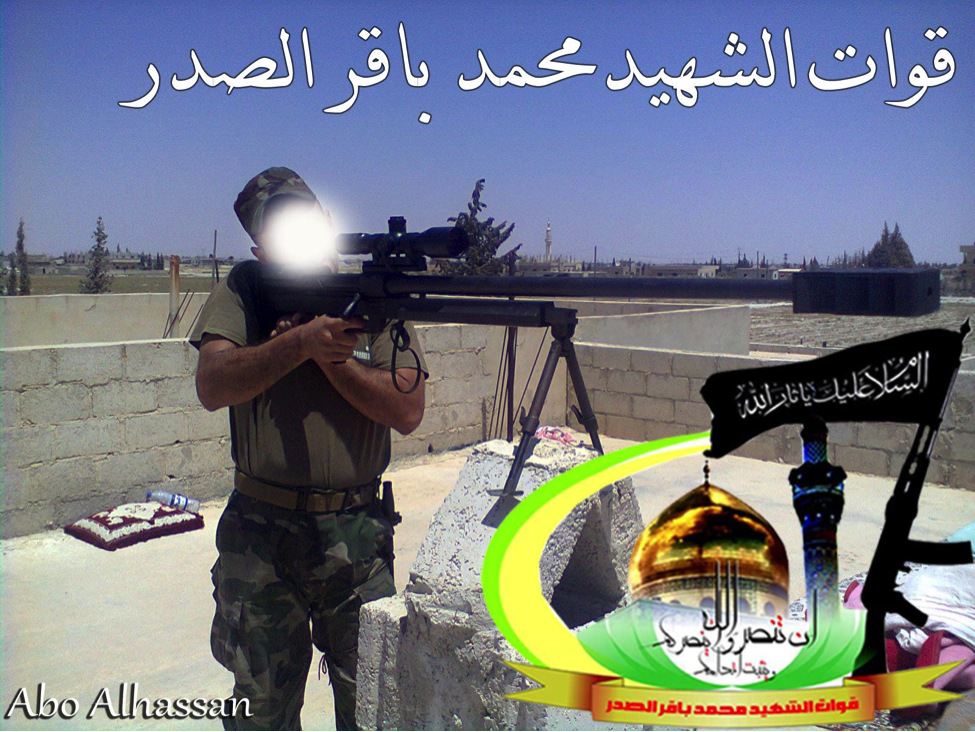
Figure 9: Following the announcement that the Badr Organization had created its own expeditionary force for Syria, this was one of the first photos they posted online.
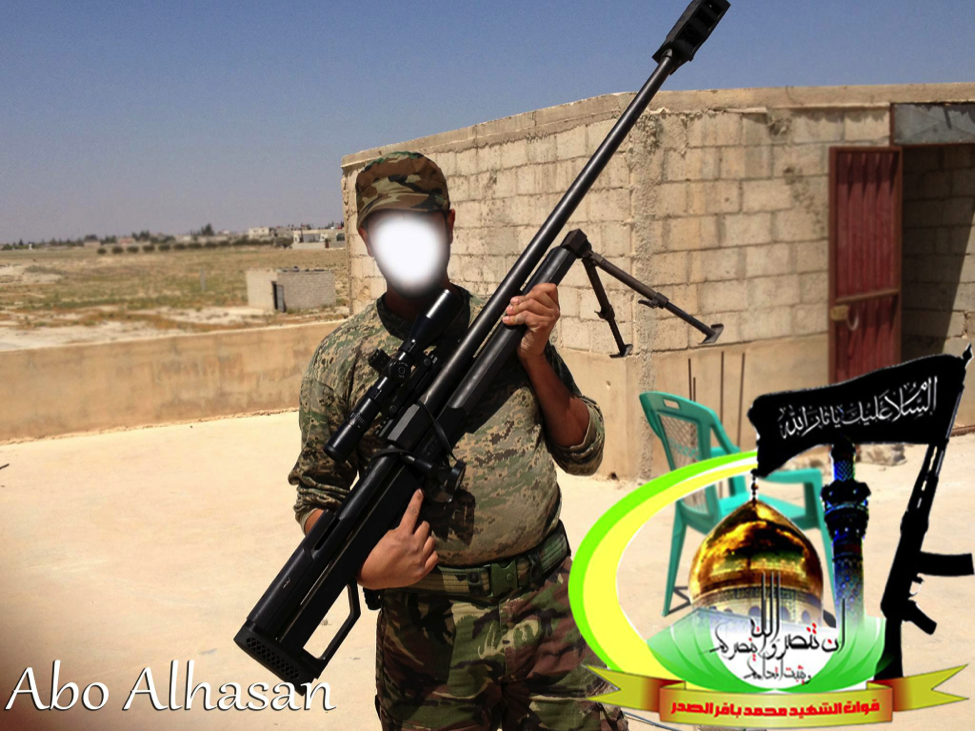
Figure 10: A Badr Organization-Quwet al-Shahid Muhammed Baqir al-Sadr is shown holding the HS. 50 type rifle.
Liwa’a ‘Ammar Ibn Yasir:
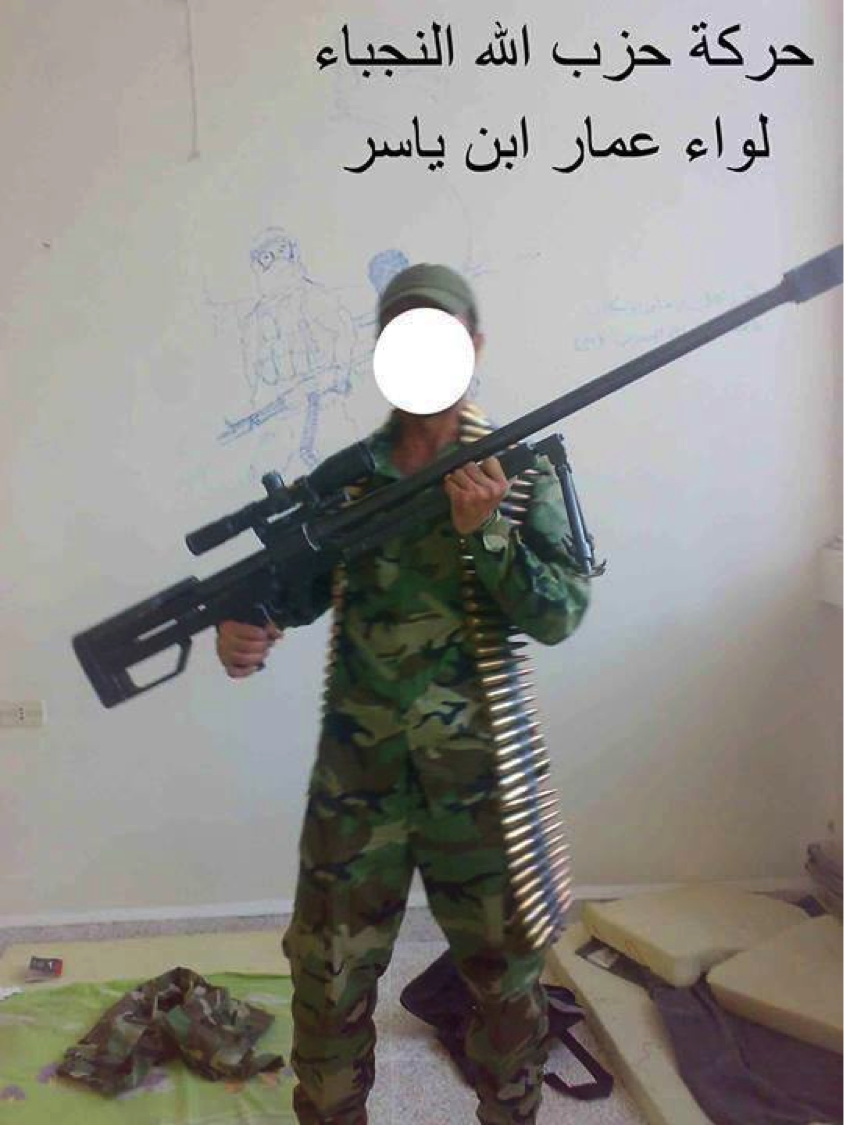

Figure 11: A commander from Liwa’a Ammar Ibn Yasir is seen holding the .50 caliber rifle.
Kata’ib Sayyid al-Shuhada:
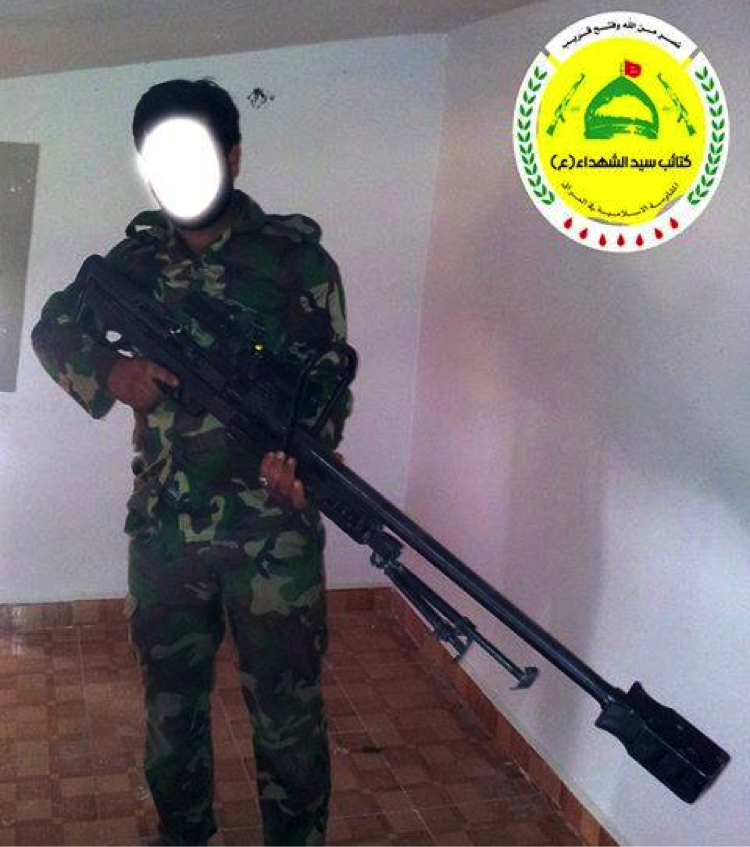
Fighters from Other Groups:
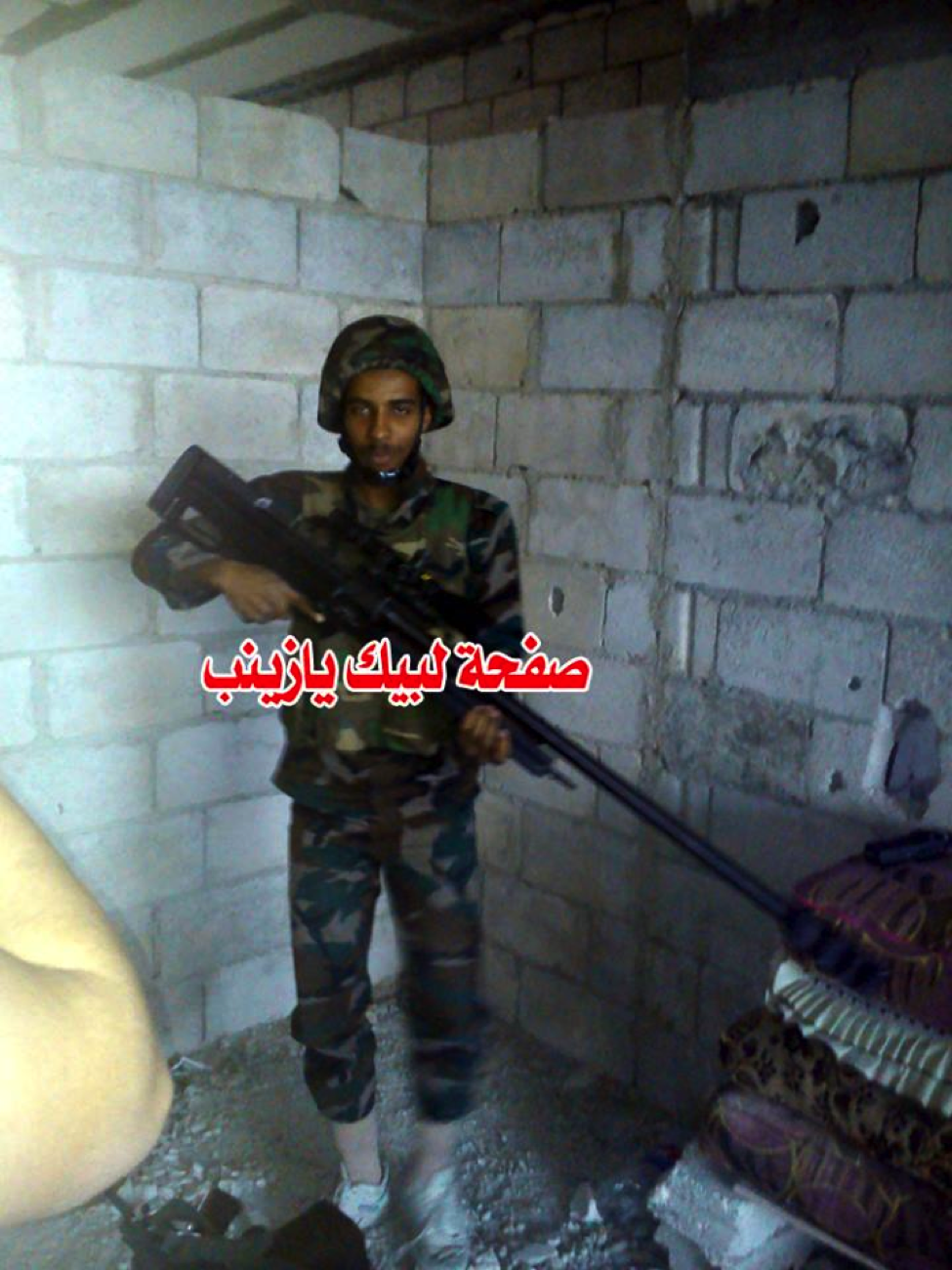
Figure 12: The Shia militia effort’s “first African martyr” (Muhammed Suleiman al-Kuwni) is shown holding the rifle.

Figure 13: A fighter from an unnamed Shia Islamist militia (likely Liwa’a ‘Ammar Ibn Yasir) take aim with his rifle.
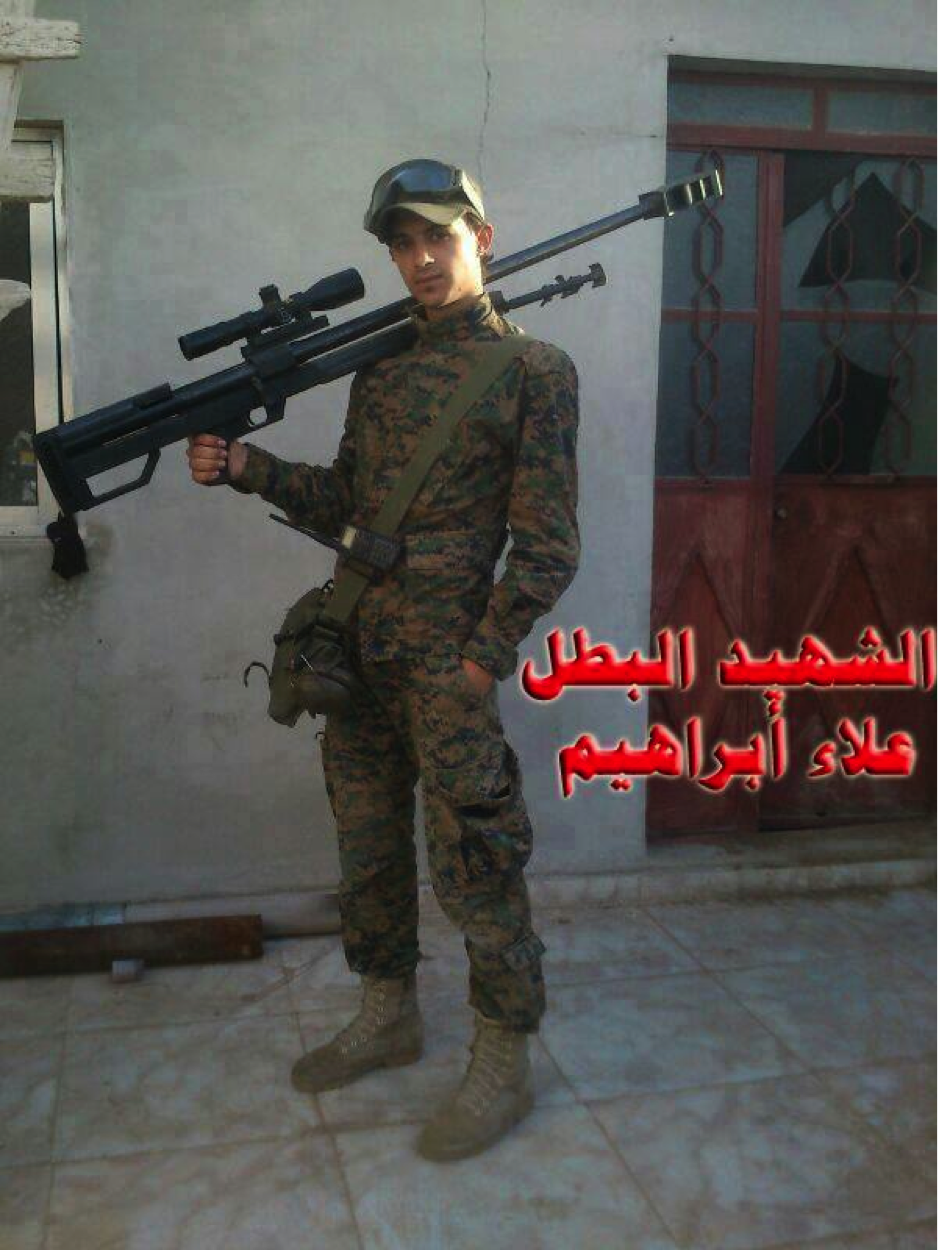
Figure 14: Alla’ Ibrahim (possibly from Liwa’a Zulfiqar), an Iraqi Shi’a fighter buried on November 30, 2013 holds the rifle over his shoulder.
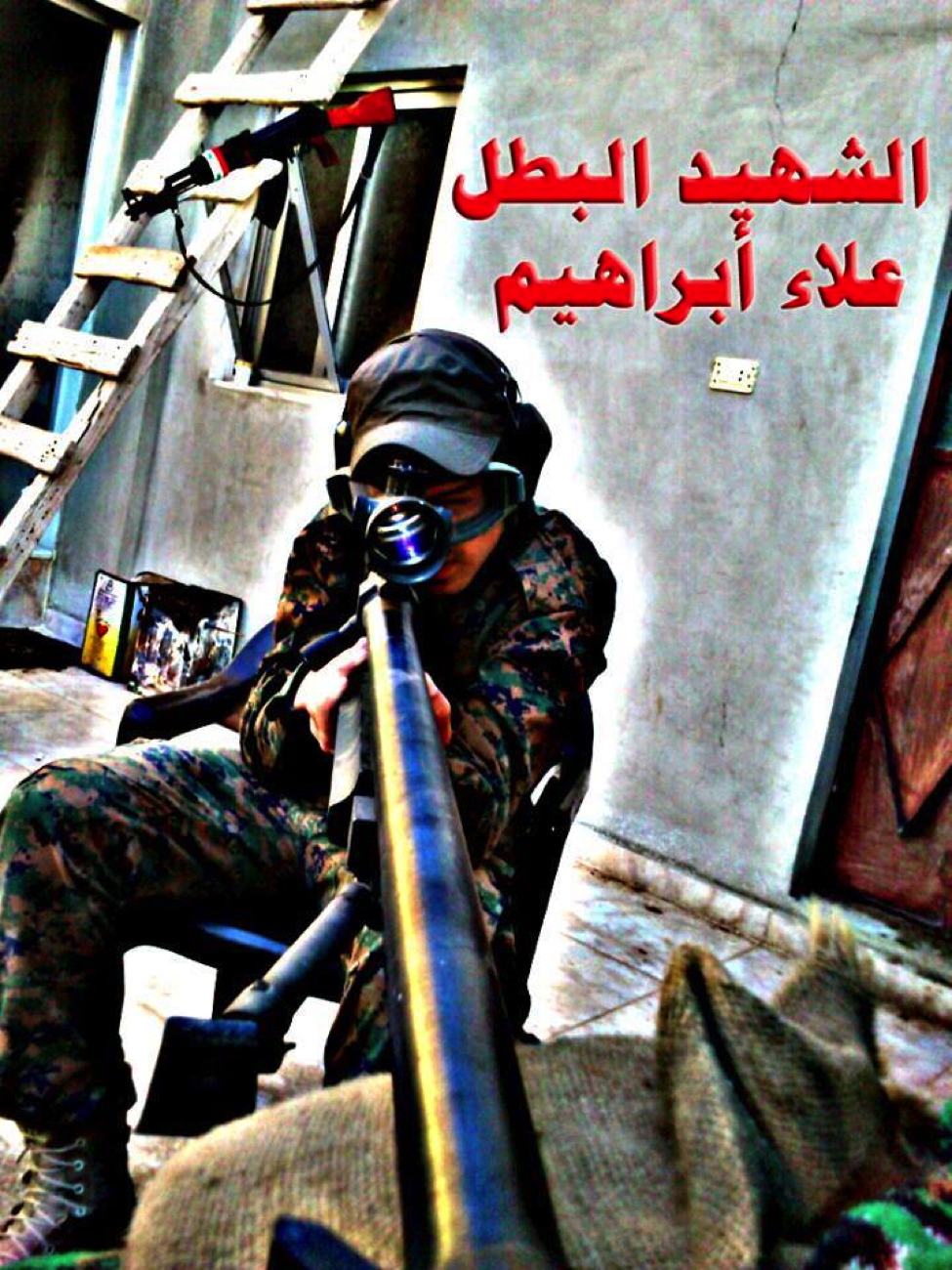
Figure 15: An edited shot of Alla’ Ibrahim shows him posting with the rifle.
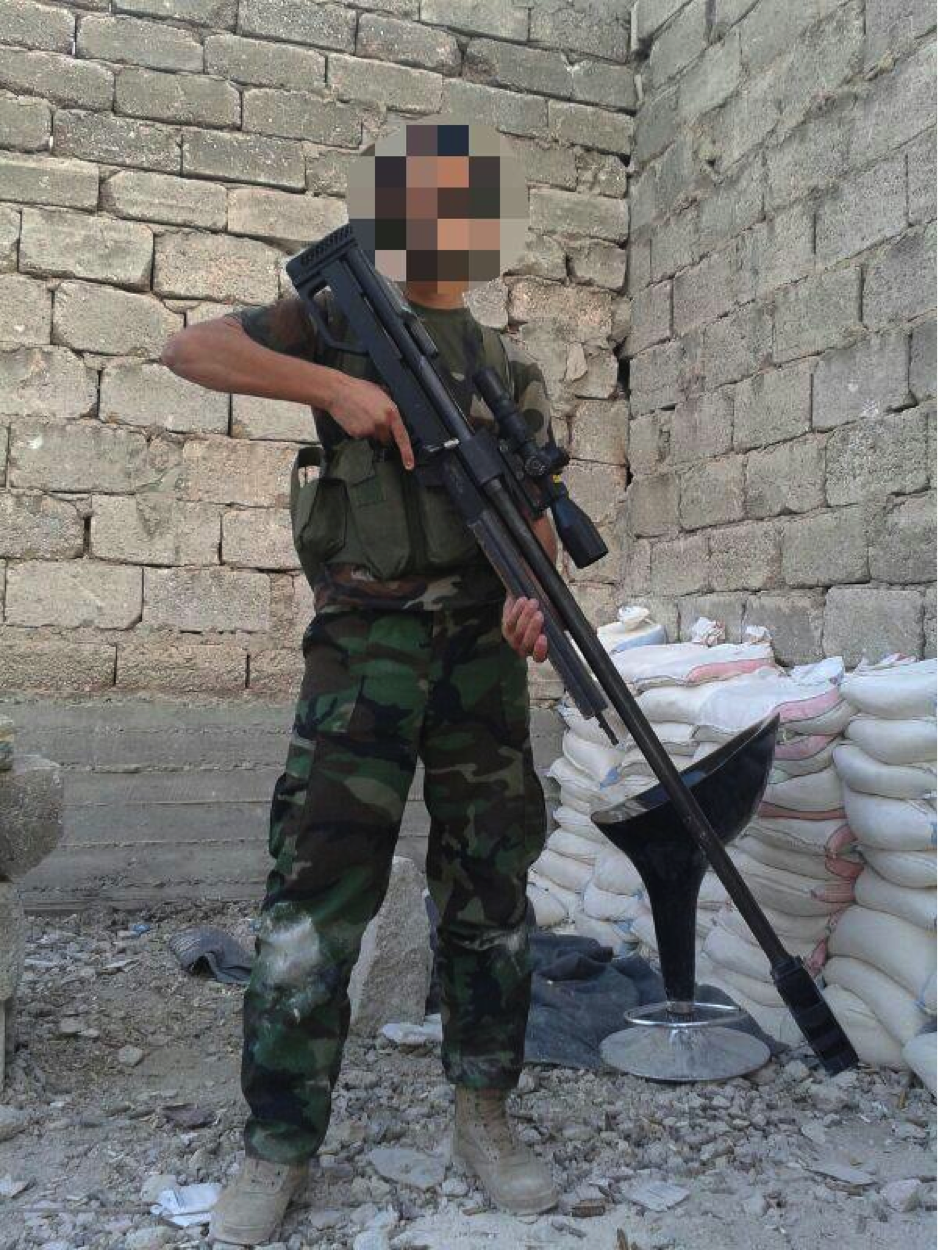
Figure 16: A Shia fighter from an unnamed militia group is shown with the HS. 50-type rifle.
[1] The Oryx Blog has an excellent post on HS. 50-type rifles in Syria: https://spioenkop.blogspot.com/2013/04/syria-and-her-hs50s.html. The post is from April 27, 2013 and pictures of Liwa’a Abu Fadl al-Abbas members with the rifle.
[2] See: https://www.telegraph.co.uk/news/worldnews/1542559/Iraqi-insurgents-using-Austrian-rifles-from-Iran.html
[3] See: https://brown-moses.blogspot.com/2013/04/anti-material-rifles-in-syria.html. See also: https://www.thefirearmblog.com/blog/2012/07/16/mysterious-iranian-50-cals-part-3/. This post by The Firearms Blog should also be read when assessing the rifle in question.
[4] See: https://www.facebook.com/permalink.php?story_fbid=477563188953409&id=174927625878471.
[5] See: https://www.dailytelegraph.com.au/news/opinion/taliban-remain-in-fear-of-lethal-strikes-writes-chris-masters/story-e6frezz0-1226504862496
New statement from Jabhat al-Nuṣrah in Lebanon: "Targeting the Strongholds of Ḥizb Irānī With Ten Grad Rockets in the Hermel Region of Lebanon"
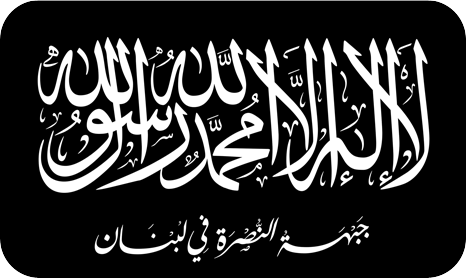
Click the following link for a safe PDF copy: Jabhat al-Nuṣrah in Lebanon — “Targeting the Strongholds of Ḥizb Irānī With Ten Grad Rockets in the Hermel Region of Lebanon”
___________
To inquire about a translation for this statement for a fee email: [email protected]
Check out a new report I co-authored for the Washington Institute for Near East Policy: "No Good Outcome: How Israel Could Be Drawn into the Syrian Conflict"
NOTE: The chapter I wrote I completed in May. The beginning of my piece starts on page 14.
–
![]()
Given the complexities and dynamics of the Syrian conflict, it is distinctly possible that Israel could be drawn into the fighting. Perhaps more important, the risk of spillover will likely extend years into the future, since the war’s aftermath will not include near-term peace between Syria and Israel. How can Washington help minimize this risk and the attendant strategic threat of increased regional instability and escalation?
In this study, seven Washington Institute experts address this question from all angles, assessing how Iran, Hezbollah, jihadist groups, and other actors might instigate or respond to Israeli involvement during the war or afterward. They also discuss the potential U.S. role in hastening the war’s end, assisting vetted rebel units, preventing the proliferation of strategic weapons, and related efforts.
Click here to read the entire report.
Hizballah Cavalcade: Sariyya al-Tali’a al-Khurasani: A New Combat-Tested Shia Militia in Syria
NOTE: For prior parts in the Hizballah Cavalcade series you can view an archive of it all here.
—
Sariyya al-Tali’a al-Khurasani: A New Combat-Tested Shia Militia in Syria
By Phillip Smyth ([email protected])
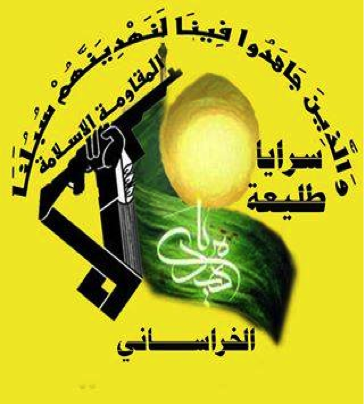
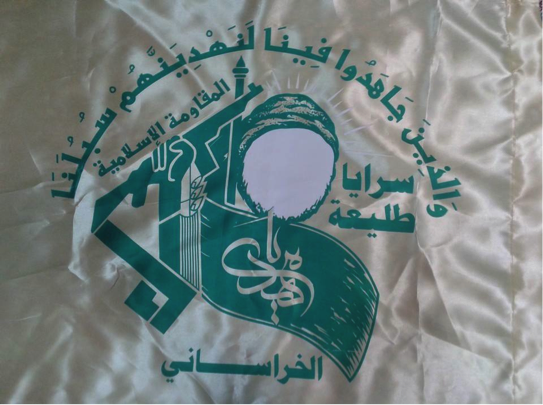
Figure 1: The STK’s logo (left) and flag (right). The logo includes Iran’s Islamic Revolutionary Guard Corps’s symbol. A verse from the Quran, Quran 29:69 meaning, “And those who strive for us [in jihad] we will surely guide them to our [Islamic] ways”. Over the rifle the phrase reads, “The Islamic Resistance”.
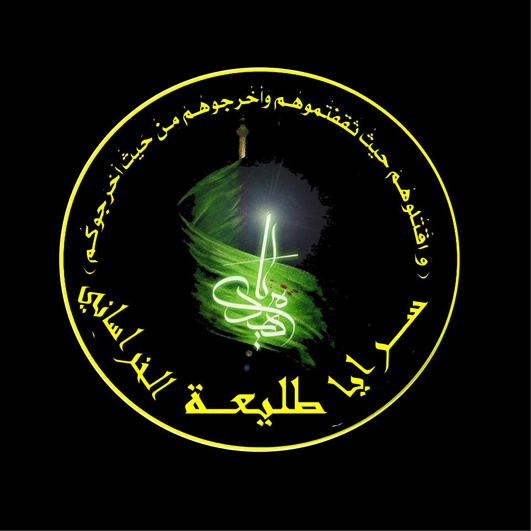
Figure 2: Another logo used by the STK.
In late September, Sariyya al-Tali’a al-Khurasani (STK or The Vanguards of Khurasani Unit), also referred to as the Khurasani Unit, first made itself known to the world via Facebook. The group may draw their name from Abu Muslim al-Khurasani (A.K.A. Abu Muslim), an 8th century military leader who helped depose the Sunni Umayyad dynasty’s rule over the early Islamic caliphate.[1] The STK also claims to be based out of Arbil, Iraq, the capital of Iraqi Kurdistan. According to the Khurasani Unit’s own releases, it appears to exclusively operate in a military function in rural areas outside of Damascus, Syria.
Technically, the STK was first announced on September 24, 2013 on Facebook. However, it is possible the group’s first page was made “private” and another mirror page was setup in its stead. Thus, the initial announcement of the group’s existence was hidden. The mirror page which first helped formally announce STK’s creation was made on October 8, 2013. Both pages hold unique images from the group and promote the same general messages. As with other Shia militias in Syria, the group claims to defend the Sayyida Zaynab shrine and promotes general pro-Iranian pan-Shia narratives. The promotion of Iranian Supreme Leader Ayatollah Ali Khamenei and of their own Shia identity through the posting of photos showing Shia clerics in their ranks is a regular theme.
Most of the STK’s imagery was posted in October. In fact, there were days when eight new images were posted on both of their Facebook sites. STK has also released extensive footage showing its fighters in combat inside Syria. This footage has included numerous photos of its fighters, including those of wounded members, and videos of the group engaged in combat. A particular feature of STK propaganda has been images showing the fighters posing with the group’s flag. Only the Badr Organization’s Syria unit, Quwet Shahid Baqir al-Sadr, has also engaged in extensive posting of images featuring their organization’s flag with their fighters in Syria.
While Shia Islamist organizations fighting in and contributing fighters to Syria have done little to hide their connections to Iran, STK went the extra step and actually repackaged Iran’s Islamic Revolutionary Guard Corps’ logo as their own. Their blatant promotion of Iran’s Supreme Leader in many of their posts leaves no illusions to which Shia clerical leader or ideology to which the group swears loyalty.
Unlike other Shia militias (E.G. Liwa’a ‘Ammar Ibn Yasir, Liwa’a al-Imam al-Hasan al-Mujtaba, and Liwa’a Abu Fadl al-Abbas) fighting in Syria, the STK has not stated which (if any) Iraqi Shia organizations have contributed fighters to the group.
The number of fighters in STK’s ranks is unknown, though their leadership has been identified. STK, has been reported to be fighting around Damascus’s Sayyida Zaynab Shrine and in the rural area near Damascus called Ghouta. Videos showing engagements featuring their fighters went viral among Syrian rebel supporters and Shia militia supporters online. In part, this has been due to the fact that their videos appear less staged (e.g. Shia militiamen firing a few rounds from a sniper rifle) and are much longer than others produced.
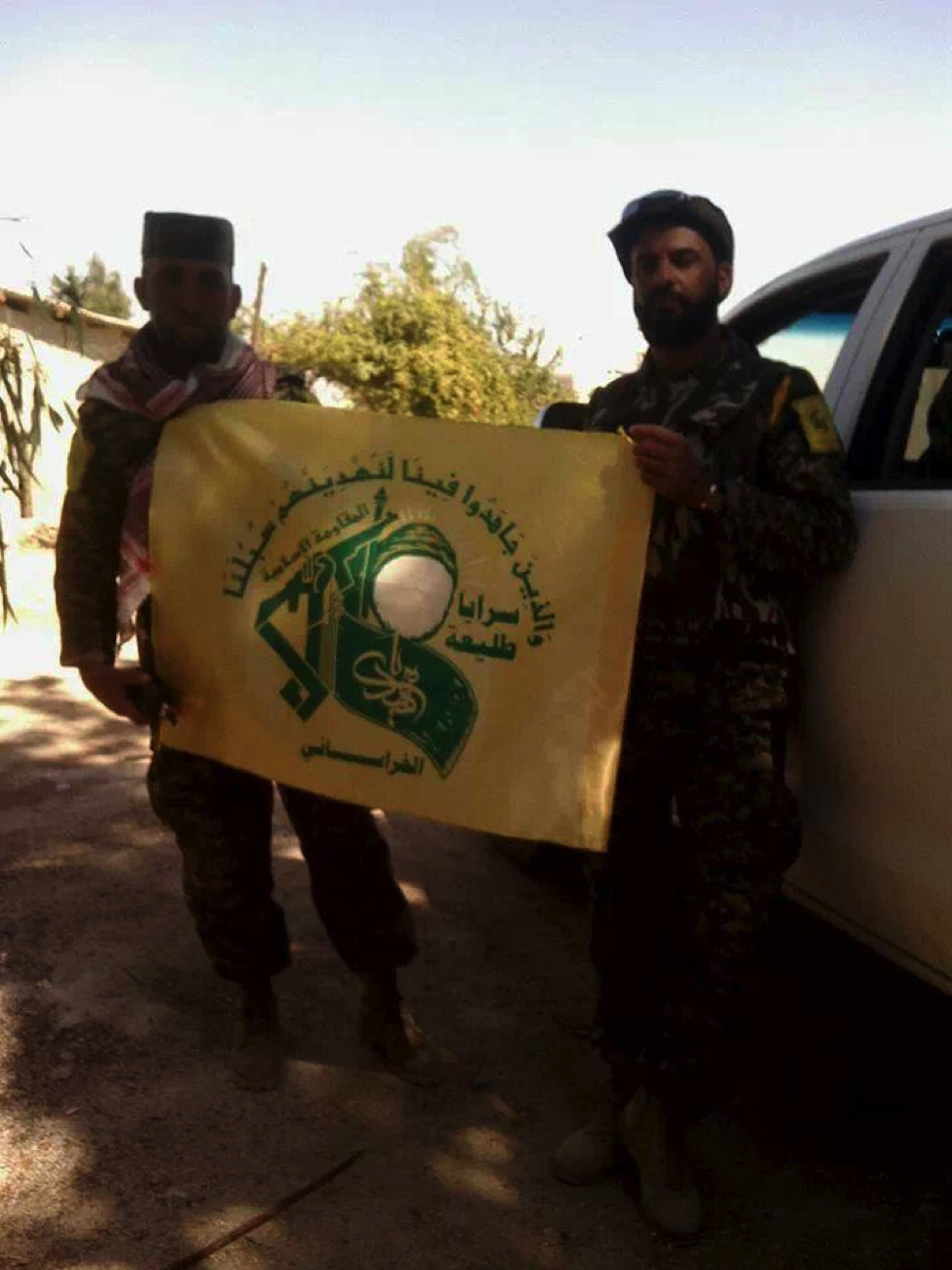
Figure 3: Two STK fighters pose in front of a truck holding the organization’s flag.
Ali al-Yasiri: The STK’s Commander
The immediate announcement of commanders for specific Shia fighting units in Syria is usually not a common theme. Less than two weeks after the first Facebook post made by the STK, it was announced by the group that their commander was named Ali al-Yasiri. Yasiri is shown in many photographs posted by the organization on its Facebook pages. Yasiri was also shown in photographs featuring Sayyid Muhammed Jawad al-Madrasi, a Shia cleric.[2]
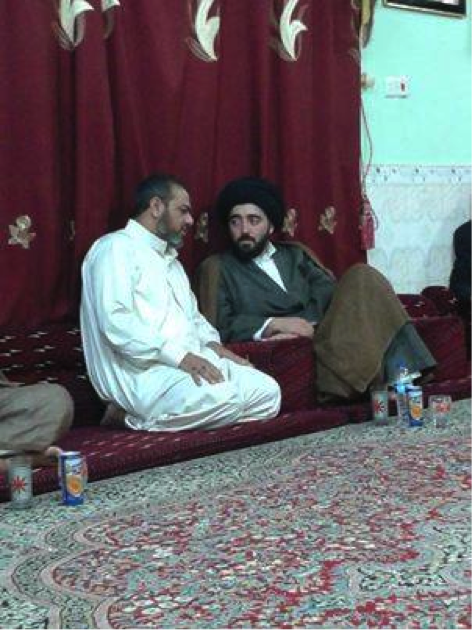
Figure 4: Ali Yasiri is shown with Sayyid Jawad al-Madrasi. On Facebook, the group identified the cleric as, “Ajwad Madrasi”.
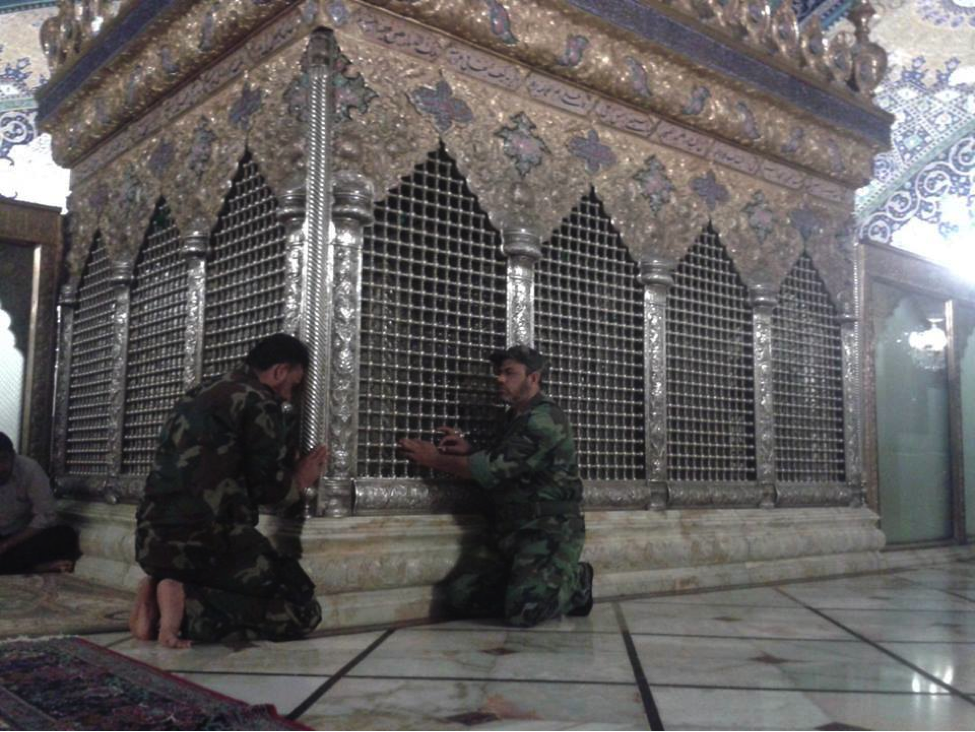
Figure 5: Yasiri and another unnamed STK fighter pose at Zaynab’s tomb.

Figure 6: Yasiri and an unnamed fighter pose with an unnamed cleric at Zaynab’s tomb. All three figures have been featured in other photos released by STK.
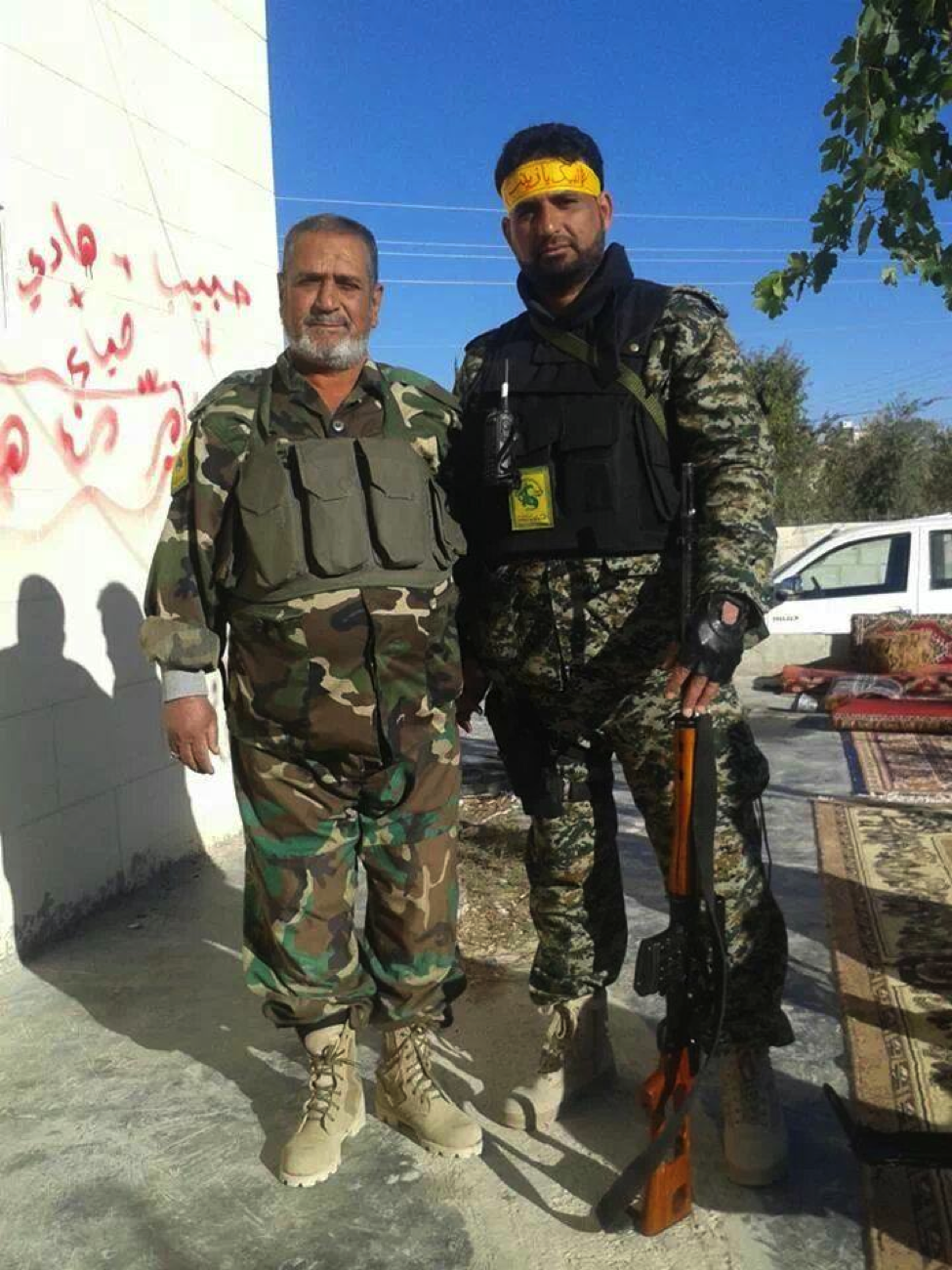
Figure 7: Yasiri (left) and the same unnamed fighter pose together for a photo. The fighter on the right holds an SVD type sniper rifle.
STK’s Fighters & Equipment
Little information is available on the numbers of fighters STK has operating in the field. Judging from their photographs, the group has over twenty members. The arms the group uses mimic the varieties used by other Shia militias. Most of these weapons are Kalashnikov-type rifles, SVD-type sniper rifles, RPG-7s, and the PKM-type machine guns. The group has also been recorded using light mortars in clashes in rural areas outside of Damascus.
In addition to their small-arms, the militia’s uniforms appear to include types of U.S.-style digitized camouflage. Some of the group’s uniforms include M81-type woodland camouflage and Desert Camouflage Uniform-type patterns. Also, other unidentified types of camouflage patterns have been seen on the STK’s fighters.
Interestingly, many of the same faces are featured in photographs of STK fighters. In fact, one in particular, that of a Shia Islamic cleric wearing a black turban, can be spotted in many photos of STK militiamen. His inclusion may be a way the group demonstrates their Shia Islamic identity. The Badr Organization has also included clerics in their militia photos in a similar effort.
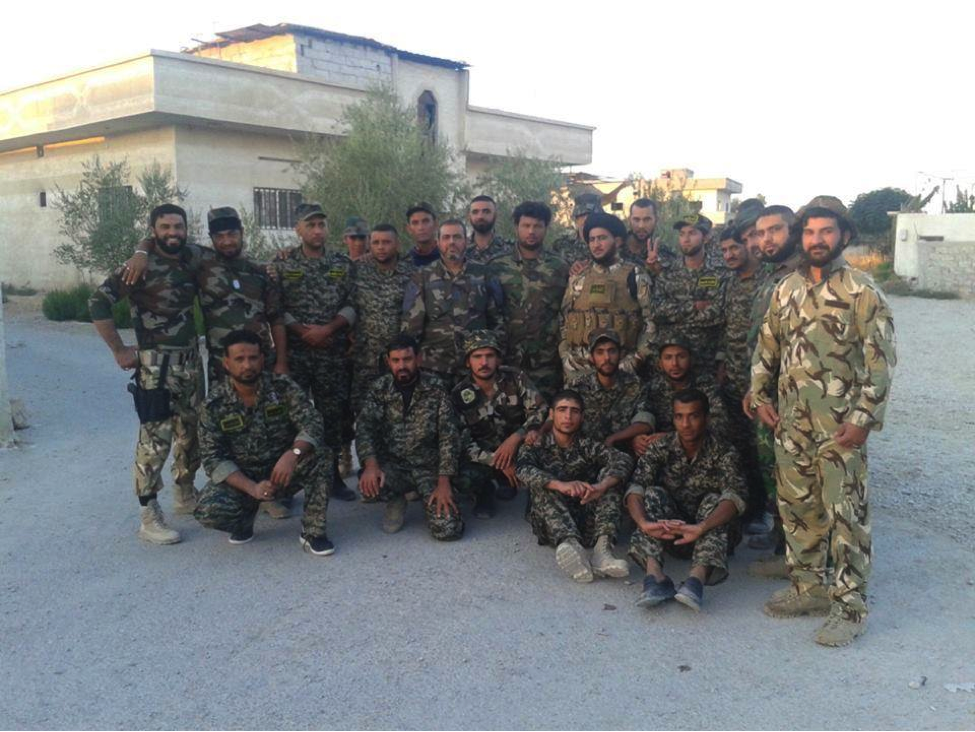
Figure 8: STK fighters pose for a photo in East Ghouta, Syria.
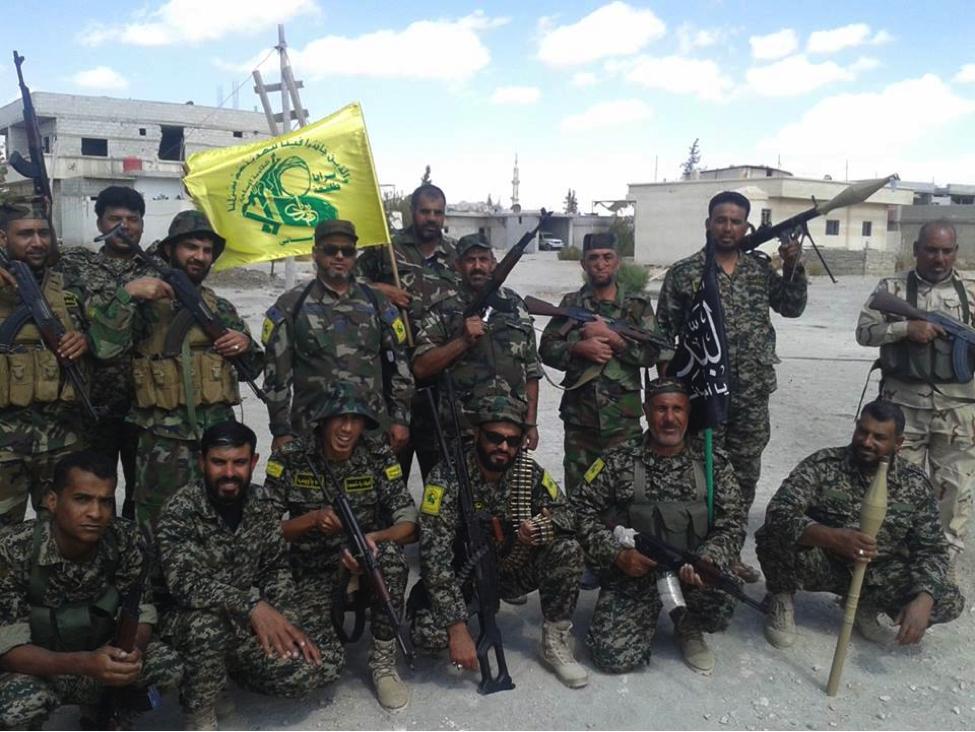
Figure 9: STK fighters pose with the group’s flag and light weapons.

Figure 10: STK fighters pose in their uniforms and headbands.

Figure 11: An STK machine gunner.
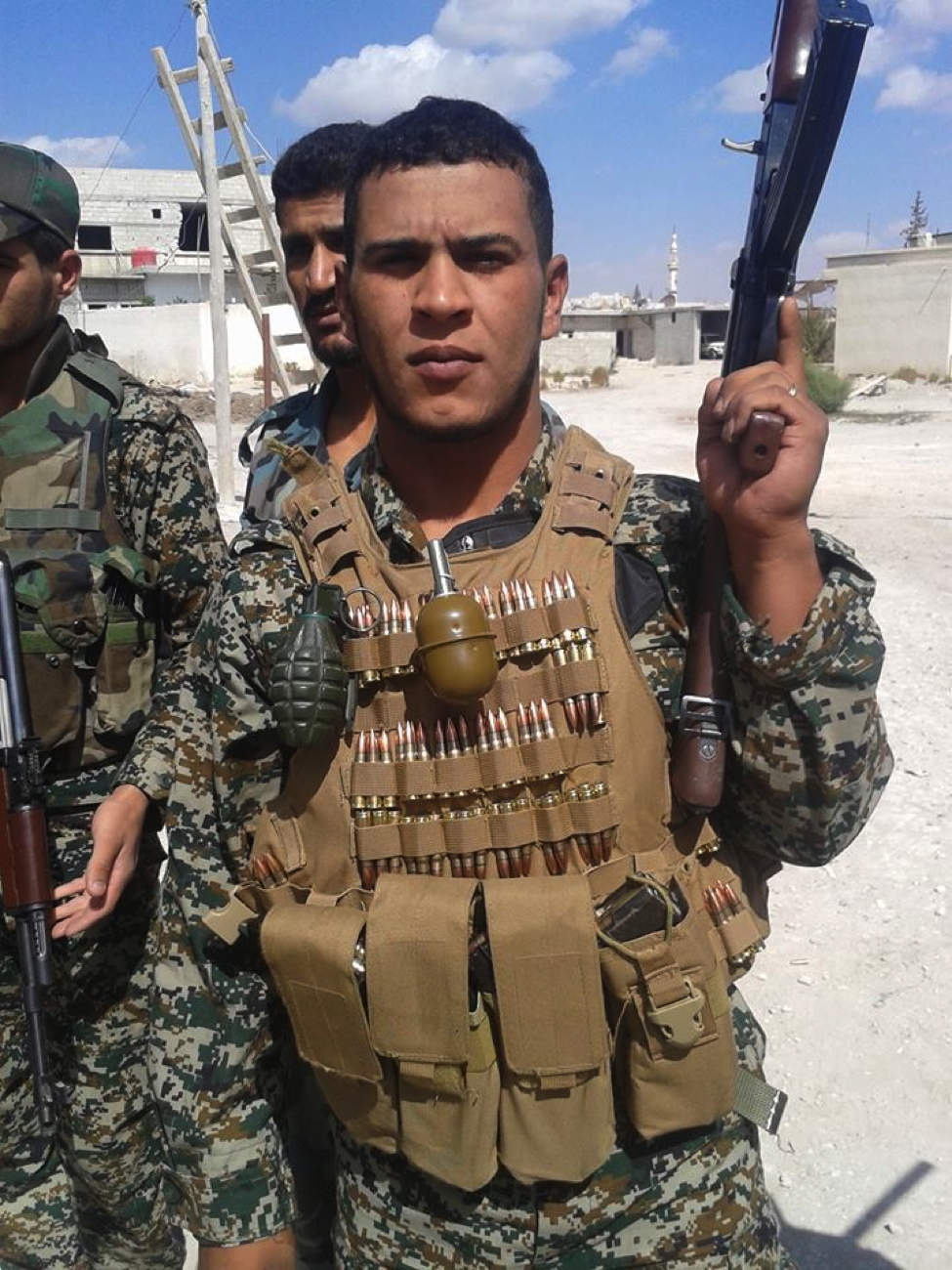
Figure 12: An STK fighter holds his rifle as he stands with other members of his organization.
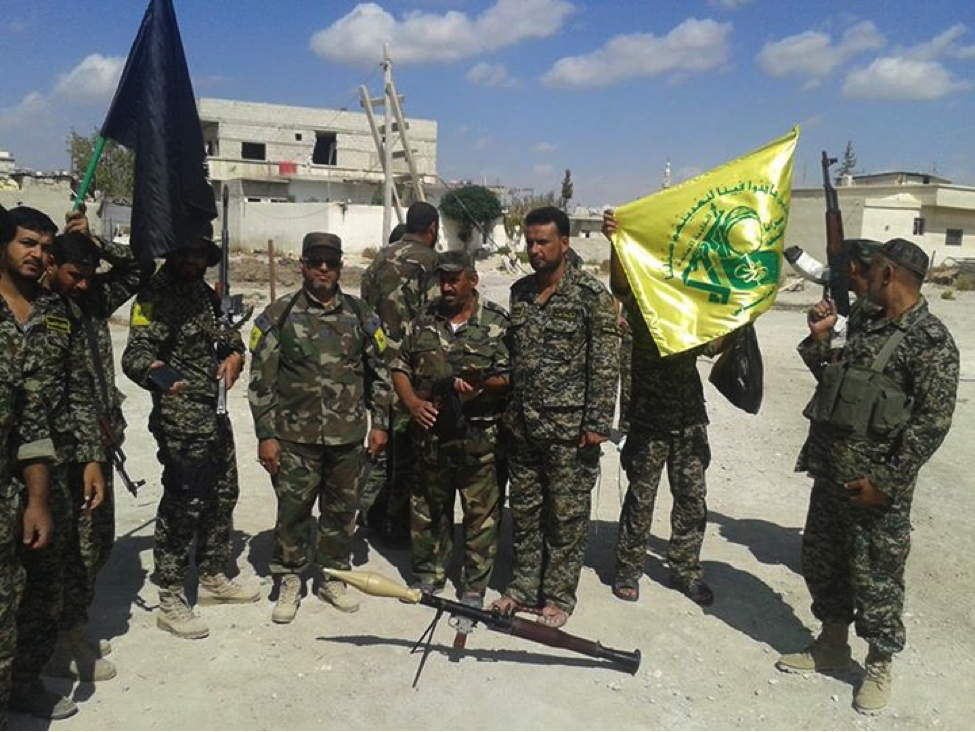
Figure 13: STK fighters pose around an RPG-7 and the group’s banner.
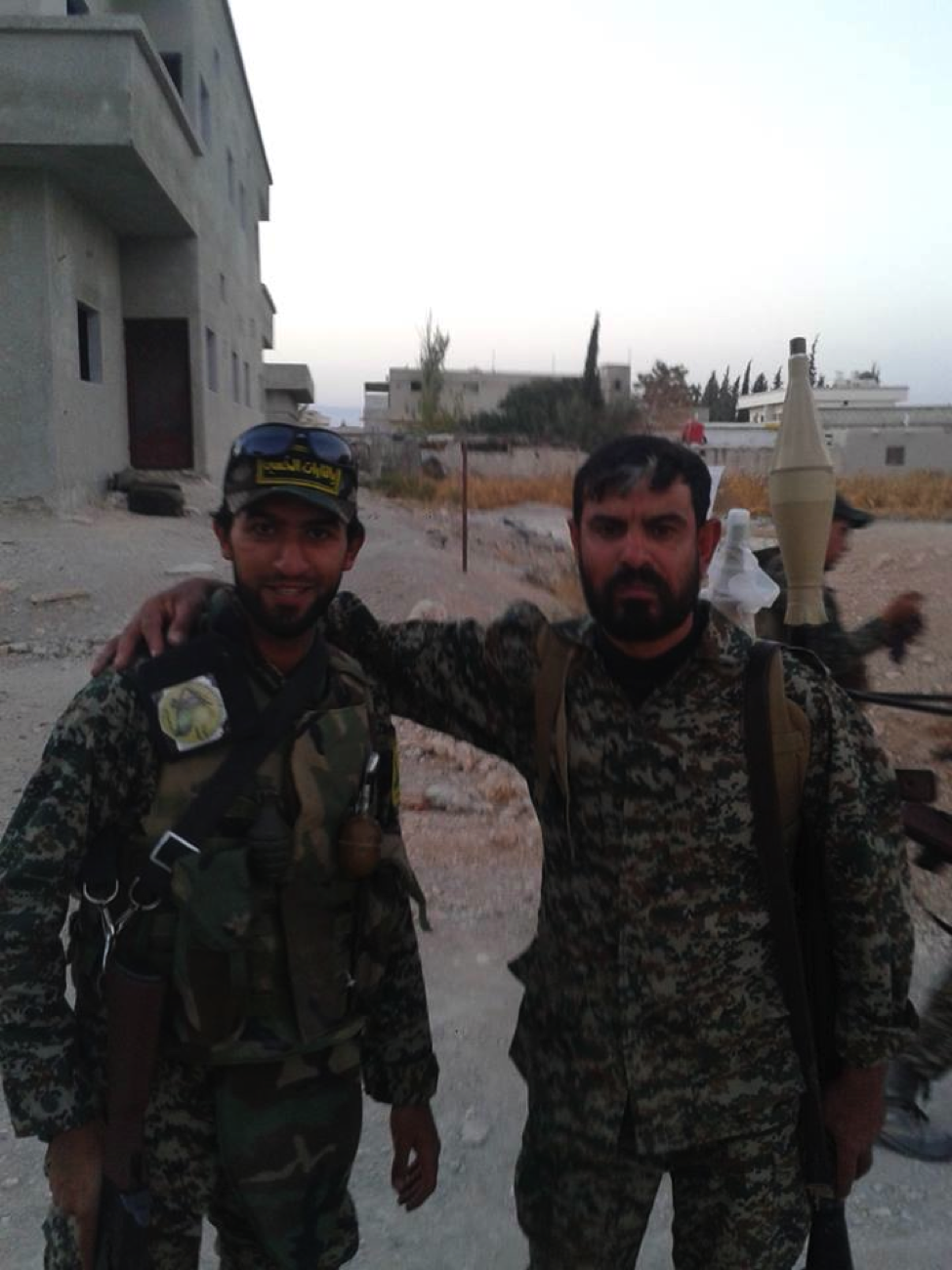
Figure 14: STK militiamen pose for the camera. The fighter on the right holds an RPG-7.
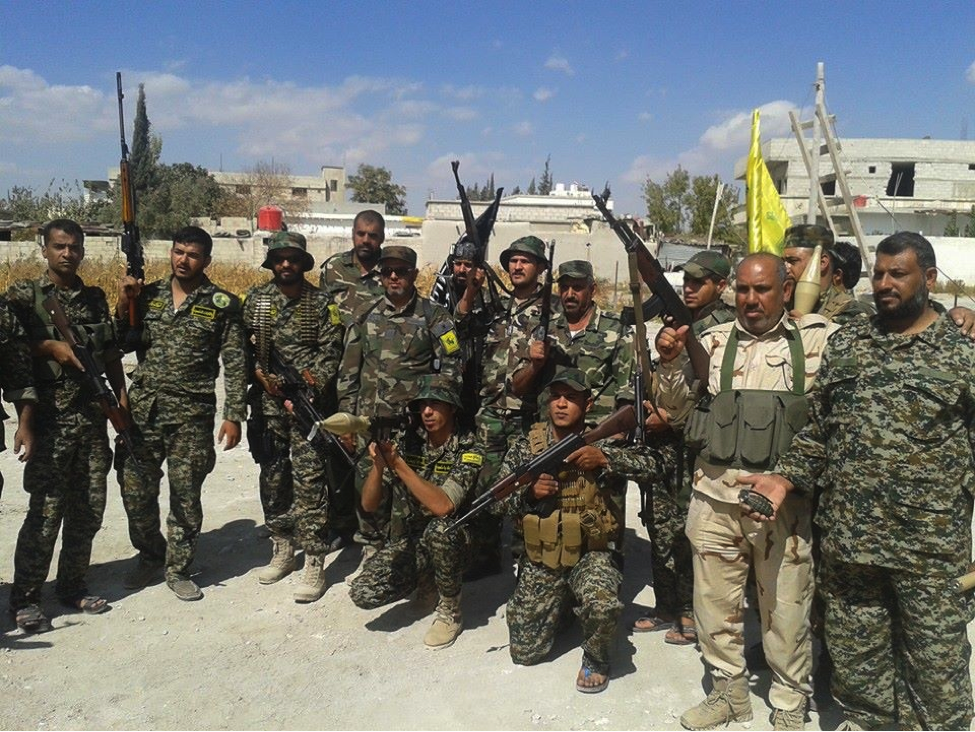
Figure 15: STK fighters stand and kneel together with their weapons as they pose for photographs.

Figure 16: Older and younger fighters sitting together in Rif Dimashq.
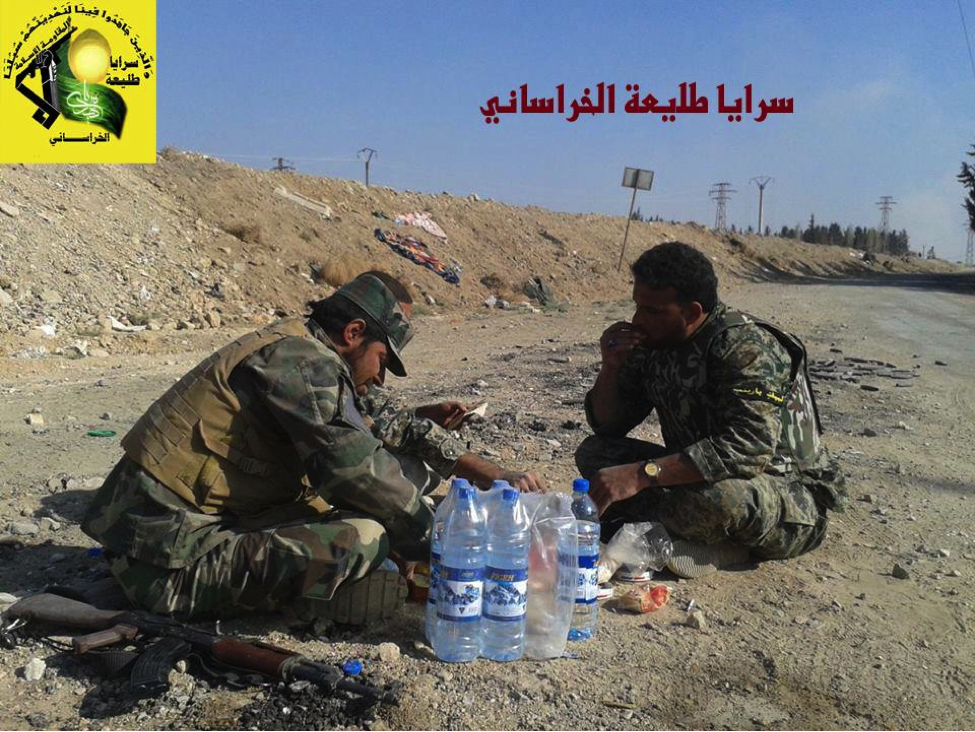
Figure 17: STK fighters take a break during fighting. The photo appears to be taken in the same area where some videos of STK combat engagements occurred.

Figure 18: STK fighters, one appearing to be a Shia cleric, hold a mixture of small-arms.
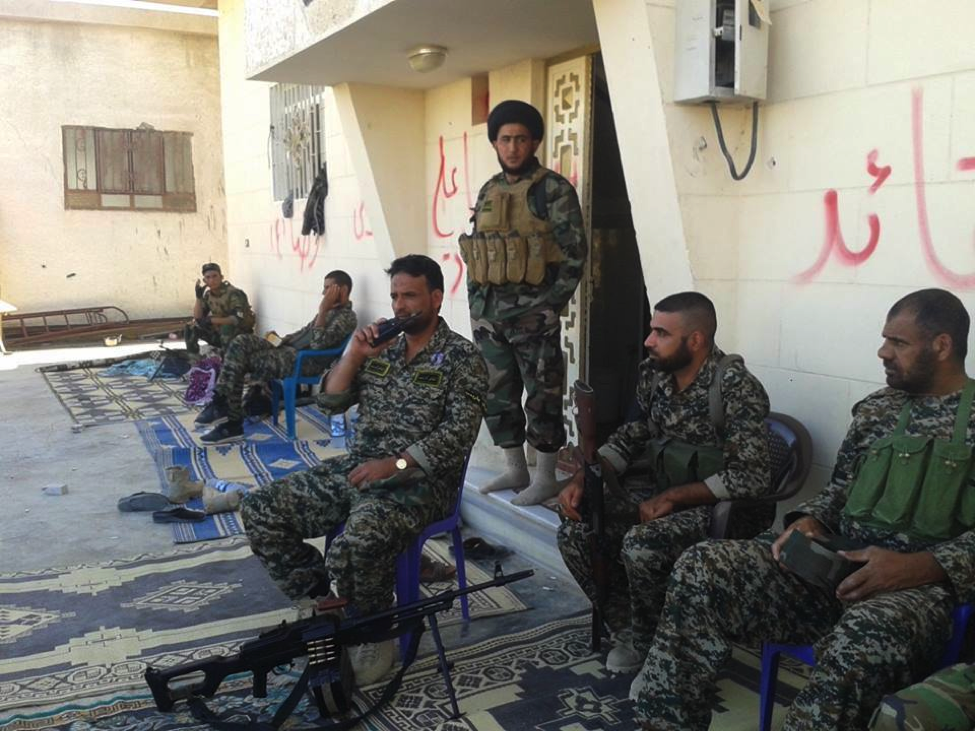
Figure 19: STK militiamen and a fighter in a black turban (signifying clerical status and descent from the Islamic Prophet Muhammed) relax in Rif Dimashq.
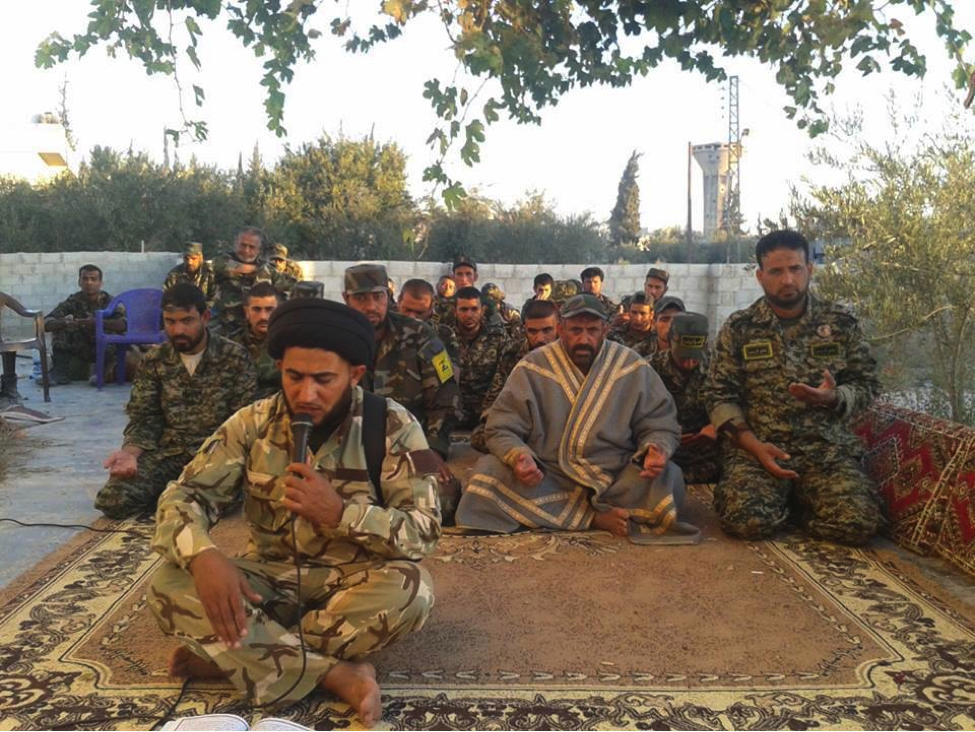
Figure 20: STK fighters at prayer time.
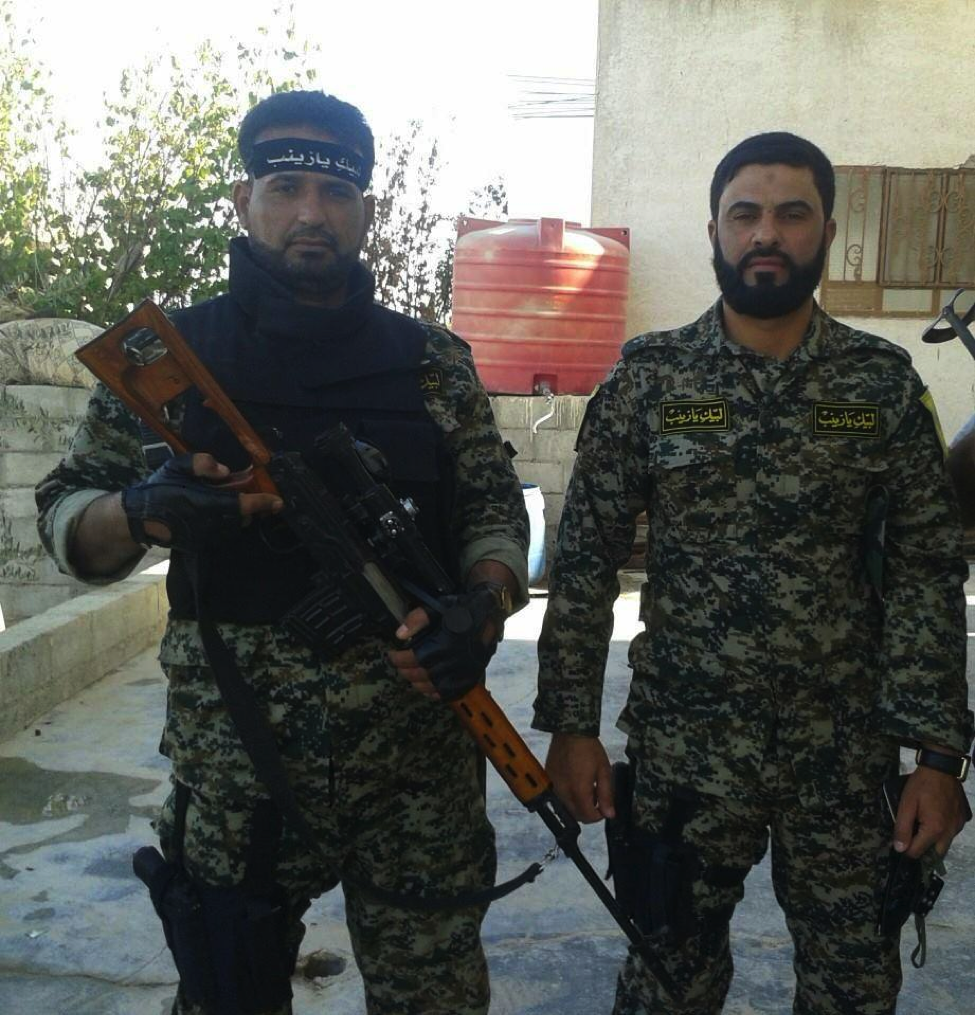
Figure 21: STK fighters. The fighter on the left has an SVD-type sniper rifle.
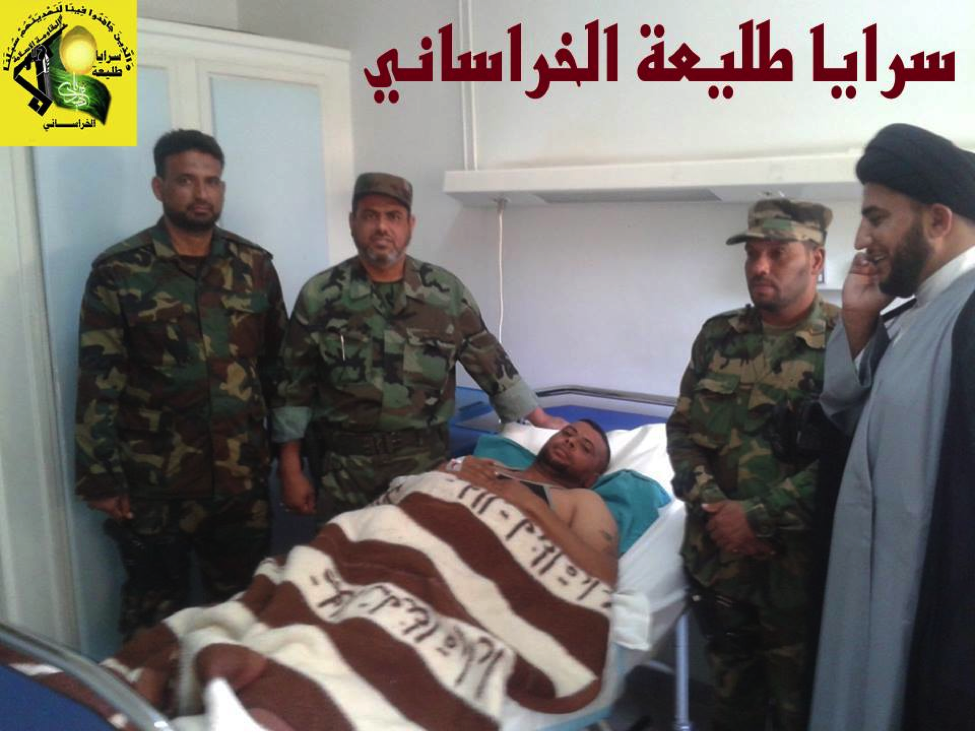
Figure 22: An injured fighter is shown with his compatriots and a Shia cleric.
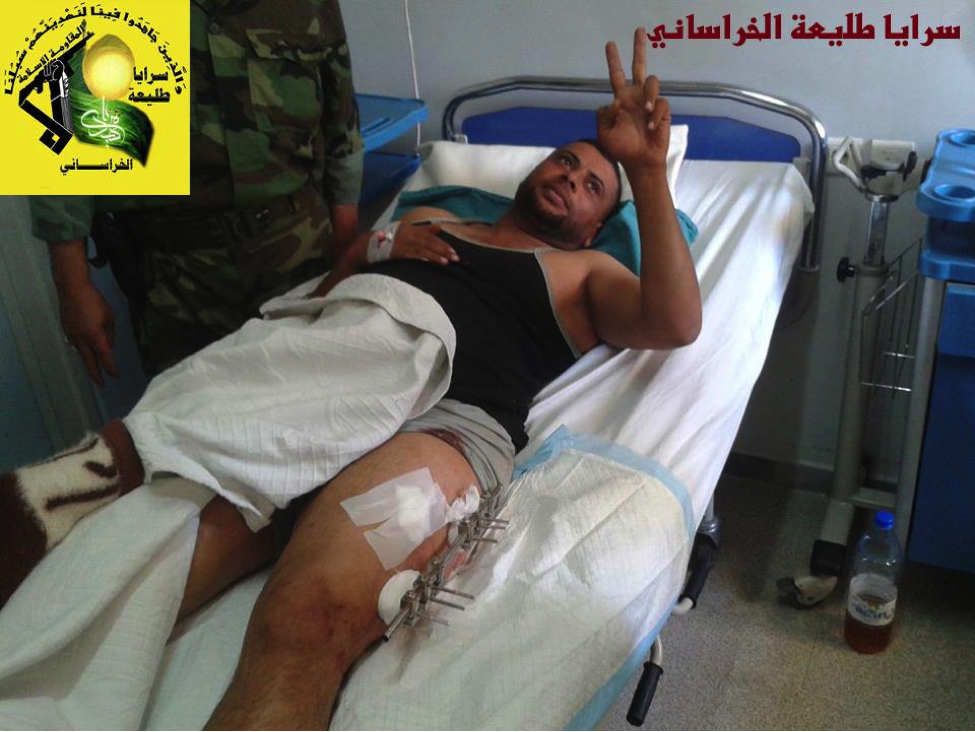
Figure 23: The same injured fighter flashes a “V for victory” symbol from his bed.
STK on Film
STK’s combat videos were first released in October and were quickly disseminated on Shia militia social media. When Syrian rebels came across the films in the weeks after their release, often the fighters were incorrectly branded as members of Liwa’a Abu Fadl al-Abbas.
The first of the videos STK released shows the group fighting from a structure in Rif Dimashq. Save for the caption and titles on the videos posted, there was nothing which identified the fighters in the film as members of STK. In two other combat videos it show STK militiamen operating in East Ghouta section of Rif Dimashq, firing mortars, RPGs, rifles, and other weapons.
[1] Matthew S. Gordon, The Rise of Islam, (Westport, CT: Greenwood Press, 2005), Pp. 47-48. [2] See al-Madrasi’s Facebook page: https://www.facebook.com/pages/%D8%A7%D9%84%D8%B3%D9%8A%D8%AF-%D9%85%D8%AD%D9%85%D8%AF-%D8%AC%D9%88%D8%A7%D8%AF-%D8%A7%D9%84%D9%85%D8%AF%D8%B1%D8%B3%D9%8A/178591738857323 The page has not been updated since 2012 and little information is available about the cleric online.
Hizballah Cavalcade: The Badr Organization’s Syrian Expeditionary Force: Quwet al-Shahid Muhammed Baqir al-Sadr
NOTE: For prior parts in the Hizballah Cavalcade series you can view an archive of it all here.
–
The Badr Organization’s Syrian Expeditionary Force: Quwet al-Shahid Muhammed Baqir al-Sadr
By Phillip Smyth ([email protected])
Click here for a PDF version of this post
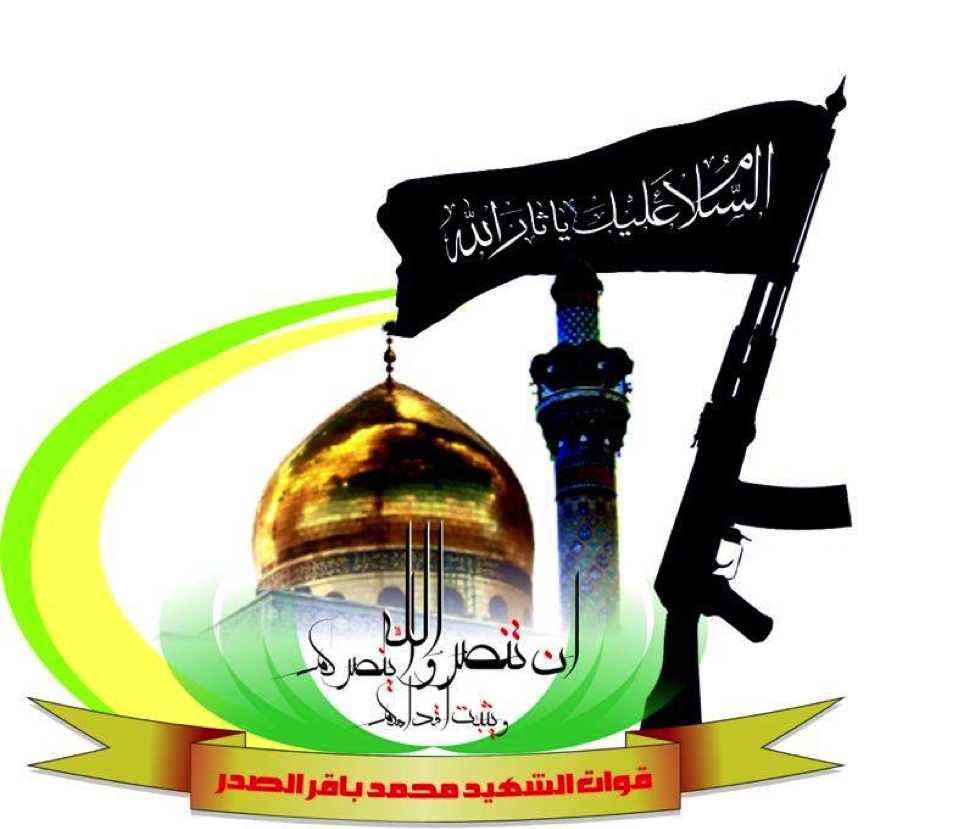
Figure 1: The official logo for the Badr Organization’s Quwet al-Shahid Muhammed Baqir al-Sadr.
On July 13, 2013, Iraq’s Iranian-backed Badr Organization announced they had forces operating in Syria. Their announcement, made on a caption on the group’s “Military Wing” official Facebook page, noted that 1,500 Badr Organization fighters had been sent to Syria. Later, on July 21st, the Badr Organization announced their first casualty, Abu Dhar al-Sa’wdi. Seven days later, it was announced another Badr Organization fighter, Abu Sajad al-Hawli, was killed in Syria and that his funeral was held in Iraq (see below).
With the official July 28th declaration of Hawli’s death came the proclamation he was a member of Quwet al-Shahid Muhammed Baqir al-Sadr (BO-QSMBS). Though, at the time, the organization was simply referred to as, Quwet al-Shahid al-Sadr. The announcement of this Badr Organization sub-grouping followed the lead of their ally, the Iranian-backed Iraqi Shia Islamist organization, Asa’ib Ahl al-Haq (AAH) and their Liwa’a Kafeel Zaynab. Liwa’a Kafeel Zaynab was setup specifically to fight in Syria as a type of AAH expeditionary force. In effect, the BO-QSMBS serves a similar role.
BO-QSMBS’s Facebook page was started on August 19, 2013 while their official YouTube station was established on February 28, 2013. In both cases the admin name of “Abo Alhassan” was used and regularly finds a mention on photos and YouTube clips posted by the group. The first original photos which were not simultaneously or previously posted on other official, semi-official, or mirror Badr Organization Facebook pages began to appear on August 25, 2013. However, most of BO-QSMBS’s causalities have been posted on the official Badr Organization Military Wing’s Facebook page, as opposed to the BO-QSMBS Facebook site.
BO-QSMBS is named after the late Grand Ayatollah Muhammed Baqir al-Sadr, the former leader of the Da’wa Movement in Iraq. Sadr, a Najaf, Iraq-based cleric, was instrumental in assisting with the creation of the Islamist ideology which would later be put into place in post-1979 revolutionary Iran by the late-Grand Ayatollah Khomeini. Sadr’s radical politics led him to be known by the name, “Khomeini of Iraq”.[1] In 1980, Sadr and his sister were both executed by the regime of Saddam Hussein.
BO-QSMBS has yet to post details about where they are fighting in Syria. However, based on their posted photographs, it is clear they are stationed in Damascus. As with other Shia Islamist organizations fighting in Syria, it is likely they have been deployed to fight on the East Ghouta front.
BO-QSMBS’s Weapons Systems
BO-QSMBS fighters utilize similar weapons systems as other Iraqi Shia organizations contributing fighters to Syria and Lebanese Hizballah. RPG-7s, PKM machine guns, SVD-style sniper rifles, Kalashnikov-pattern assault rifles, and M16-style assault rifles are the primary small-arms types featured by BO-QSMBS. M16-pattern rifles, particularly the M4 carbine model, appear to be fitted with optics, which may mean they are used in a designated marksman role. Additionally, the M16-type rifles are featured in BO-QSMBS’s posts about combat units more often than they are with other Shia militias operating in Syria.
It is possible that the group is using the Iranian-copy of the Austrian Steyr HS.50, a .50 caliber, long-range anti-material sniper rifle.[2] This rifle has been shown in the hands of many different Iraqi Shia organizations operating in Syria and Lebanese Hizballah.
As with Asa’ib Ahl al-Haq’s Liwa’a Kafeel Zaynab, the Badr Organization’s fighters in Syria are shown using pickup trucks (possibly the same pickup trucks as AAH’s men. See the videos on the Hizballah Cavalcade post Asa’ib Ahl al-Haq’s Liwa’a Kafeel Zaynab).
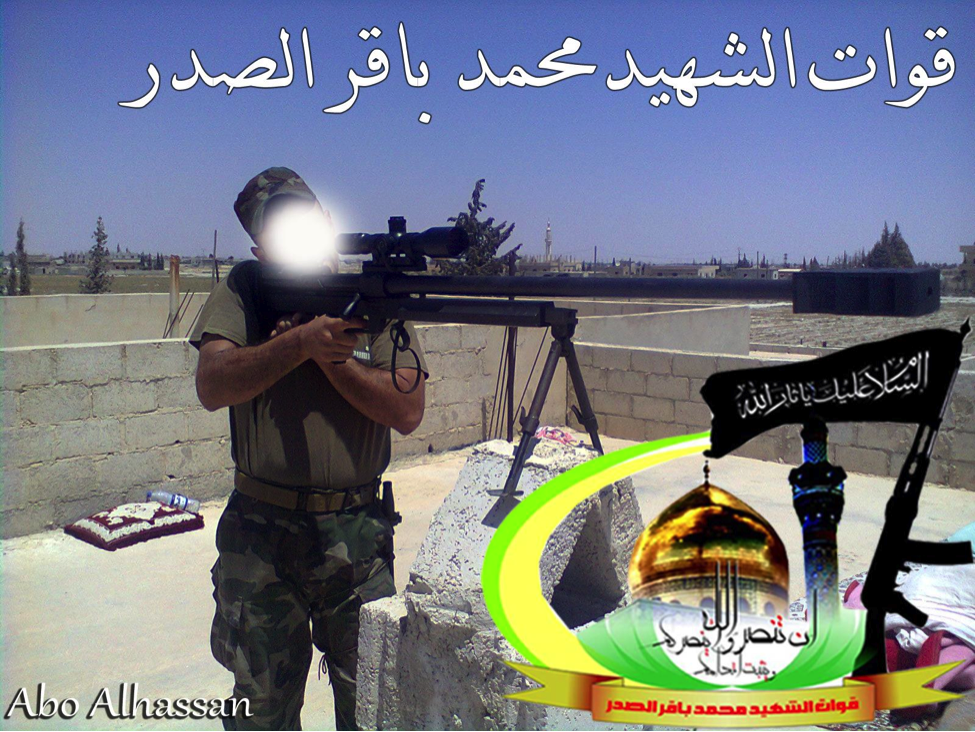
Figure 2: A BO-QSMBS fighter with an HS.50 type rifle.
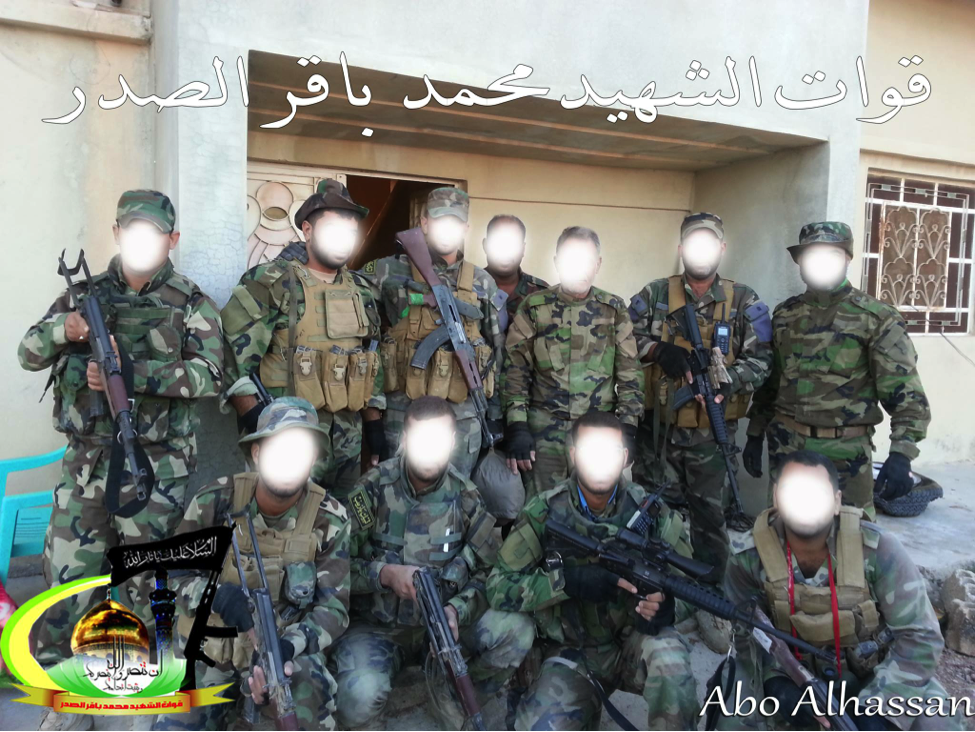
Figure 3: A combat unit of BO-QSMBS fighters. Note the 2 optics-mounted M4-style rifles.

Figure 4: Two Badr fighters pose in front of the Sayyida Zaynab shrine in Damascus. The fighter on the right is holding an M4-type carbine (the same pictured in the photo above).
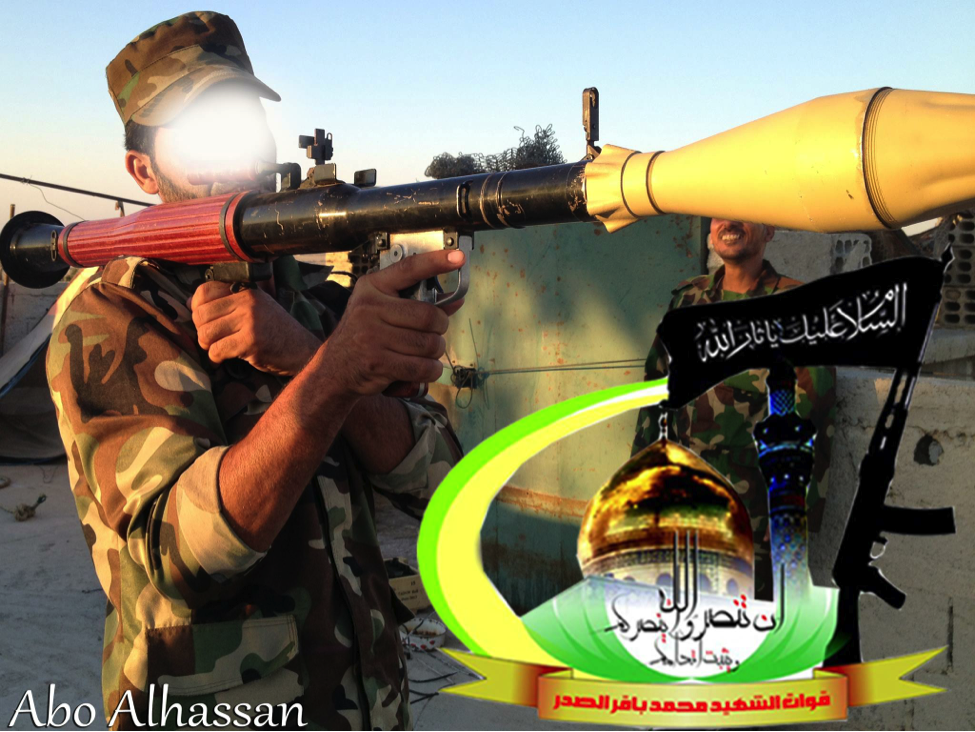
Figure 5: A BO-QSMBS fighter with an RPG-7.
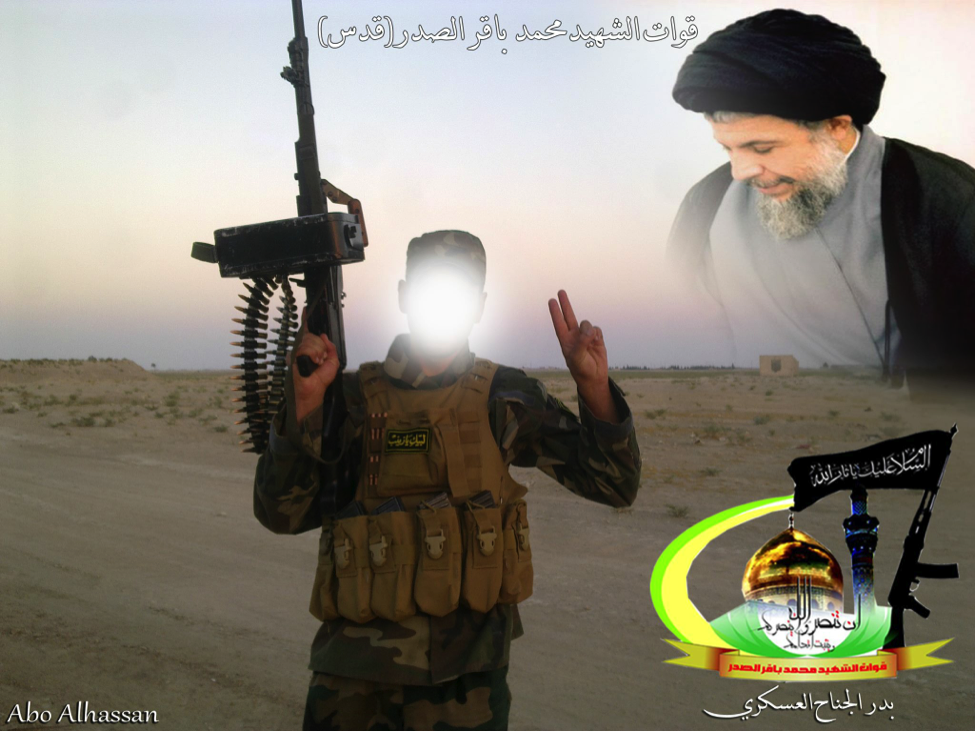
Figure 6: A BO-QSMBS fighter holds a PKM machine gun in aloft as the late Grand Ayatollah Muhammed Baqir al-Sadr looks down upon him.
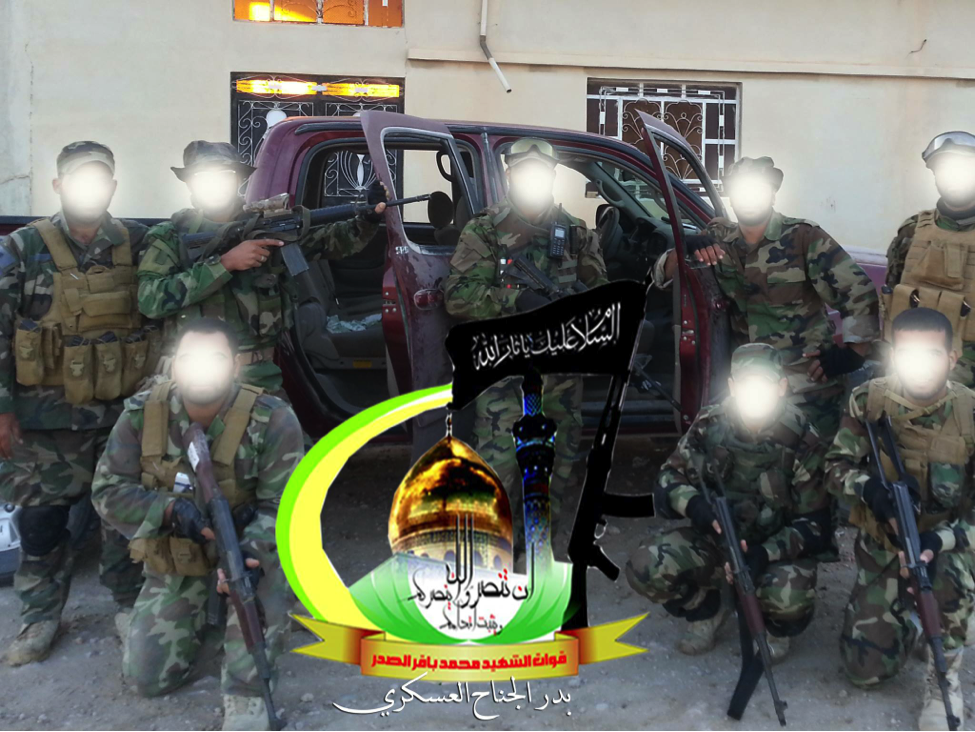
Figure 7: Badr fighters pose in front of a red pickup truck.
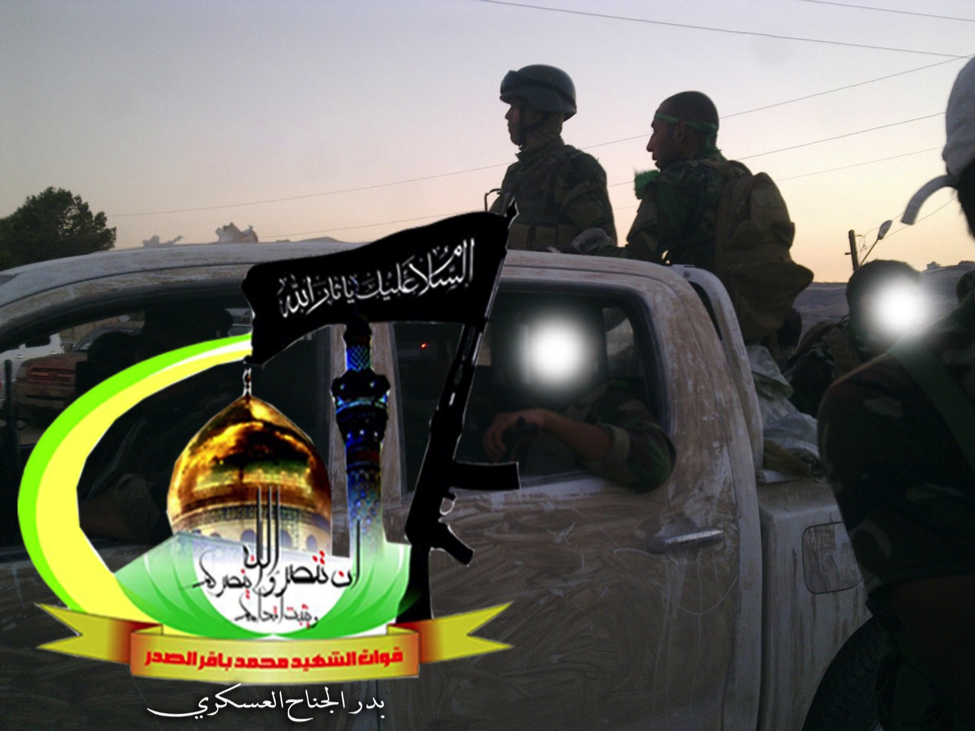
Figure 8: Badr fighters ride into battle in a mud coated white pickup truck.
BO-QSMBS’s Messaging to the Shia
BO-QSMBS has posted photographs attempting to show that Shia Islamic clerics have joined them in their fight inside Syria. The effect of these images may be to show the broader Shia community that there is broad religious support for the group’s actions in Syria.
The interconnectedness between the Badr Organization, Shia Islamist Iran and Lebanese Hizballah is also a regular feature on their social media webpages. One BO-QSMBS photo claimed to show Lebanese Hizballah fighter, Mahdi Yaghi and a fighter from the BO-QSMBS. Photos of Iranian Supreme Leader Ali Khamenei and of Iranian Islamic Revolutionary Guard Corps commander, Qassem Suleimani are regular features on BO-QSMBS’s Facebook page.
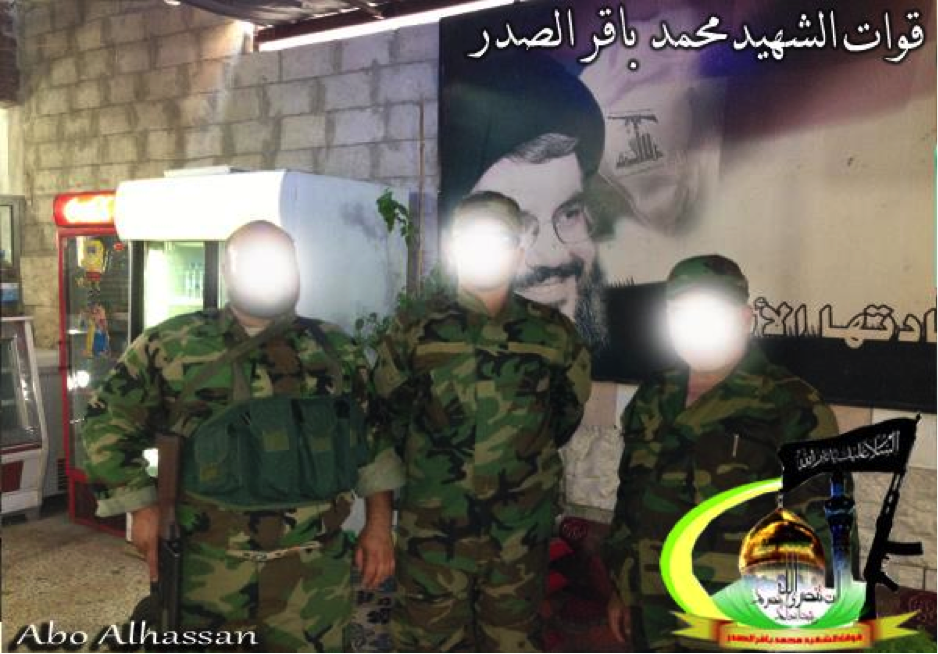
Figure 9: BO-QSMBS fighters stand in front of soda machines and a poster featuring Lebanese Hizballah leader, Sayyid Hassan Nasrallah.
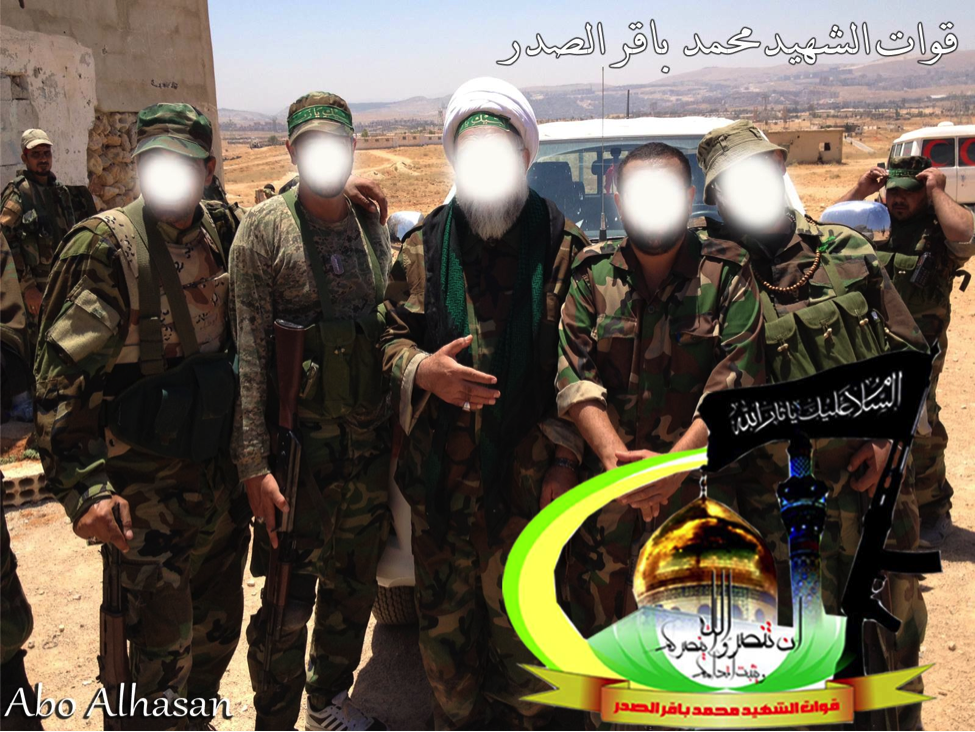
Figure 10: A white turban wearing Shia cleric wearing combat fatigues stands in the center of BO-QSMBS fighters.

Figure 11: A black turbaned (denoting that he is descended from the Islamic Prophet Muhammed) Shia Islamic cleric stands in combat fatigues with Badr fighters.
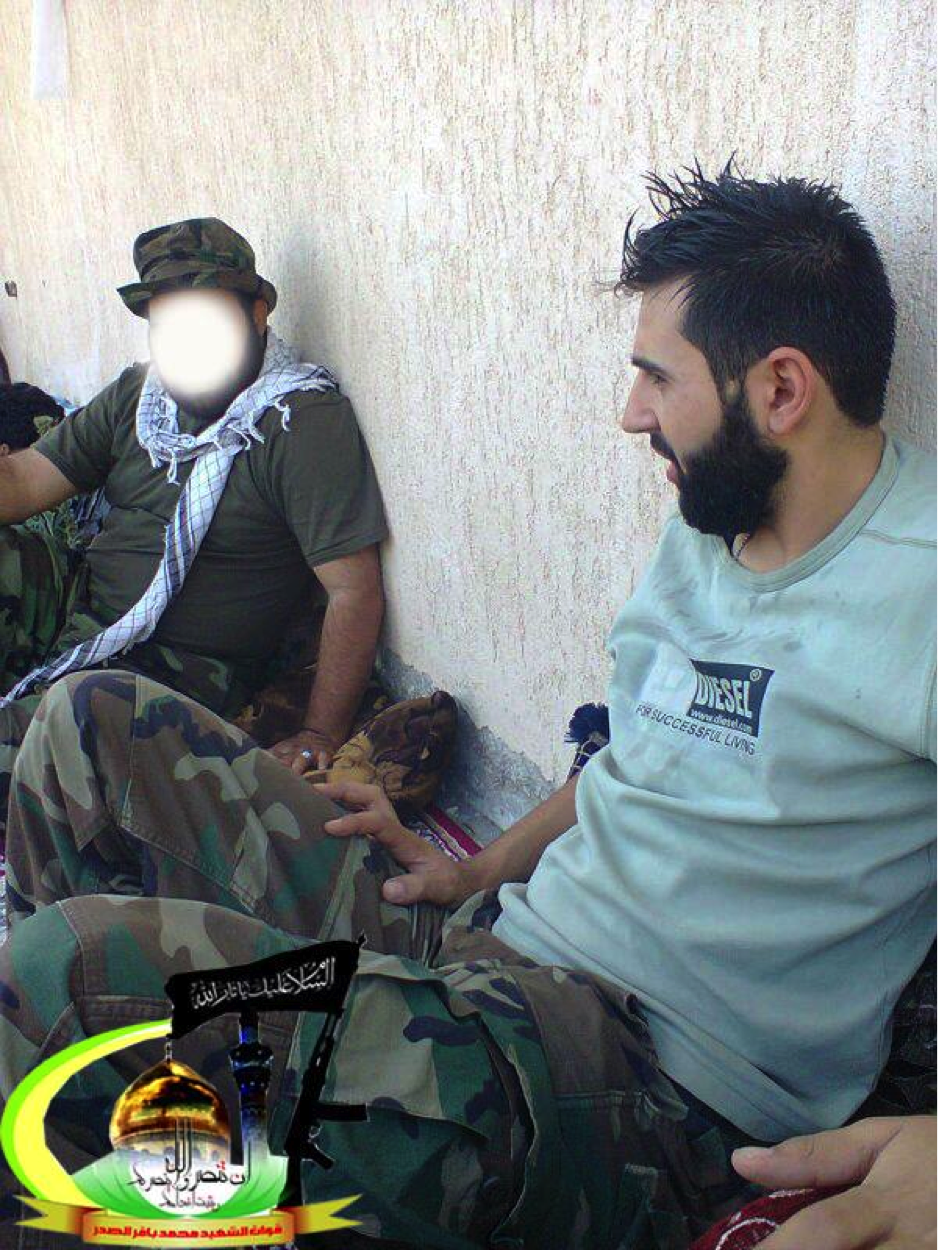
Figure 12: BO-QSMBS claims this photo shows one of their fighters and Lebanese Hizballah’s Mahdi Yaghi. Yaghi was announced killed in Syria in October, 2013.
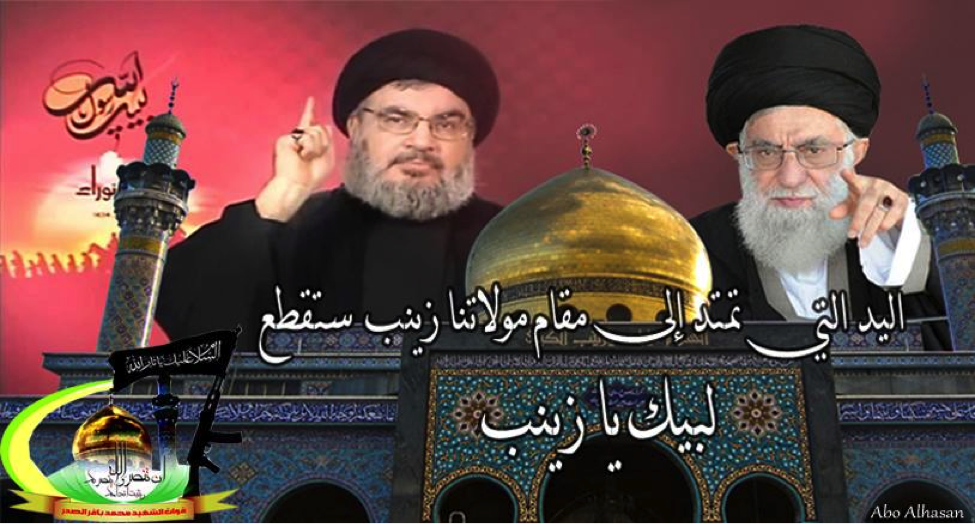
Figure 13: Lebanese Hizballah leader Sayyid Hassan Nasrallah and Iranian Surpreme Leader Ayatollah Khamenei are pictured behind the Sayyida Zaynab shrine in Damascus.
Videos Released by the Group
A number of videos have been released by the BO-QSMBS. However, most of them are of poor quality and follow an established pattern seen with other Shia Islamist militias (all Iranian-backed) in Syria. Most of these videos utilize older footage previously released by other groups. In October, the footage of Abu Sajad al-Hawli was released by the Badr Organization. The video was placed on YouTube, Facebook, and official Badr websites.
[1] Patrick Cockburn, Muqtada Al-Sadr and the Battle for the Future of Iraq, (New York: Scribner, 2008), Pp. 27-35. [2] See: https://www.thefirearmblog.com/blog/2012/07/13/steyr-hs-50-in-iran-counterfeit/
Hizballah Cavalcade: Kata’ib Sayyid al-Shuhada Emerges: Updates on the New Iraqi Shia Militia Supplying Fighters to Syria
NOTE: For prior parts in the Hizballah Cavalcade series you can view an archive of it all here.
—
Kata’ib Sayyid al-Shuhada Emerges: Updates on the New Iraqi Shia Militia Supplying Fighters to Syria
By Phillip Smyth ([email protected])
Click here for a PDF version of this post
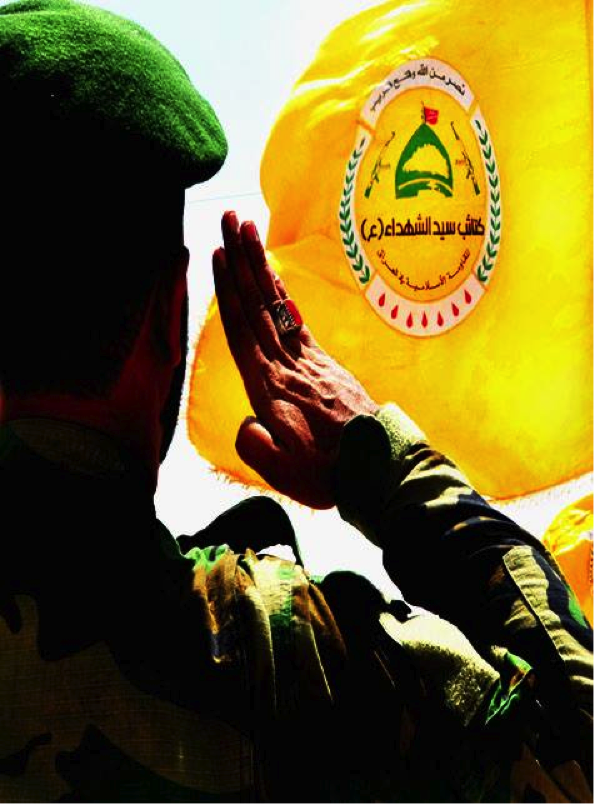
Figure 1: A KSS member salutes the group’s flag.
When Kata’ib Sayyid al-Shuhada (KSS) first announced their presence to the world, little was known about the organization, its leadership, or its force size. Funerals the group held for three of its fallen fighters in May not only announced the group’s existence, but also pointed to a strong link with Iran. However, following these funerals, little was heard from the group. Nevertheless, it would appear that starting in August the organization has fully redeveloped its messaging and online propaganda. This campaign has included well-organized and professional group funerals for members killed fighting in Syria, brand new and far-less amateurish imagery, and the introduction of some more unique features in KSS’s propaganda. Even the group’s uniforms have undergone a type of remake, featuring the KSS’s logo and patches showing their fighter’s commitments to “Defending Sayydiah Zaynab”.
The group has also been more open when it came to the numbers of its fighters deployed to Syria. In an Al-Sharqiya interview held with KSS’s information office, the group claimed to have sent 500 members to Syria.[1] Public announcements by the group have also established that since July, KSS has deployed a number of combat units to more rural zones around Damascus, particularly the frontlines in East Ghouta.
Additionally, via official websites belonging to the Badr Organization Military Wing, it is possible that a closer relationship exists between KSS and the Badr Organization. Since Badr did not announce its involvement in Syria until July, 2013, this may be a signal that KSS was used as a front group to send Badr fighters to Syria.
In terms of a social media presence, KSS has tried to reinvent itself. When the group’s more private group page was removed from Facebook, the organization simultaneously established a new Facebook page and more private profiles to disseminate photos and other information about the group. Since August, KSS has posted 1-4 unique new photographs of their activities in Syria. Additionally, other pro-Shia militia-in-Syria Facebook pages have re-posted their photographs.
Social media stature aside, the group’s rapid public growth, increased professionalism, combat deployments, and growing presence in Iraq—beyond its original base in Basra, demonstrates KSS as a rapidly growing Shia militia force. It is likely KSS will continue to announce its militant activities in Syria.
The Fighters
The fighters of Kata’ib Sayyid al-Shuhada appear to be uniformed with clear identifiable insignia. The combatants carry arms which are familiar to other Shia militia groups, particularly the PKM machine gun, RPG-7s, Kalashnikov-type assault rifles, and the popular SVD-style sniper rifle. KSS fighters have also been photographed with anti-material sniper rifles.
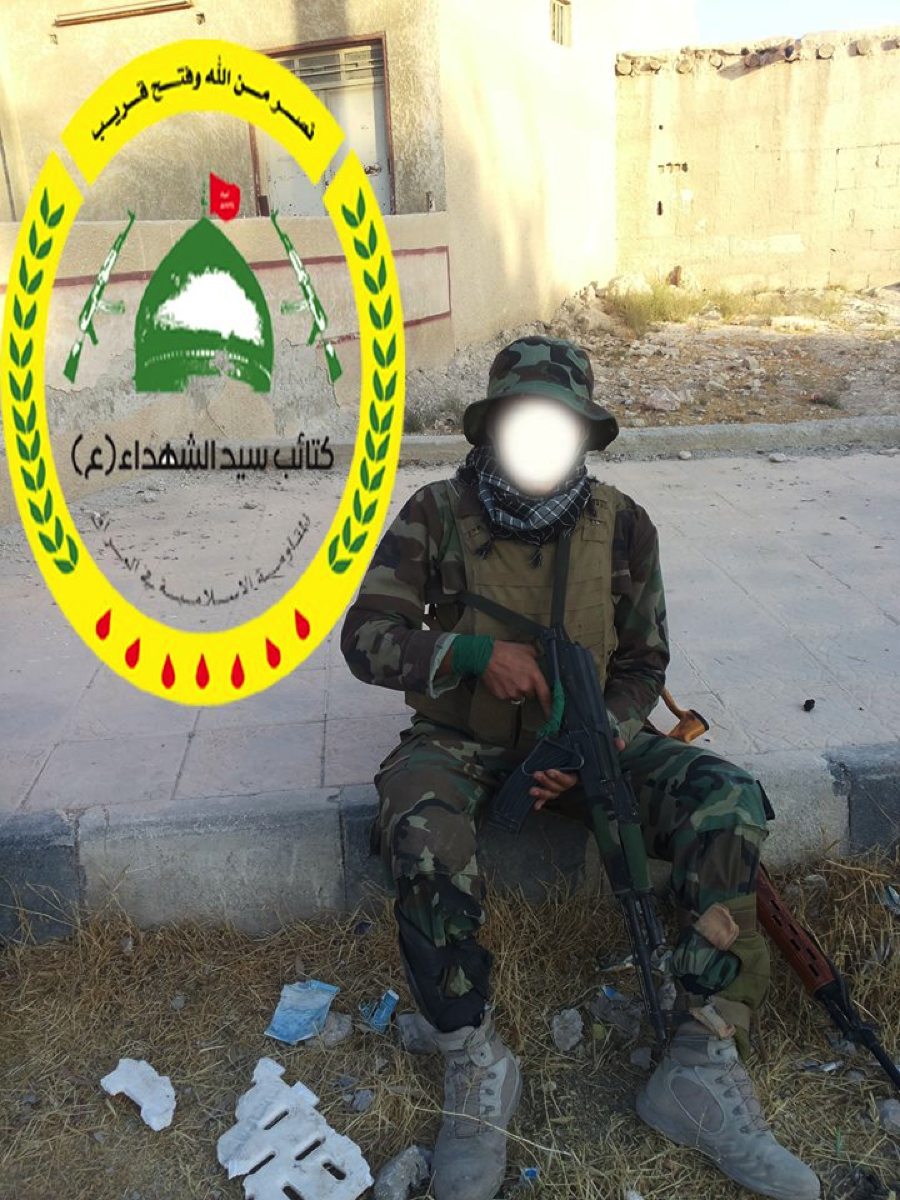
Figure 2: A KSS fighter with a customized Kalashnikov-type rifle and an SVD style sniper rifle.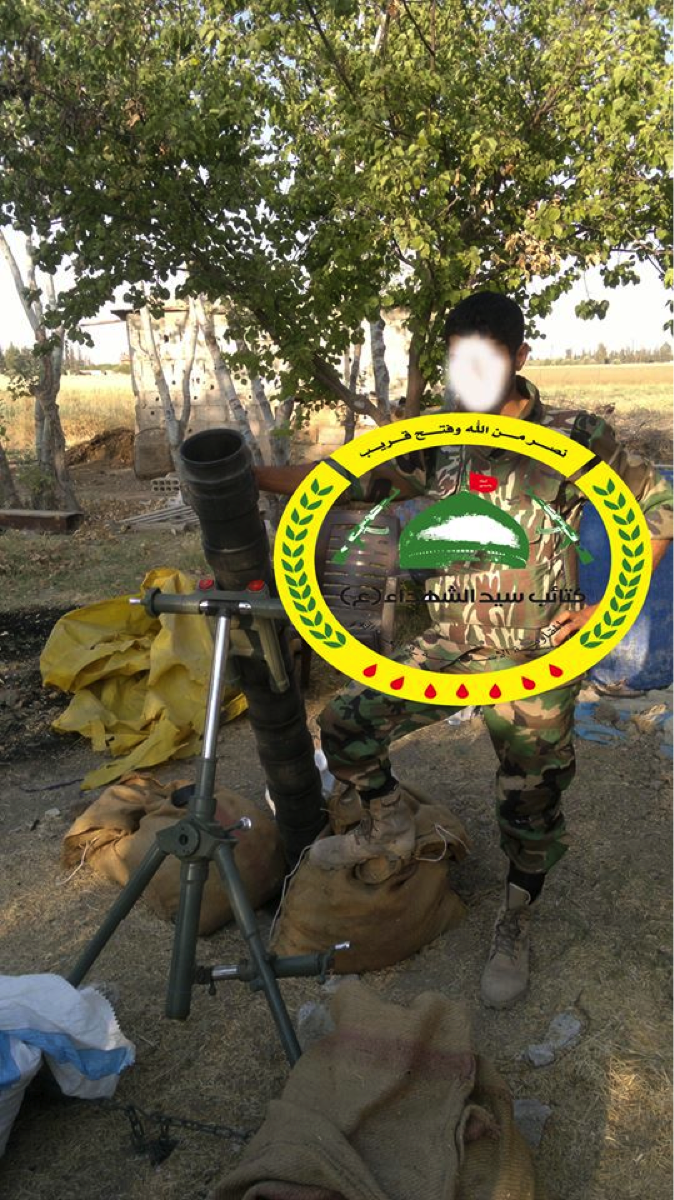
Figure 3: A KSS fighter poses with a mortar.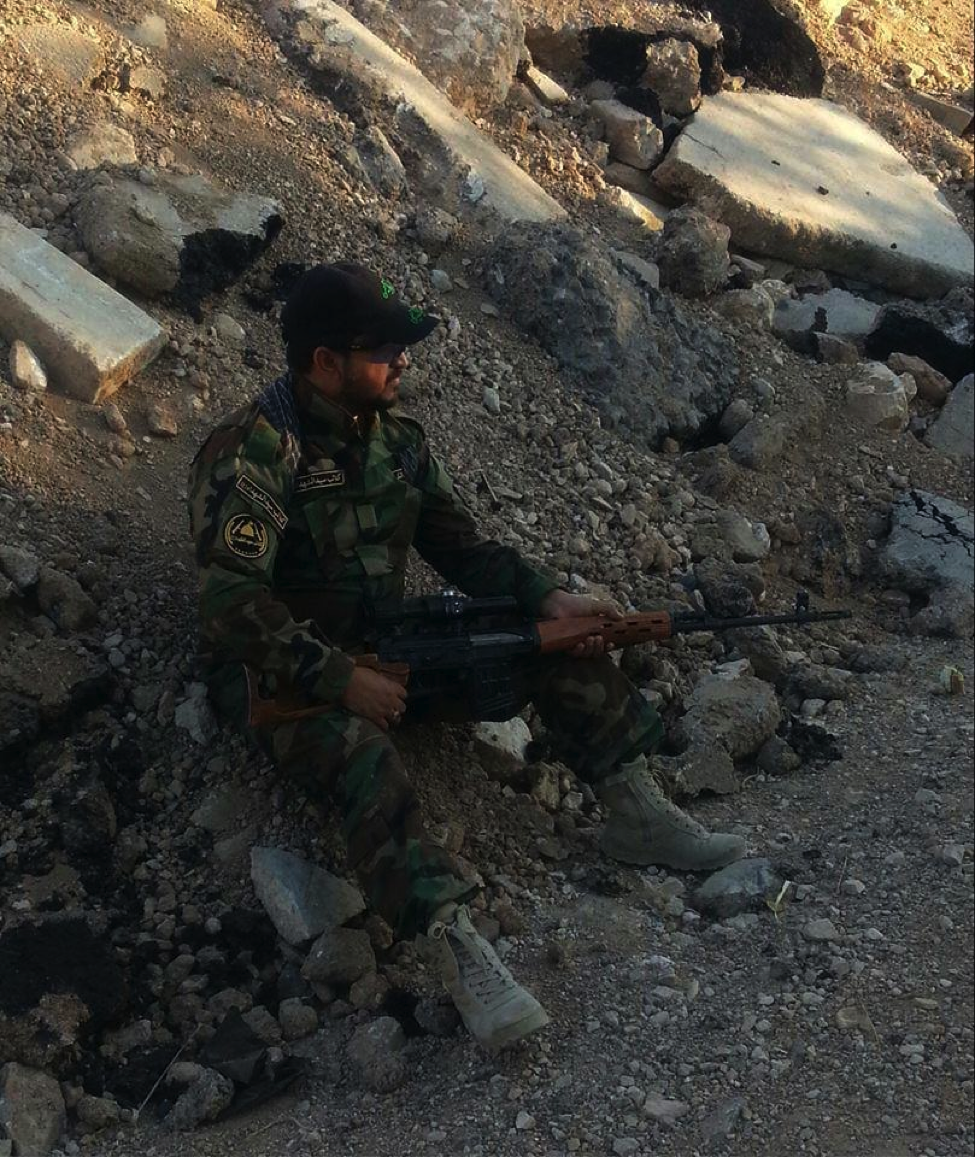
Figure 4: A KSS fighter poses on rubble with an SVD style sniper rifle. Note the KSS logo patch.
Figure 5: A KSS fighter holds an RPG-7.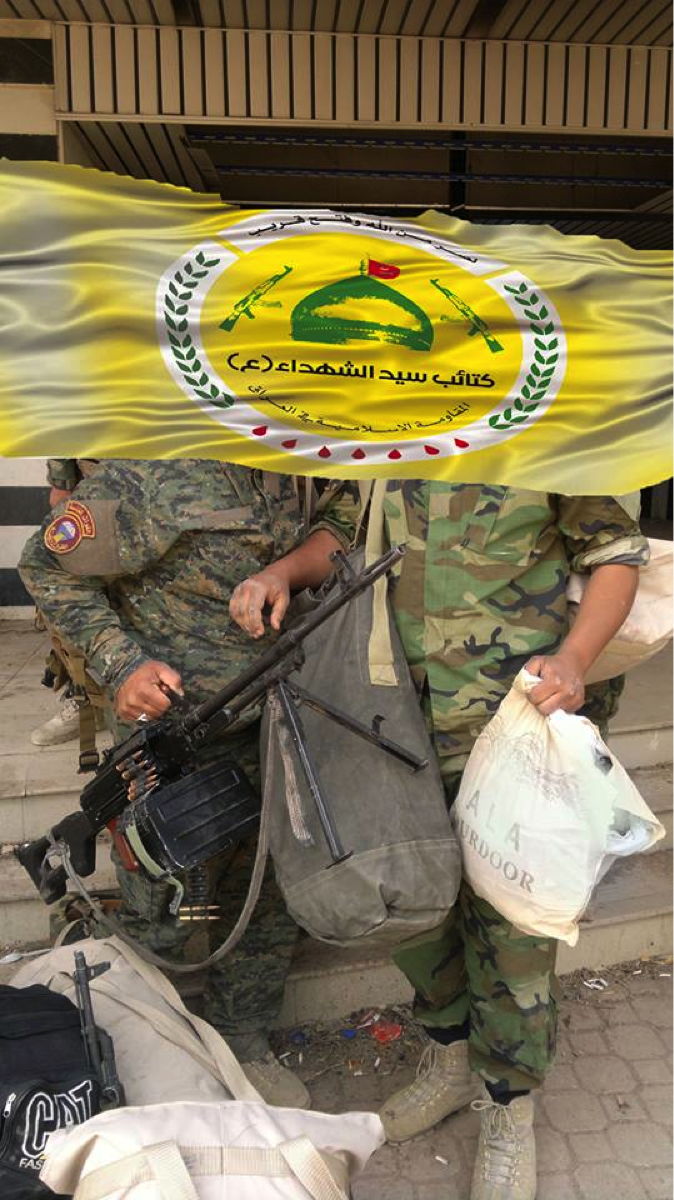
Figure 6: KSS fighters pose with a PKM machine gun.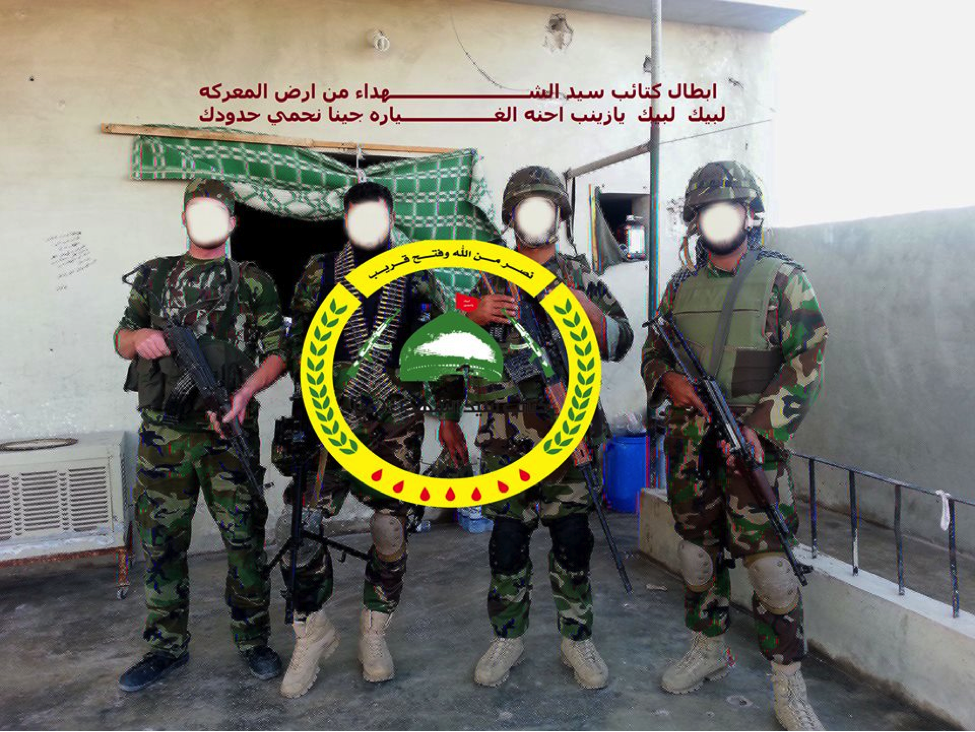
Figure 7: A small unit of KSS fighters holding a mixture of Kalashnikov type rifles, an SVD style sniper rifle, and a PKM machine gun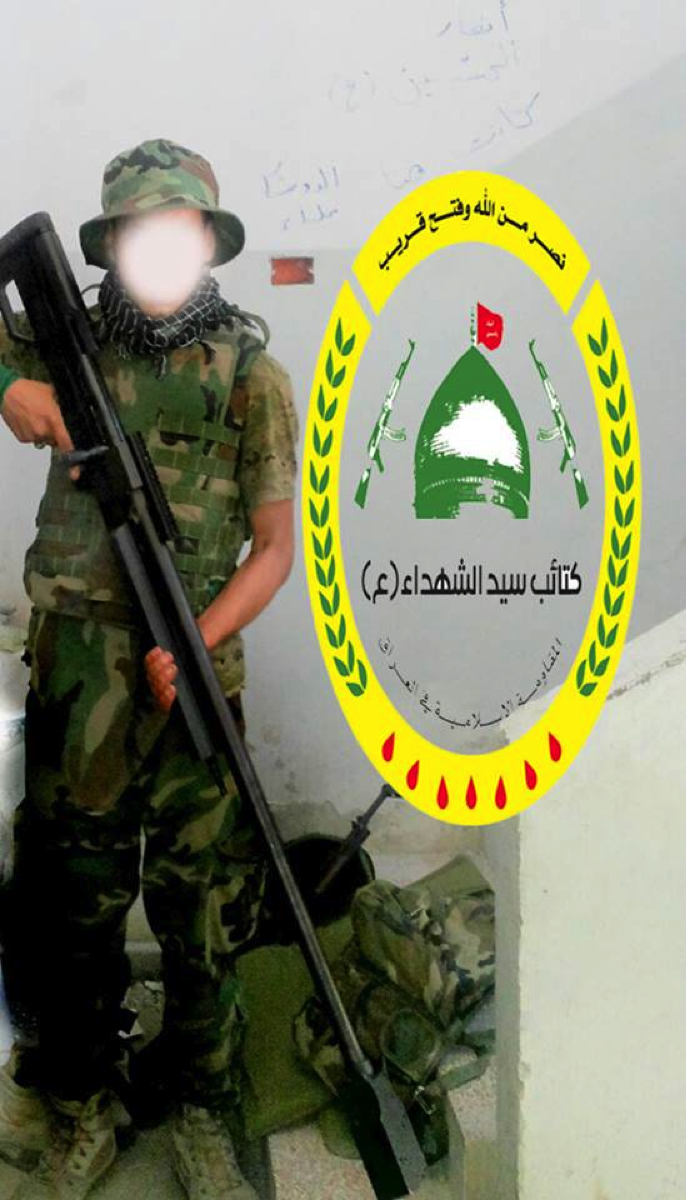
Figure 8: This KSS fighter appears to be holding a Steyr HS .50 style, .50 caliber bolt action anti-material sniper rifle. The rifle could also be an Iranian copy of the HS .50.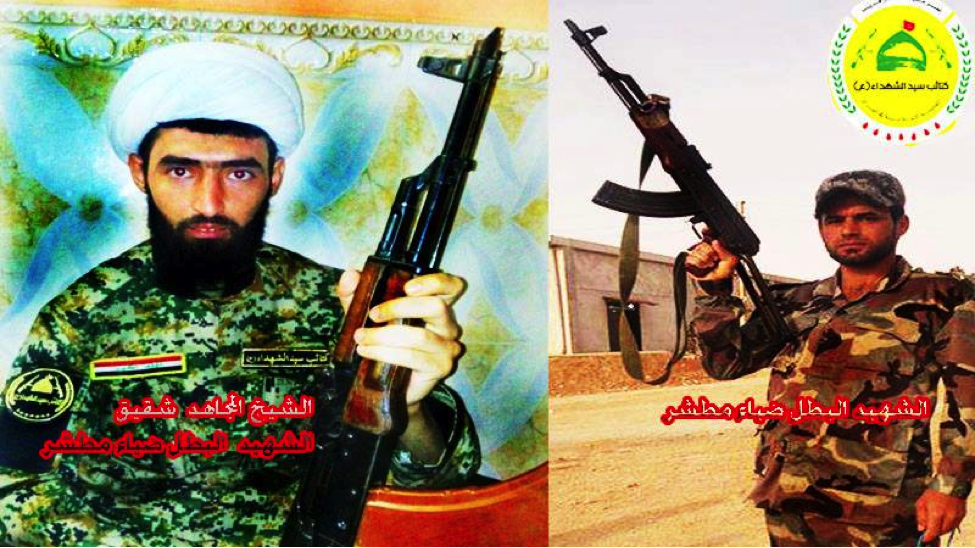
Figure 9: Diya Issawi’s brother (left), pictured in a white turban of commonly found with Shia clerics. He was listed by KSS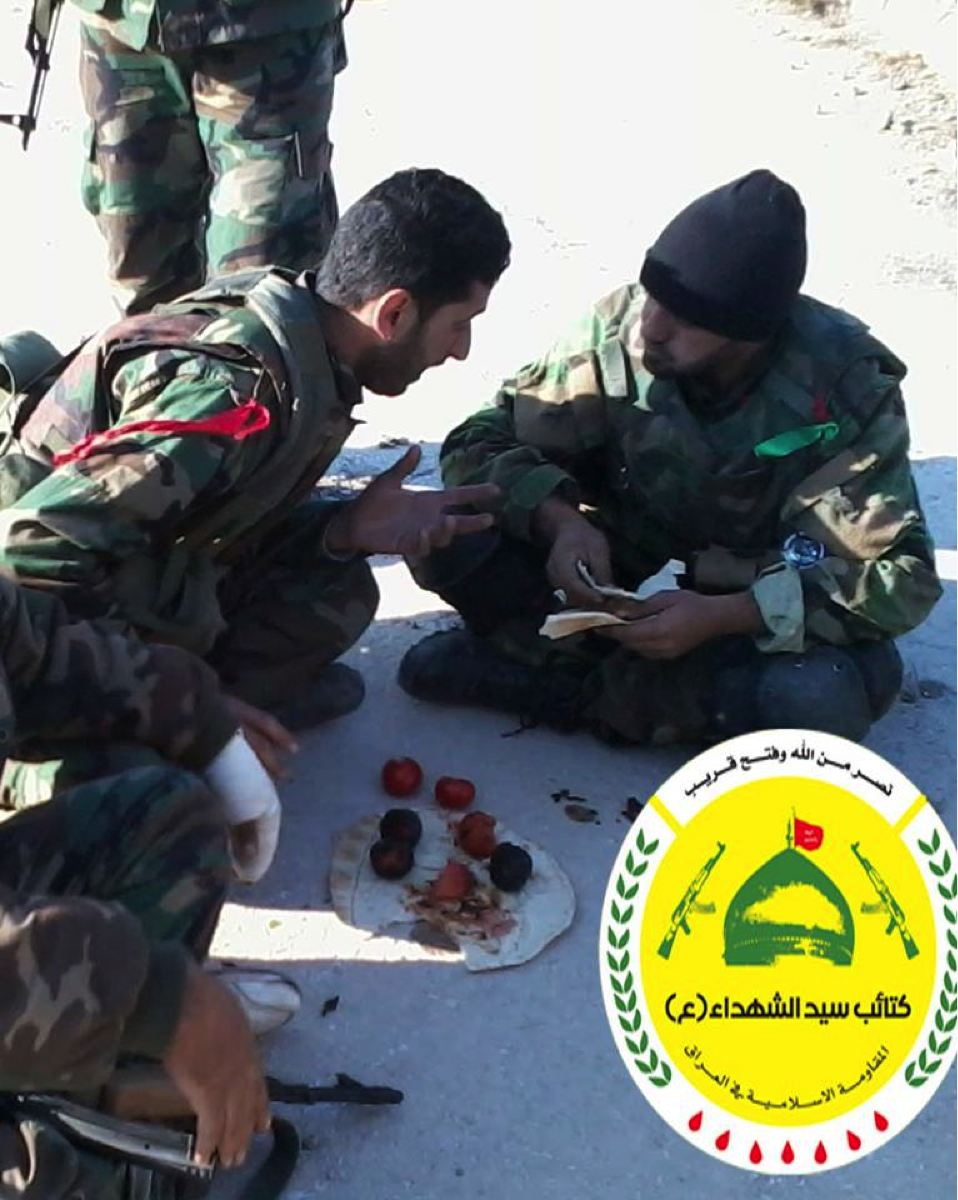
Figure 10: KSS members “Enjoy a simple modest lunch”. This photo was issued by the group to demonstrate the humility of their fighters.
The KSS’s New Martyrs
On August 20, a main Facebook page which publishes information about Shia militia operations and deaths in Syria, claimed that Kata’ib Sayyid al-Shuhada was operating in East Ghouta. During their operations in the area, the page reported three fighters as killed-in-action, with another five missing (listed in the post as, “Fate unknown”).
On August 24, KSS released eight martyrdom announcements in the form of more professionally designed graphics. The photographs were first released on the KSS and then the Badr Organization Military Wing’s official Facebook page. The posted images presumably show the eight fighters who were killed or who were missing in East Ghouta, in Rif Dimashq. It is important to note that on August 21, East Ghouta was also the reported as the scene of the deadliest chemical weapons attack within Syria.[2] According to American Military University’s In Homeland Security Blog chief correspondent and chemical weapons expert, William Tucker, it is possible these KSS fighters were, “bracketing the kill box”.[3] Meaning, they had generally surrounded the area where the chemical weapons were used and then attacked any Syrian rebel elements which may have tried to breakout.
However, a video emerged on September 1st showing some of the KSS fighters being killed in an assault by rebel forces. A longer video of the engagement was released on September 7th. The KSS fighters were reportedly stationed in what rebels referred to as a train station in East Ghouta. This would suggest that some of the KSS fighters may have been guarding transportation links in the area.
** Warning: Graphic Imagery **
In the video, it is clear to see that KSS fighters openly wear the insignia for their organization during combat operations. Some KSS and possibly Hizballah fighters are shown with Shia Islamic paraphernalia. One card removed from the pocket of a dead fighter featured a stylized photo of the assassinated Hizballah terror-leader, Imad Mughniyeh.[4]
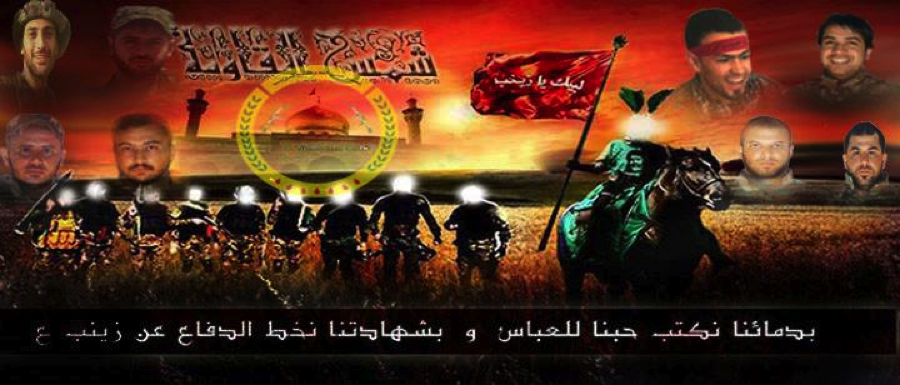
Figure 11: Eight of the dead KSS members are featured on this poster.
Name: Amir al-Badlawi
Death Announced: September 5, 2013
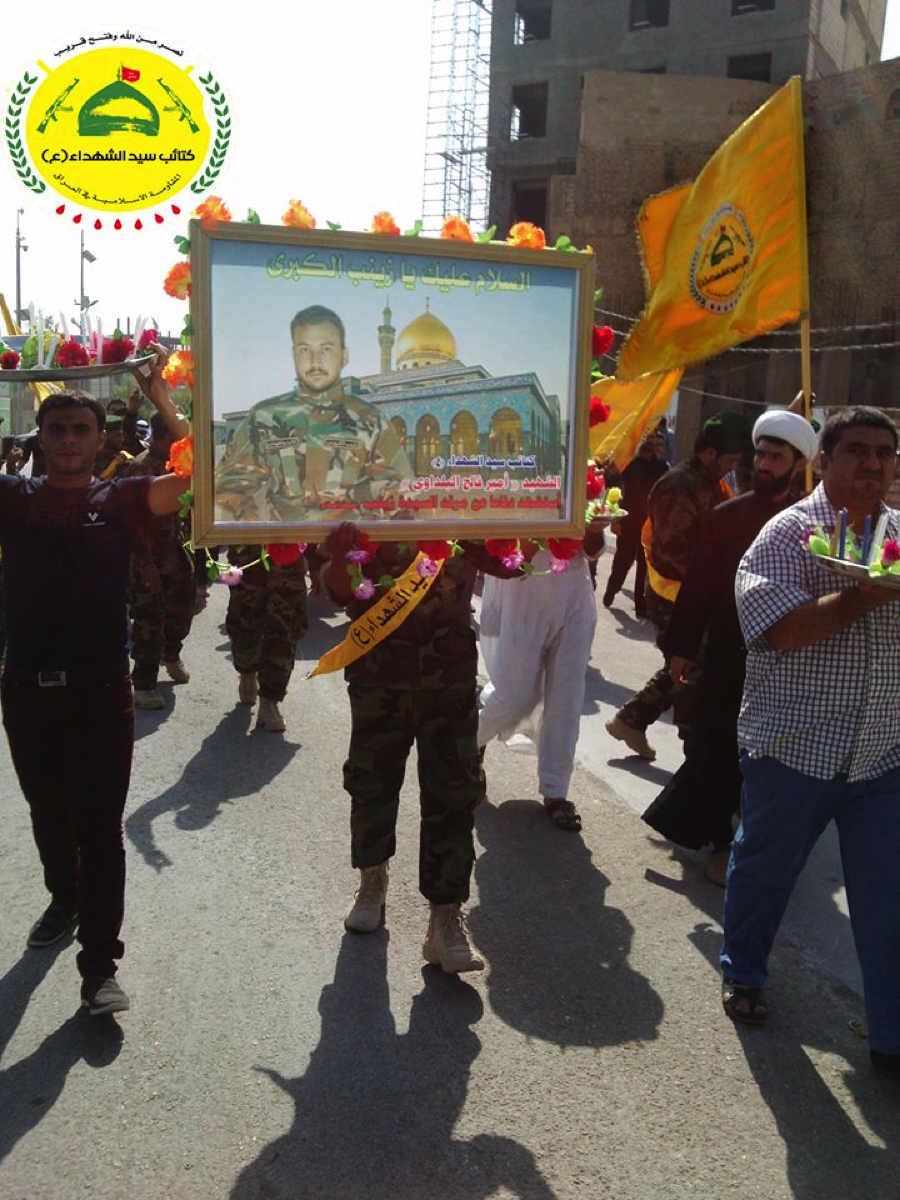
Name: Muhammed Radi al-Shumaylawi
Death Announced: August 24, 2013. Funeral held on August 27, 2013.
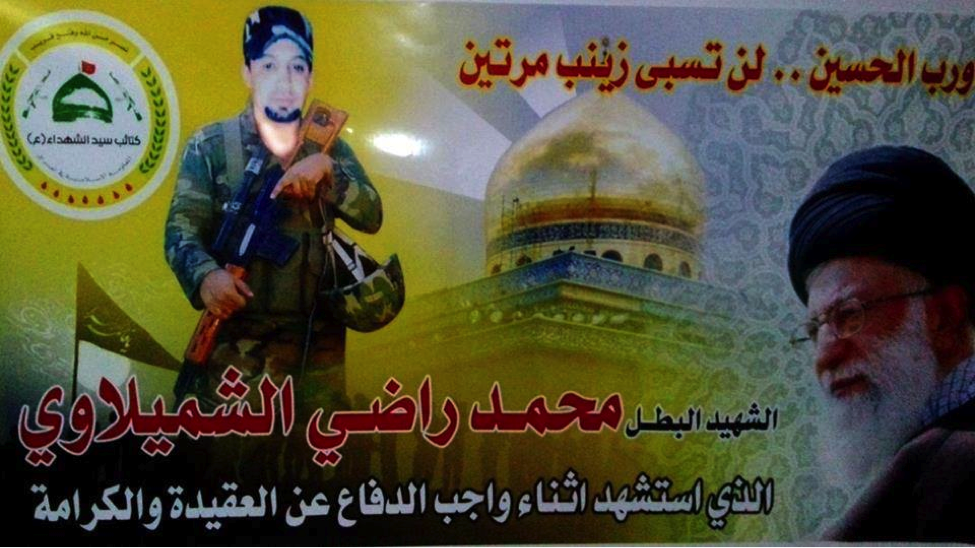
Name: Al-Said Hasan ‘Ali Farhoud al-Furaydawi
Death Announced: August 11, 2013
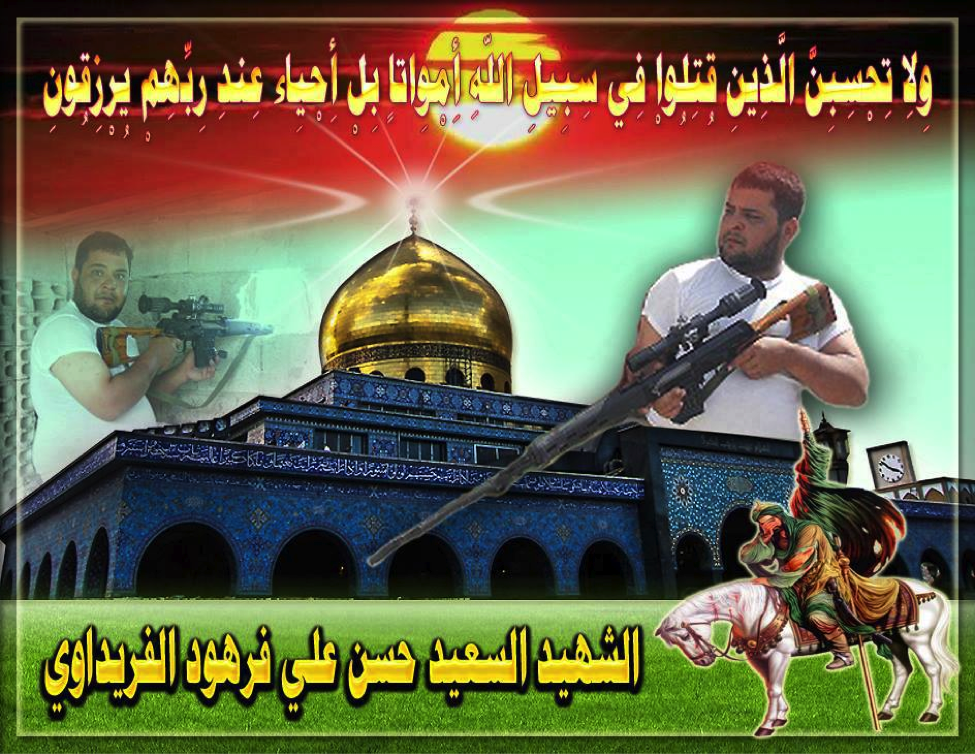
Name: Sejjad al-Shibani
Death Announced: August 23, 2013, reportedly killed on August 20, 2013, funeral reportedly held on August 27, 2013.
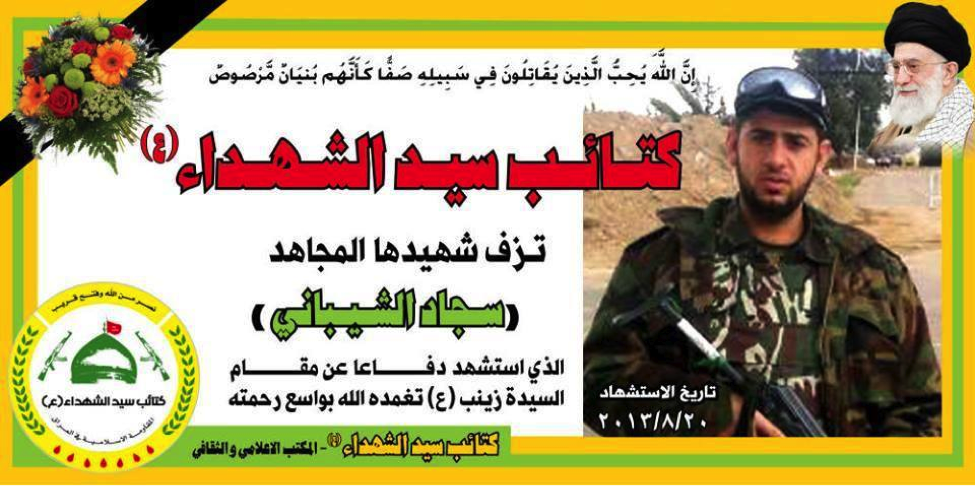
Name: Walid al-‘Abudi
Death Announced: August 23, 2013, reportedly killed on August 20, 2013.
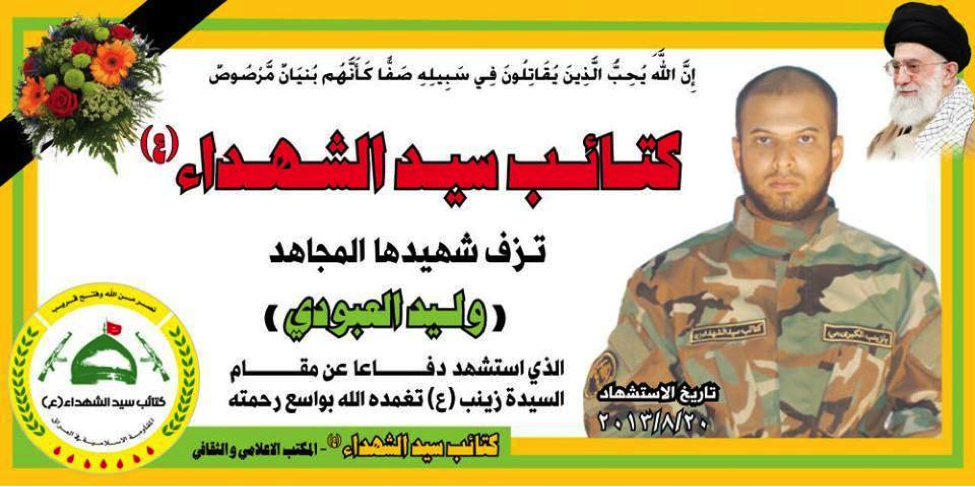
Name: ‘Ali Hamza al-Deraghi al-Sadiqi
Death Announced: August 23, 2013, reportedly killed on August 20, 2013, funeral reportedly held on August 27, 2013.
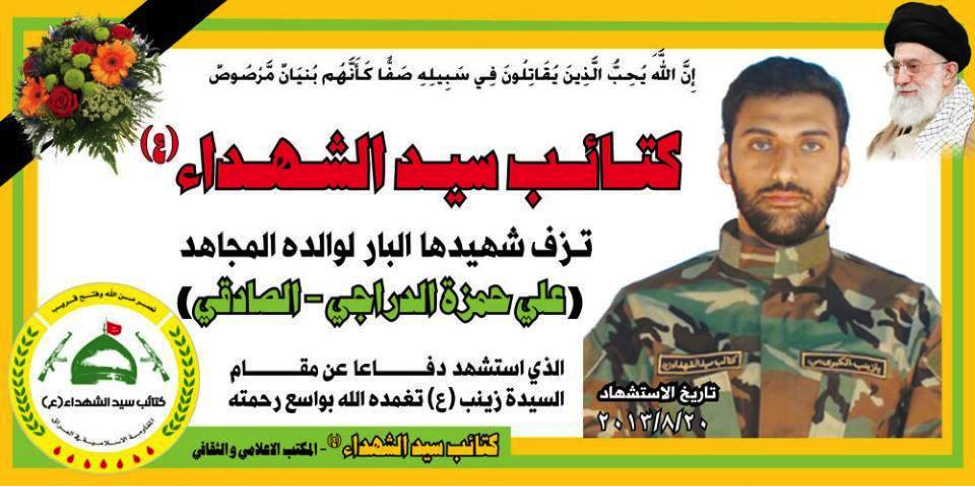
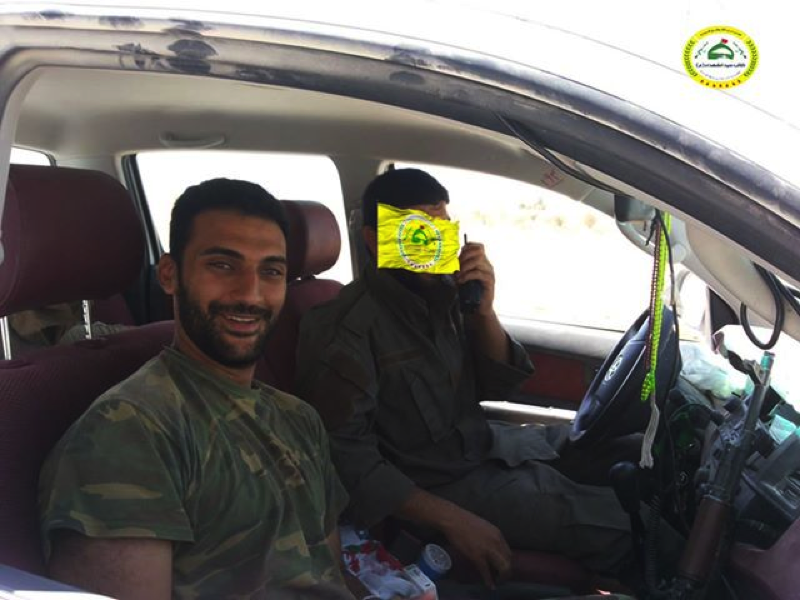
Figure 12: Sadiqi is shown in a car with what may be another KSS member and a Kalashnikov style rifle.

Figure 13: An official KSS release of Sadiqi with other KSS fighters.
Name: Zulfiqar al-Raseetmawi
Death Announced: August 25, 2013, reportedly killed on August 20, 2013, funeral reportedly held on August 27, 2013.
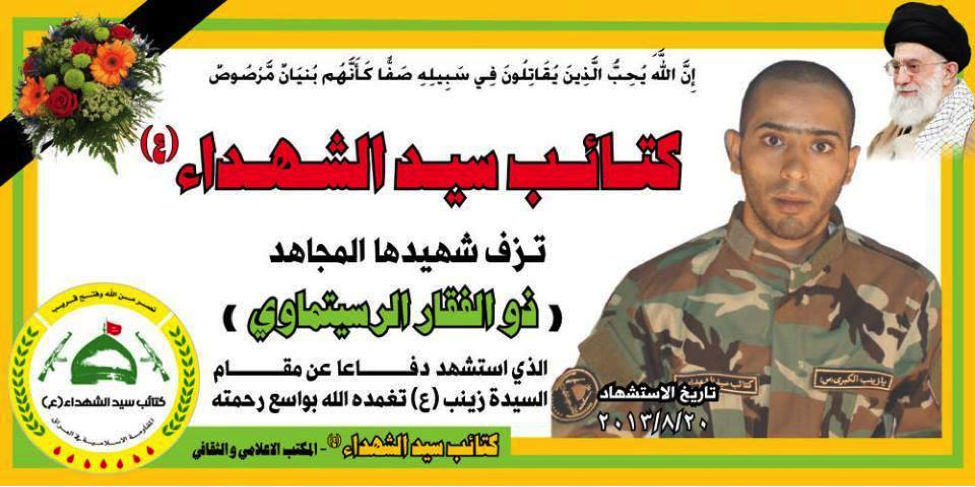
Name: Muhammed ‘Abd al-Husayn al-Faridawi
Death Announced: August 25, 2013, reportedly killed on August 20, 2013, funeral reportedly held on August 27, 2013.
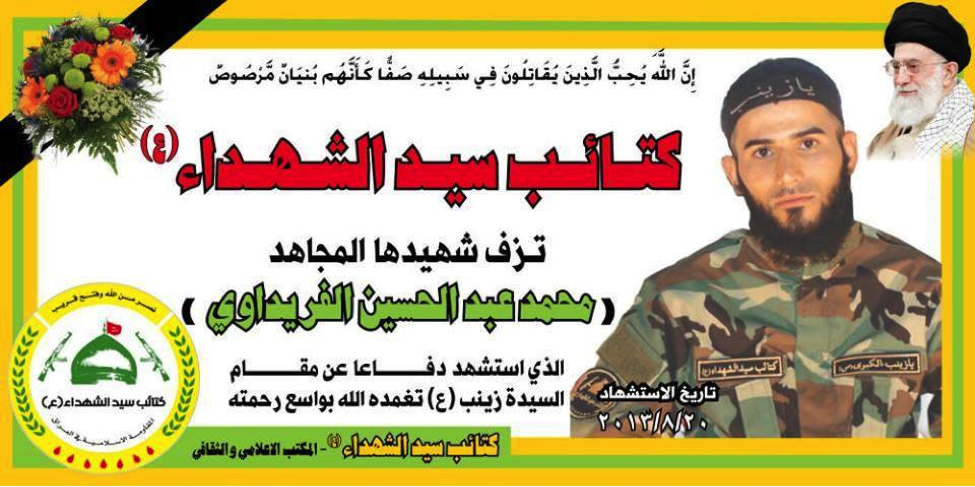
Name: Ala al-Ka’bi
Death Announced: August 23, 2013, reportedly killed on August 20, 2013, funeral reportedly held on August 27, 2013.
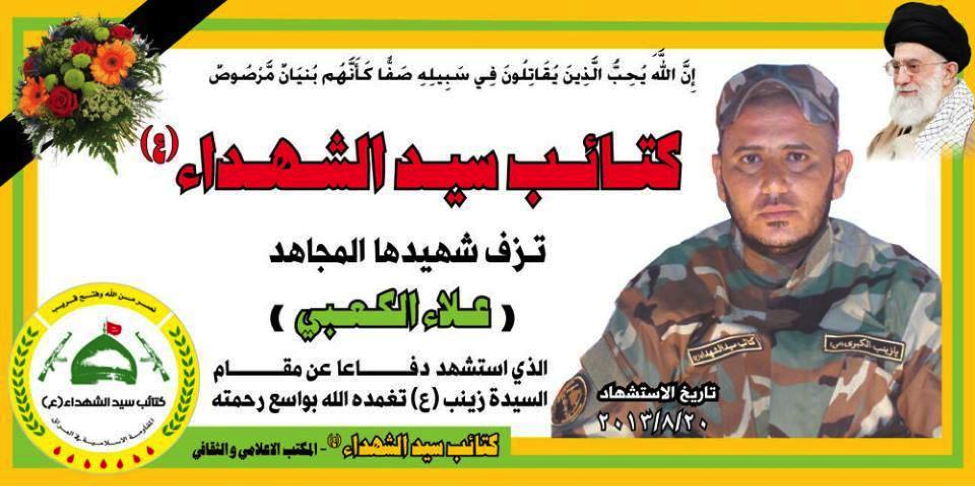
Name: Watheq Hashem al-‘Anzi
Death Announced: August 23, 2013, reportedly killed on August 20, 2013, funeral reportedly held on August 27, 2013.
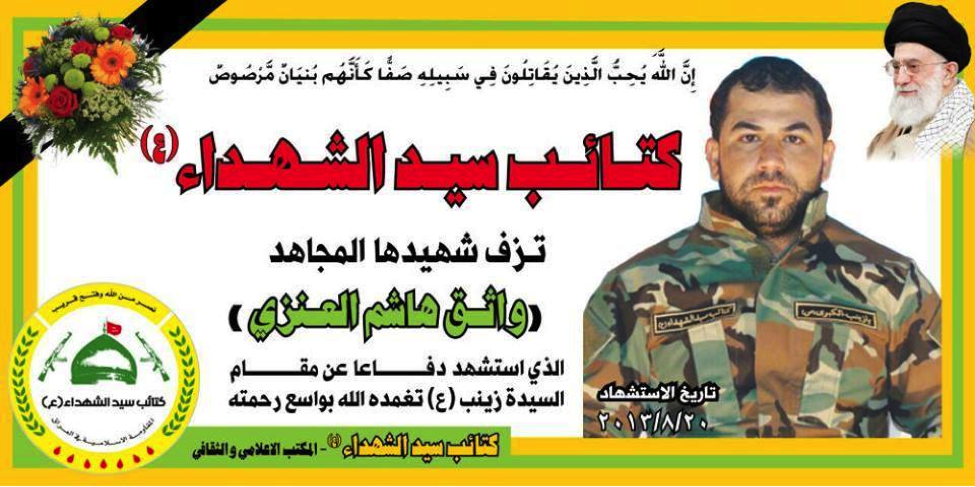
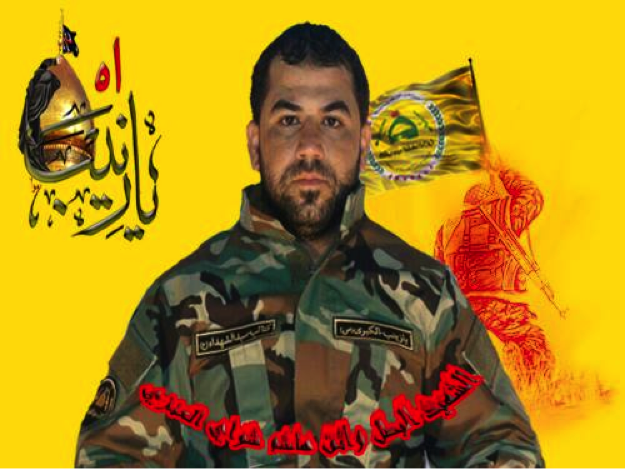
Figure 14: An officially produced martyrdom post
Name: ‘Ali Sami al-Zubaydi
Death Announced: August 23, 2013, reportedly killed on August 20, 2013, funeral reportedly held on August 27, 2013.
Notes: Zubaydi was one of the few KSS dead who had other photos of him in Syria uploaded to a number of pro-Shia militia
Check out my new article in The CTC Sentinel co-authored with Matthew Levitt: "Hizb Allah’s Gambit in Syria"

Speaking in late May 2013, Hizb Allah Secretary General Hassan Nasrallah declared that the battle in Syria was Hizb Allah’s fight: “We will continue along the road, bear the responsibilities and the sacrifices. This battle is ours, and I promise you victory.”[1] To that end, Lebanese Hizb Allah went “all-in” fighting alongside Bashar al-Assad regime loyalists and Iranian revolutionary guardsmen against Syrian rebels. The impact of Hizb Allah’s involvement has been significant, as was seen most clearly in the battle for Qusayr in May-June 2013, where Hizb Allah gunmen reportedly fought house to house, suffered losses, and played the decisive role in turning the tide against anti-Assad rebels who ultimately lost the town. That battle also laid bare the myth that Hizb Allah was not fighting in Syria.
This article identifies Hizb Allah’s strategic calculus for joining the fight in Syria. First, it contextualizes Hizb Allah’s historical connection to the Sayyida Zaynab shrine in Damascus since it is utilized heavily in Hizb Allah’s propaganda. It then probes Hizb Allah’s military involvement as well as its training advisory role with new militias. It finds that Hizb Allah is heavily involved in Syria not only to help its patrons in Damascus and Tehran, but also to stave off an existential crisis in Lebanon if the Syrian rebels were to achieve victory.
Click here to read the rest.
Hizballah Cavalcade: Asa’ib Ahl al-Haq’s Liwa’a Kafeel Zaynab
NOTE: For prior parts in the Hizballah Cavalcade series you can view an archive of it all here.
—
Asa’ib Ahl al-Haq’s Liwa’a Kafeel Zaynab
By Phillip Smyth ([email protected])
Click here for a PDF version of this post
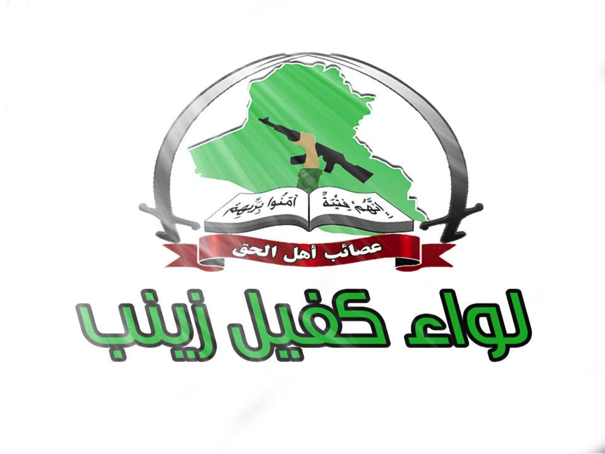
Figure 1: One version of Asa’ib Ahl al-Haq’s Liwa’a Kafeel Zaynab logo.
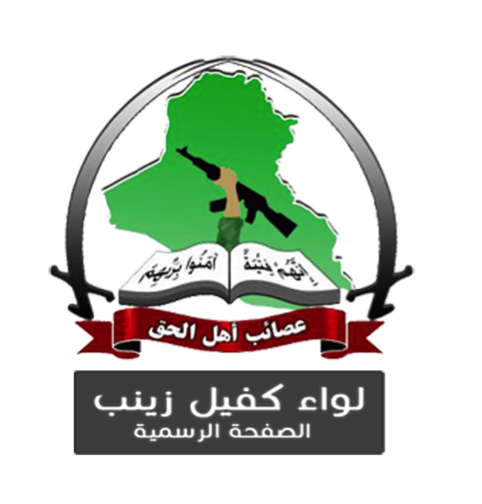
Figure 2: AAH-LKZ’s symbol features the normal AAH logo with the words, “Liwa’a Kafeel Zaynab” below it. This photo comes from AAH-LKZ’s official Facebook page (as denoted by the writing, “al-Safa al-rasmeea”, meaning “The official page”, underneath “Liwa’a Kafeel Zaynab”).
Formed in 2006 when it split from Muqtada al-Sadr’s Jaysh al-Mahdi, the Shia Islamist, Iraq-based Asa’ib Ahl al-Haq (League of the Righteous, or AAH) was created with the help of Lebanese Hizballah and the Iranian Revolutionary Guard Corps.[1] During the Iraq War, AAH was responsible for a number of high-profile attacks on Coalition forces, including kidnappings and the use of advanced Explosively Formed Penetrators (EFPs) against armored vehicles.[2] Following the pullout of American soldiers from Iraq, the group claimed it would consider giving up its arms and pursue a political strategy.[3] However, despite allying itself with Iraqi Prime Minister Nouri al-Maliki, AAH retained its militia and has been sending some of these forces into Syria.[4]
When the first martyrdom announcements and funerals were held for Iraqi Shia who had been killed fighting for pro-Assad militias in Syria, it became clear that AAH was a main supplier of fighters (see earlier Hizballah Cavalcade “Roundups of Iraqis Killed in Syria” Parts 1, 2, and 3). Via these funeral announcements, the makeup of the main foreign-staffed Shia militia in Syria, namely Liwa’a Abu Fadl al-Abbas (LAFA), was shown to be from AAH. AAH did little to hide their involvement regarding their sending of fighters to Syria. Large public funerals have been held in Iraq since the spring of 2013 and numerous AAH propaganda posters featuring their involvement in Syria have been released.
Albeit, it was a rarity for groups like LAFA to make an official written statement over social media or on forums stating AAH was a supplier. Instead, the inference AAH was supplying fighters to the group could be made by looking at the AAH imagery for their dead, which was then reposted by LAFA.
However, starting at the end of May, 2013 a number of videos (posted to YouTube) explicitly claimed Asa’ib Ahl al-Haq’s fighters were in Syria. This differed from the more typical rolling of AAH personnel into the ranks of LAFA or other militias. While these videos were sporadic, they were the first piece of a trend which would culminate in the announcement of a unique organizational name for AAH’s force deployment in Syria.
The major shift in addressing AAH’s involvement in the war in Syria took place in July. Instead of claiming AAH members were part of other Shia militia groups, AAH decided to announce the presence of the Asa’ib Ahl al-Haq-Liwa’a Kafeel Zaynab (AAH-LKZ or League of the Righteous-Supporters [or Sponsors] of Zaynab Brigade). The group is not a “New militia”. Instead, AAH-LKZ is a name for the group of AAH personnel who are in Syria. In some ways, it is comparable to how some militaries have fielded expeditionary forces.
As soon as the AAH-LKZ was announced on Facebook, the group also released a number of films on an official YouTube page. AAH-LKZ’s Facebook page also has (since the last count on August 13, 2013) three mirror sites. This is likely due to the fact that many Hizballah and Liwa’a Abu Fadl al-Abbas Facebook pages have been banned by the website.
AAH-LKZ has been quite prolific in their postings of unique photographs showing the group’s operations in Syria. In some cases, the main page (which has around 33,000 members) has posted five unique photographs in one day. Compared to other Shia militia Facebook pages, such a release of original images is quite uncommon.
Primarily, AAH-LKZ’s military maneuvers utilizing snipers and machine-gun teams are showcased. Additionally, their use of mortars, rockets, and possibly armored vehicles has also been featured. Photos of the group’s martyrs are also posted on the page.
AAH-LKZ has also posted a number of propaganda videos on an official YouTube station. Many of the videos mock Syrian rebels, showing mishaps the rebels have had with their weapons or rebels being successfully attacked. In a surreal twist, AAH-LKZ starts all of their officially released videos with a clip the group’s video editor(s) cut from the Mel Brooks’ 1987 comedy, Spaceballs.[5]
AAH-LKZ’s Imagery & Videos From the Battlefield

Figure 3: AAH-LKZ members pose with a mixture of Kalashnikov-type rifles, Dragunov-type sniper rifle, an RPG-7, and a PKM machine gun.
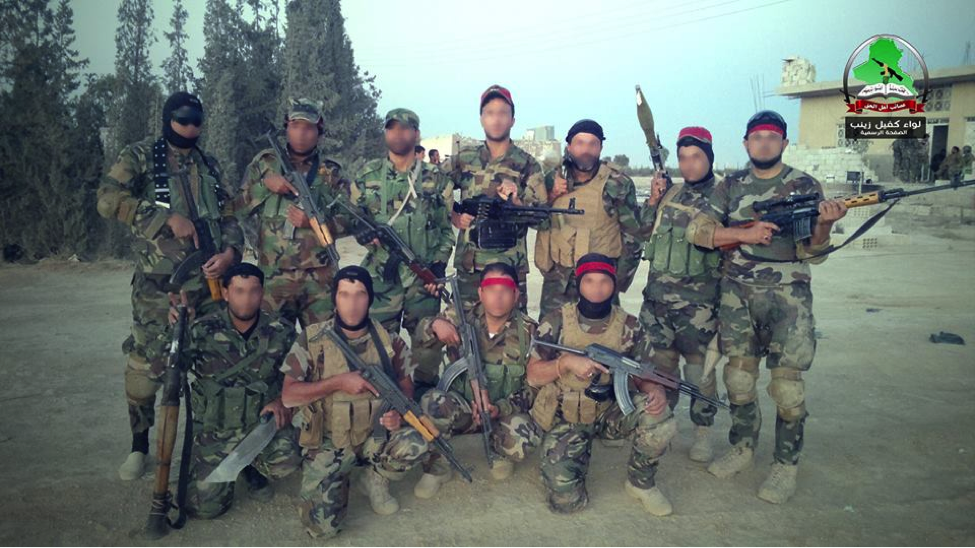
Figure 4: AAH-LKZ members pose with a mixture of Kalashnikov-type rifles, Dragunov-type sniper rifle, RPG-7s, and a PKM machine gun.
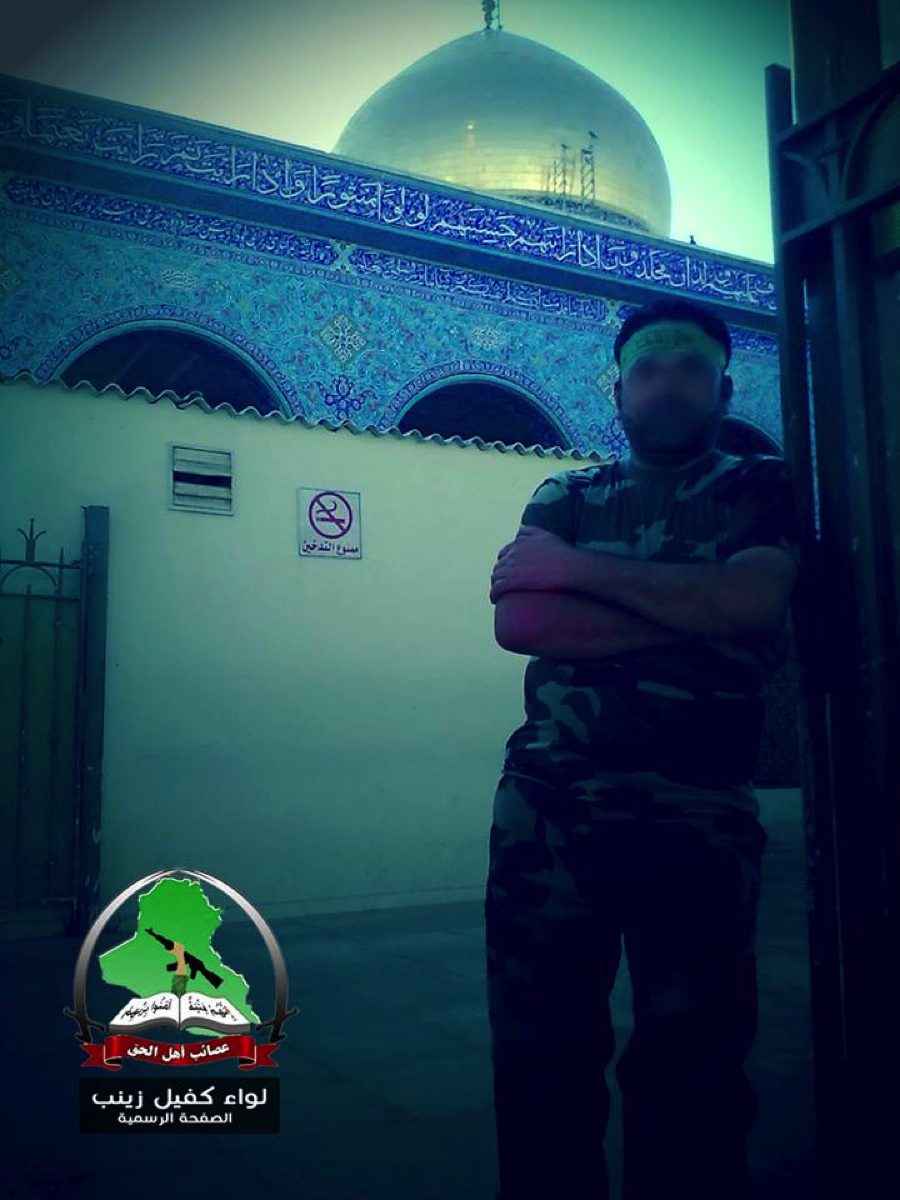
Figure 5: An AAH-LKZ fighter stands with the Saydah Zaynab Shrine in the background.
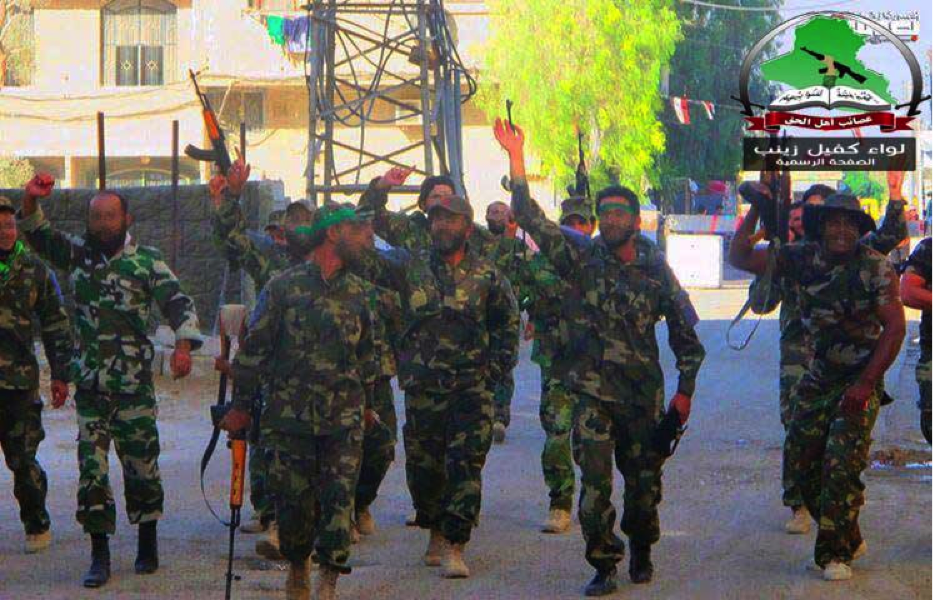
Figure 6: A shot of AAH-LKZ fighters celebrating in a Syrian street.
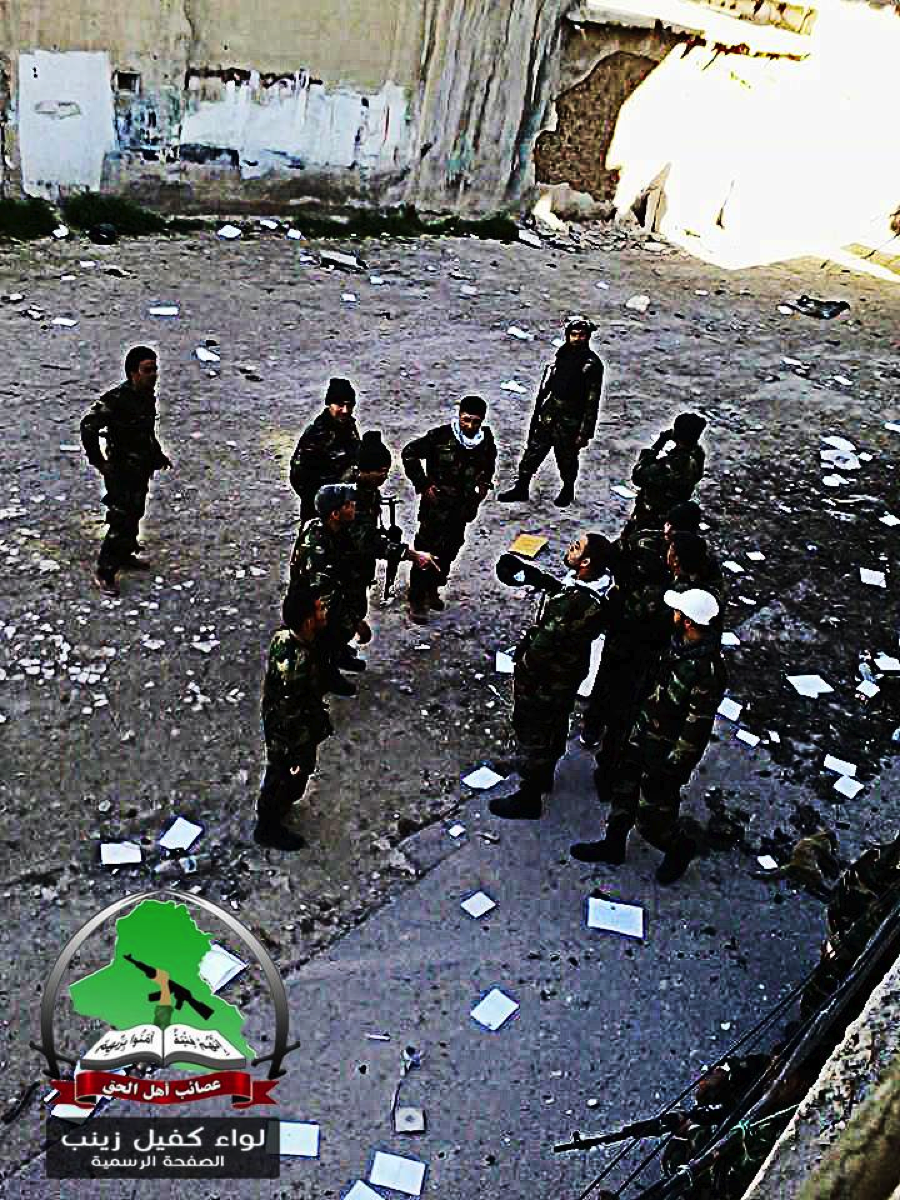
Figure 7: An edited photo of AAH-LKZ members talking.
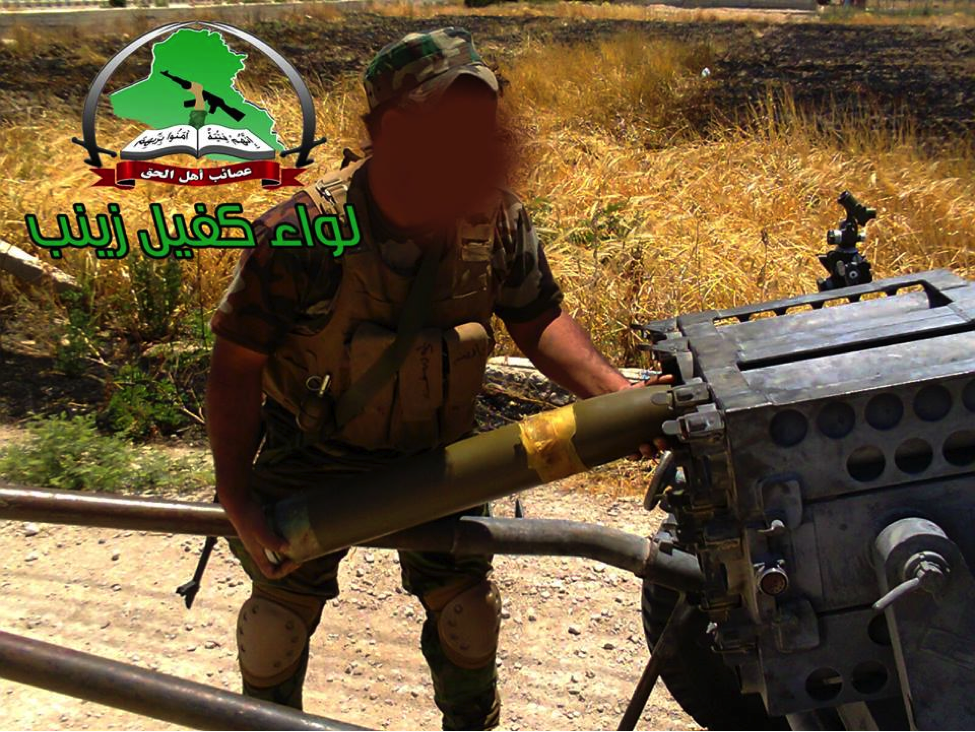
Figure 8: An AAH-LKZ member loads what appears to be a Chinese-made Type 63 107 mm rocket launcher.
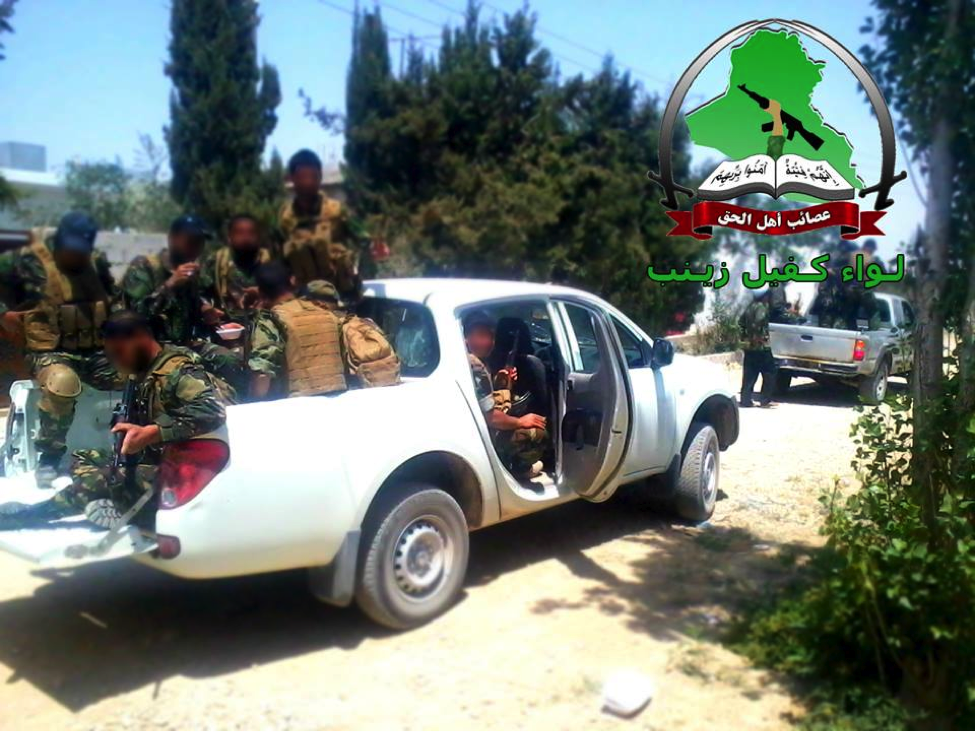
Figure 9: In AAH-LKZ photographic and video propaganda, pickup trucks feature prominently as a tool used to transport their fighters.
In the video clip, AAH-LKZ members are shown playing a popular militant Iraqi Shia song, “Support Those Who Defend Zaynab” by Ali al-Delfi and Ahmed al-Sa’adi. In fact, most AAH-LKZ video clips are set to songs which can be found on this Hizballah Cavalcade post dealing with militant Shia Iraqi music made for/to praise Shia fighters in Syria.
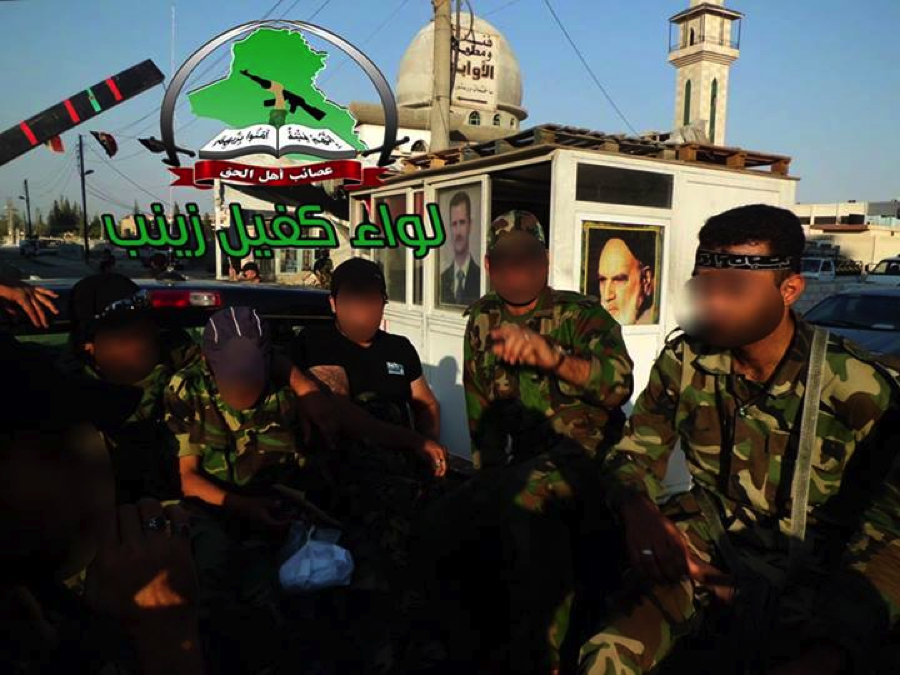
Figure 10: AAH-LKZ members sitting in front of a checkpoint with posters of former Iranian Supreme Leader Ayatollah Khomeini and Syrian leader Bashar al-Assad.
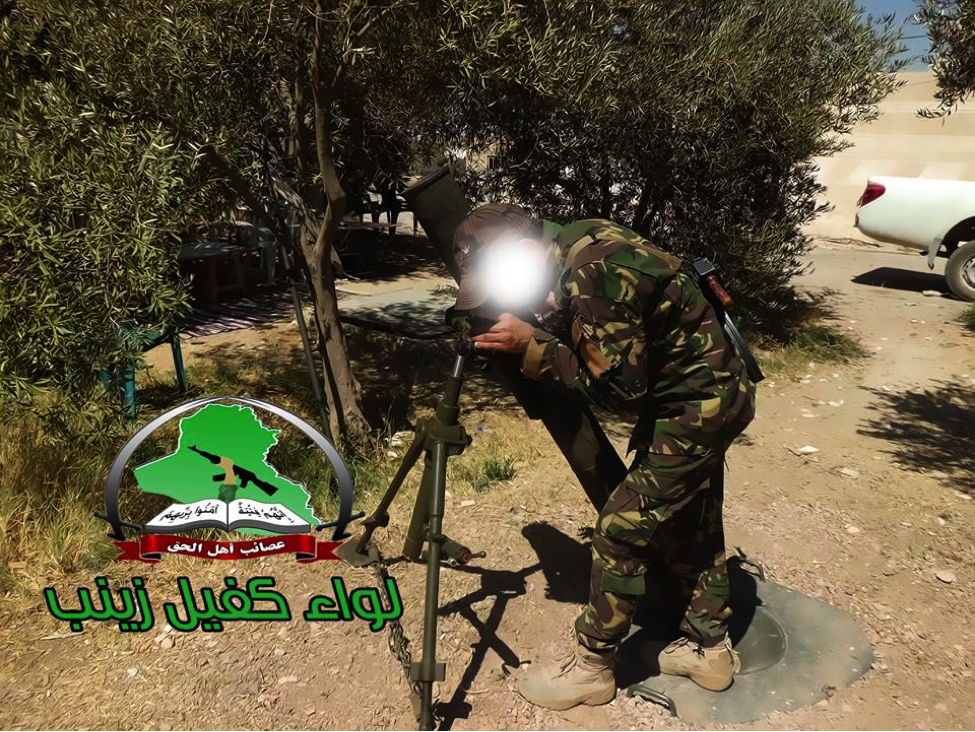
Figure 11: An AAH-LKZ fighter sights a mortar.

Figure 12: An AAH-LKZ fighter holding a PKM machine gun is shown in a rural setting with two other AAH-LKZ fighters.
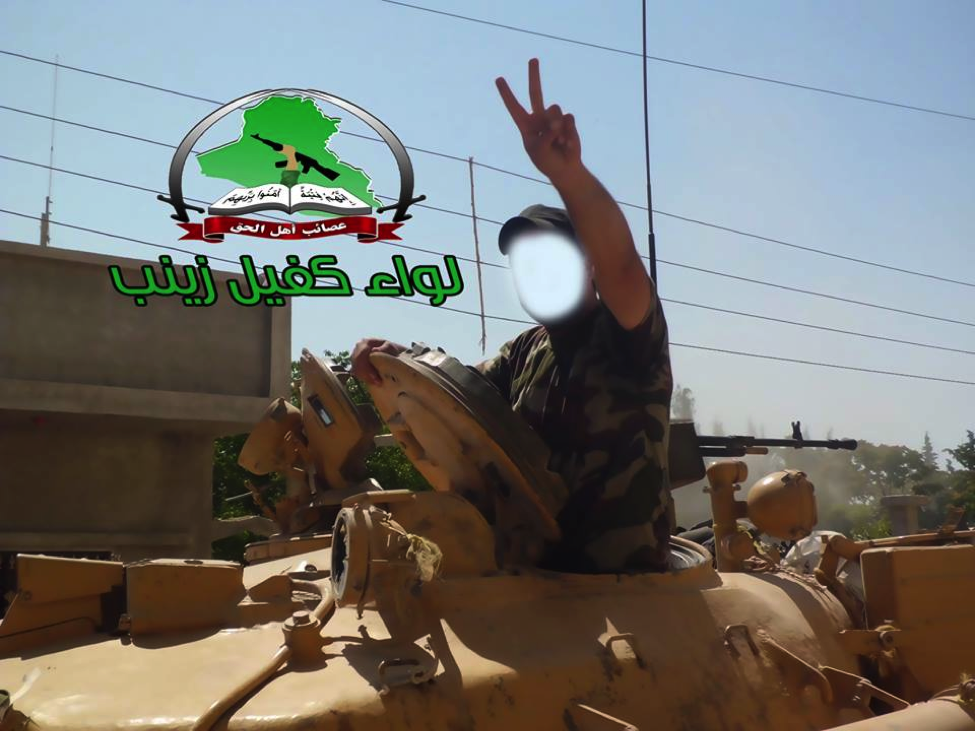
Figure 13: An AAH-LKZ militiaman poses inside a tank turret.
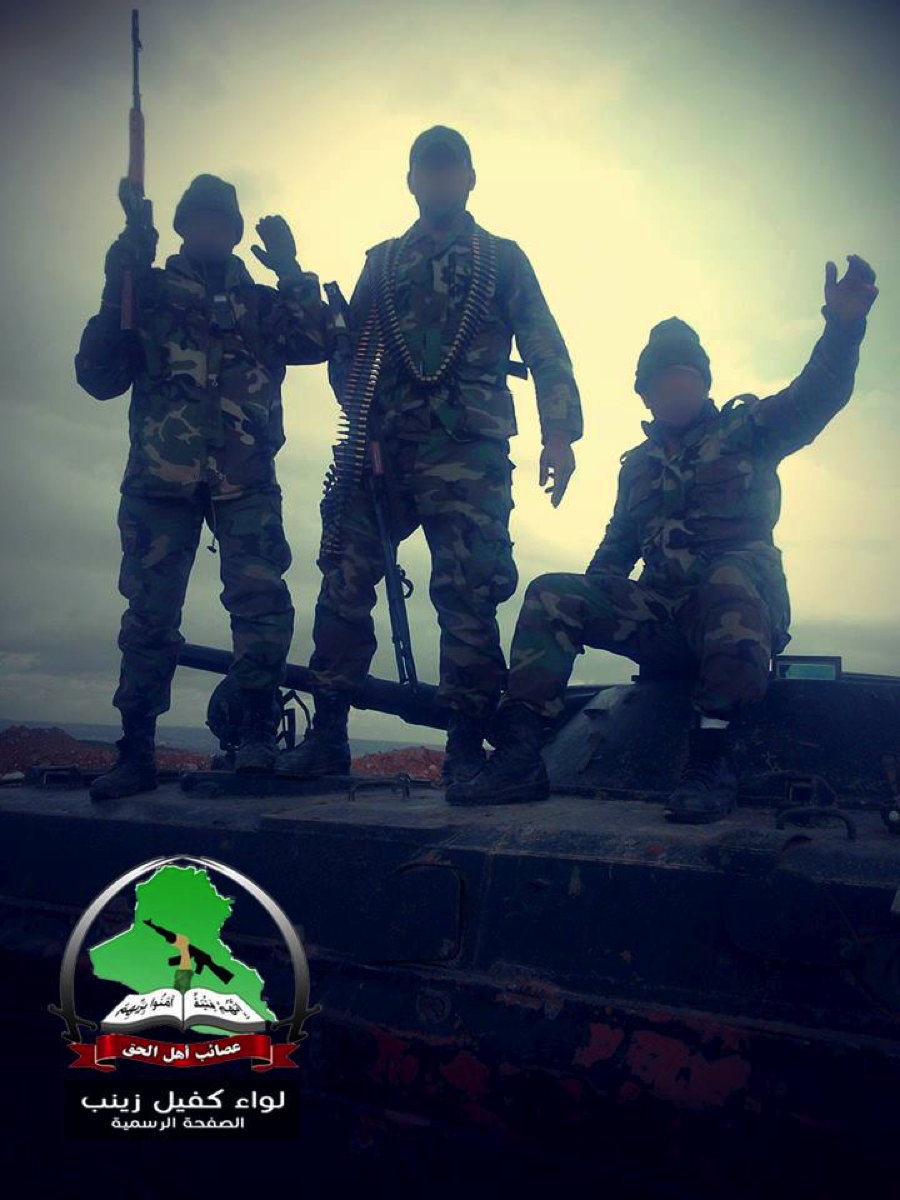
Figure 14: AAH-LKZ members stand atop a BMP-1 infantry fighting vehicle.
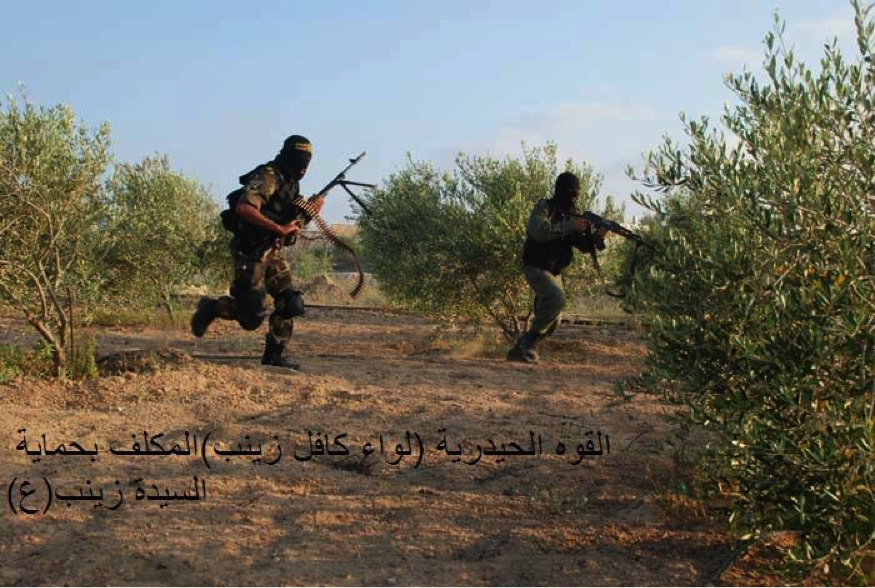
Figure 15: A photo from a pro-AAH Facebook claiming to show members of “Liwa’a Kafeel Zaynab”.
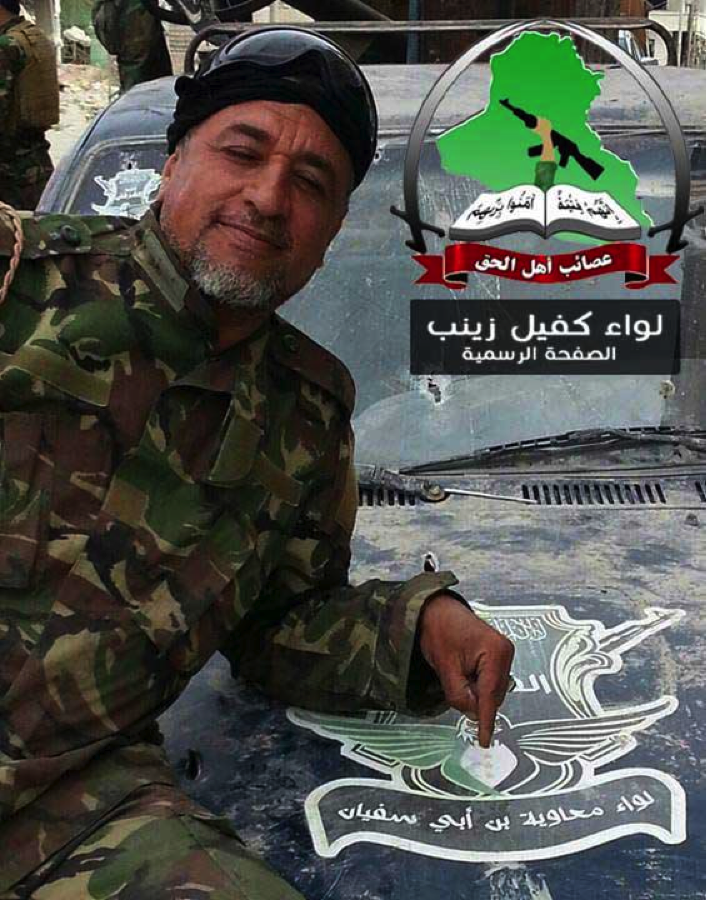
Figure 16: An AAH-LKZ member poses with a destroyed technical belonging to a faction of the Free Syrian Army. The AAH-LKZ member shown was reported killed in Syrian fighting by AAH.
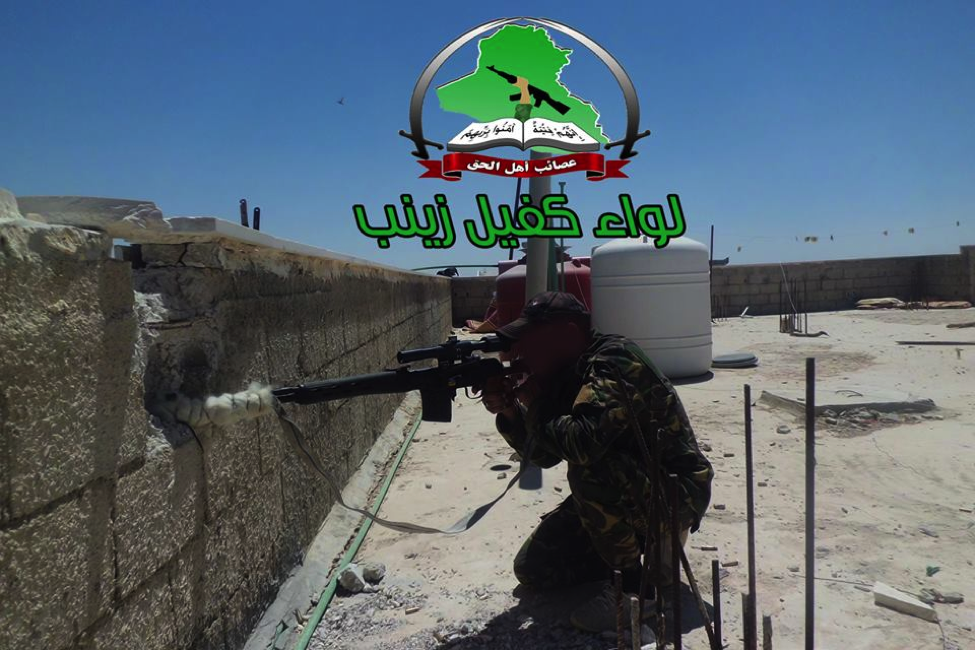
Figure 17: Photographs and videos of AAH-LKZ’s snipers are a regular addition to the group’s social media pages.
[youtube=https://www.youtube.com/watch?v=I6vmJOQlK1Q&feature=youtu.be]
[youtube=https://www.youtube.com/watch?v=1bM2RUFp3oI&feature=youtu.be]
AAH-LKZ’s Go-To Martyrs
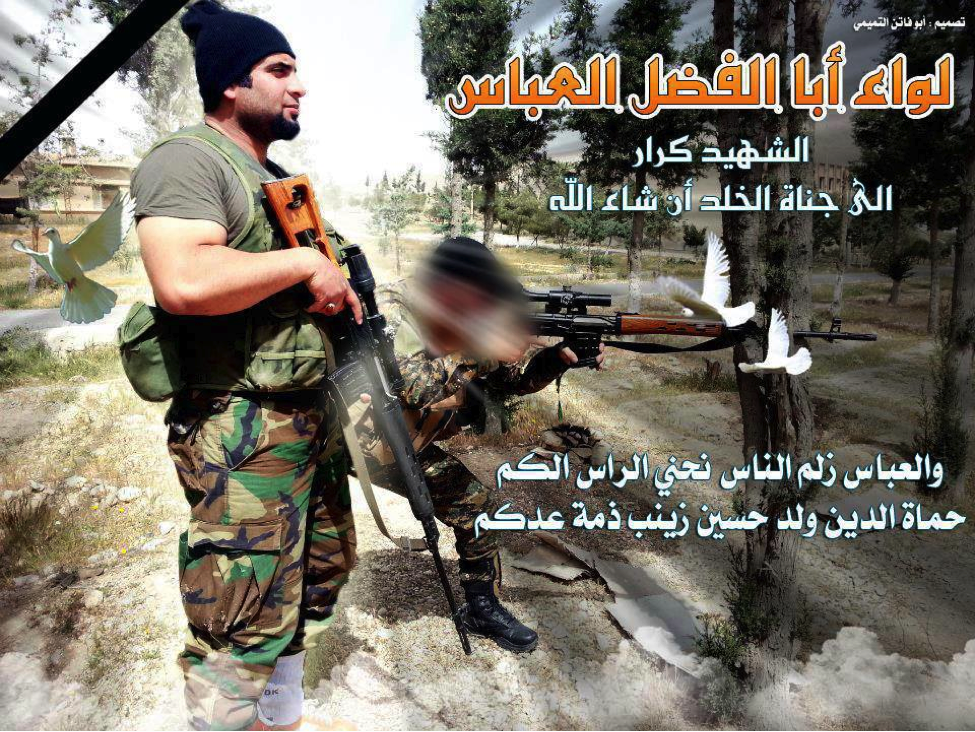
Figure 18: AAH-LKZ’s Karar is shown holding a Dragunov-type sniper rifle in a propaganda poster for Liwa’a Abu Fadl al-Abbas.
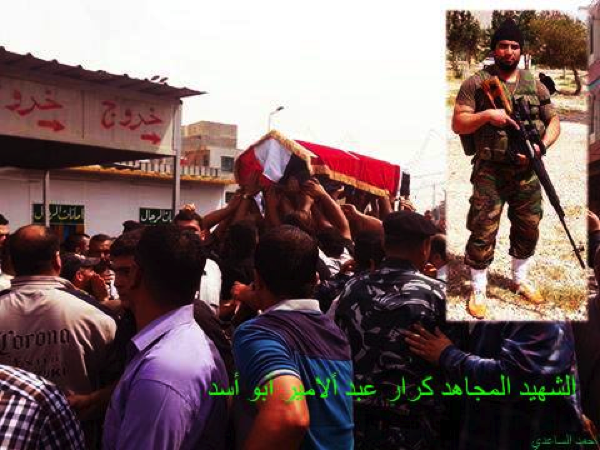
Figure 19: A photo of Karar’s funeral and a shot of him during deployment to Syria. The photo was posted on AAH-LKZ’s official Facebook page.
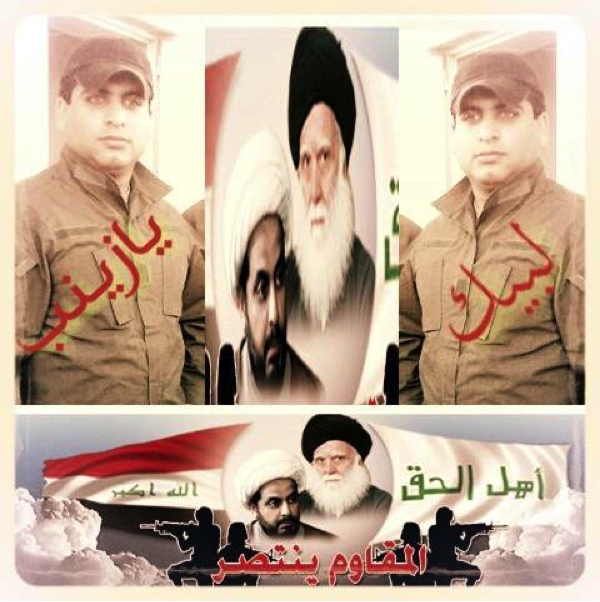
Figure 20: A photo showing Karar’s membership in Asa’ib Ahl al-Haq from his official Facebook martyrdom page.
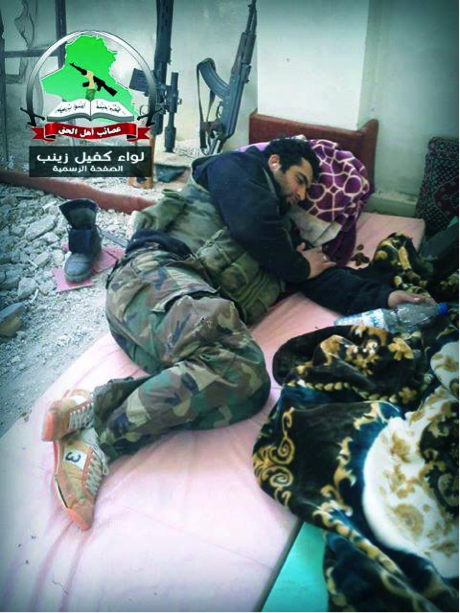
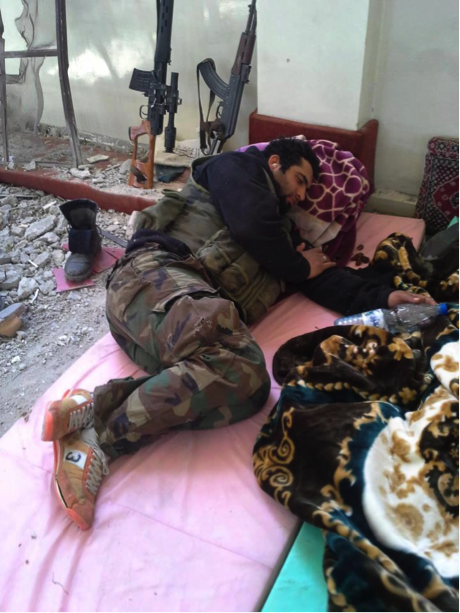
Figure 21: The original LAFA photo for Karar napping (right) with the copy re-released by AAH-LKZ (left).
Karar Abed al-Amir Fatlawi Abu Assad (A.K.A. Karar Fatlawi and Karar Abed al-Amir Aziz Abu Assad)—often simply referred to as just Karar—has been a main face highlighted by AAH-LKZ as an
Hizballah Cavalcade: The Lion of Damascus, and Afghans, and Africans! Oh My!: Fighters From Exotic Locales In Syria’s Shia Militias
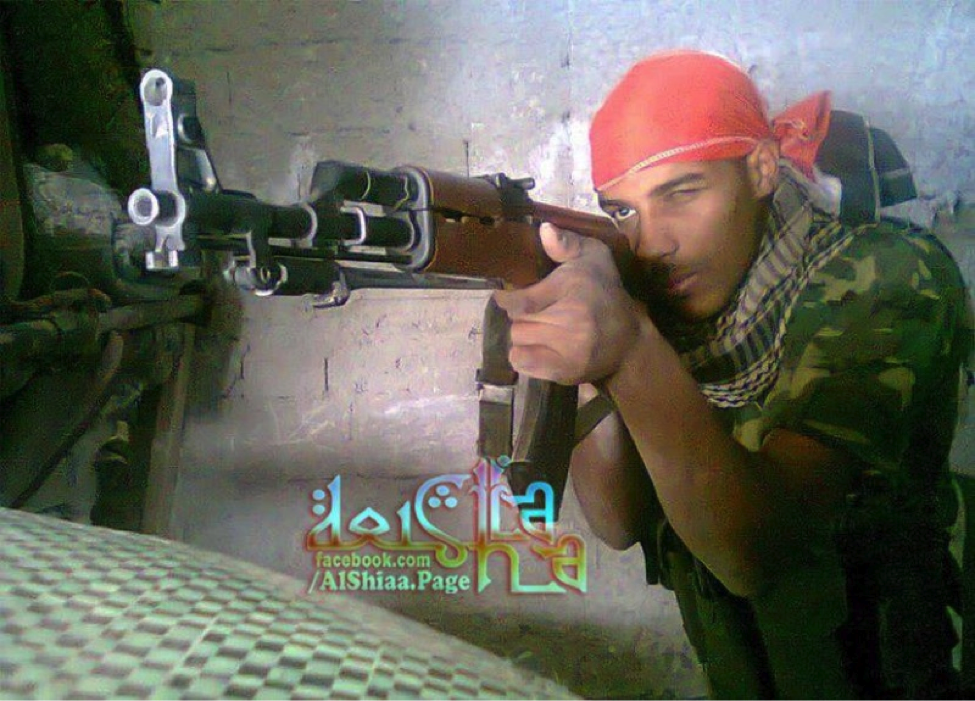 Figure 3: The original photo of Kuwni circulated on Facebook pages managed by pro-LAFA/LAFA administrators.
Called the, “First African martyr” for the Sayyidah Zaynab Shrine, Muhammed Suleiman al-Kuwni was reported dead on the pro-LAFA/LAFA administered “Al-Shiaa” Facebook page on July 26, 2013. One pro-LAFA Facebook page claimed Kuwni was killed due to injuries he suffered during fighting. Interestingly, Kuwni was not reported to be a member of Liwa’a Abu Fadl al-Abbas or of another announced Shia militia in Syria. Instead he was simply listed as a “Defender of…Zaynab”.
His death was later reported by Iranian media outlets on July 27, 2013.[8] On that same day Iranian media started covering Kuwni’s story, Hizballah’s SouthLebanon.org webpage also included a prayer for him.[9] Most importantly, both Iranian and pro-LAFA Arabic language sources reported Kuwni was originally from the West African state of Côte d`Ivoire, home to almost half a million Shia Muslims.[10]
Stories about Kuwni did not include details on any burial plans. Additionally, more comprehensive information covering his family, or a detailed biography stating where he was originally from in Côte d`Ivoire was also not presented.
Hizballah and Iranian activities have been rather extensive in West Africa.[11] According to the U.S. Department of Treasury, Hizballah has also pieced together an extensive fundraising and recruiting network in Côte d`Ivoire.[12] It is possible Kuwni passed through Hizballah recruitment in Africa, was trained (likely in Lebanon), and was then deployed to fight in Syria. However, his case remains unique and unusual. Iran has primarily utilized Arabic-speaking proxies from Iraq and Lebanese Hizballah to bolster Assad. The addition of African fighters demonstrates Tehran is more open to using proxies from all over the world.
[1] See: https://www.syriaonline.sy/?f=Details&catid=12&pageid=4174.
[2] See: https://www.khaama.com/afghans-involvement-in-syria-war-to-be-investigated-mosazai-1562
[3] See: https://algadtv.com/?p=53142
[4] See: https://freehalab.wordpress.com/2013/06/06/assads-foreign-jihadists-and-mercenaries/
[5] Grant Farr, “The Hazara of Central Afghanistan”, in Barbara Brower and Barbara Rose Johnston (eds.), Disappearing Peoples?: Indigenous Groups and Ethnic Minorities in South and Central Asia, (Walnut Creek, California: Left Coast Press, Inc., 2007), P. 164.
[6] See: https://www.hazara.net/news/news2012/khoemini/khoemini-anniversary-kabul.html. See also: https://www.brianglynwilliams.com/pdfs/20120301114407597.pdf and https://www.csmonitor.com/2005/0824/p06s01-wosc.html.
[7] See: https://www.khaama.com/afghans-involvement-in-syria-war-to-be-investigated-mosazai-1562.
[8] The first Iranian story covering Kuwni’s death was published by Iran’s AhlulBayt News Agency. See: https://www.abna.ir/data.asp?lang=1&id=445548. The same story and published photograph have been reproduced by a number of Iranian news websites. See: https://valieamr.com/Default.aspx?PageName=news&ID=20336&Language=1, https://eslamabadkhabar.ir/shownews.php?idnews=42108, and https://www.fardanews.com/fa/news/276512/%D8%B4%D9%87%D8%A7%D8%AF%D8%AA-%D9%86%D8%AE%D8%B3%D8%AA%DB%8C%D9%86-%D8%A2%D9%81%D8%B1%DB%8C%D9%82%D8%A7%DB%8C%DB%8C-%D9%85%D8%AF%D8%A7%D9%81%D8%B9-%D8%AD%D8%B1%D9%85%D8%B9%DA%A9%D8%B3.
[9] See: https://www.southlebanon.org/?p=79659.
[10] Shireen Hunter, Iran’s Foreign Policy in the Post-Soviet Era: Resisting the New International Order, (Santa Barbara, California: Praeger, 2010), P. 227.
[11] In Nigeria, Hizballah has been involved in maintaining arms caches and the creation of groups pushing Iranian revolutionary ideology. Nigeria even has its own political organization (the Islamic Movement of Nigeria) which was created as a near mirror image of Lebanese Hizballah. See: https://www.islamicmovement.org/ and https://www.bbc.co.uk/news/world-africa-17908704. See also: https://www.foxnews.com/world/2013/07/12/nigeria-judge-refuses-bail-for-3-lebanese-nigerians-accused-hoarding-hezbollah/ and https://www.haaretz.com/news/features/.premium-1.530327. For some earlier examples (2009-2010) of Iranian diplomatic, cultural, and financial moves in West Africa, see: https://www.irantracker.org/analysis/ahmadinejad-west-africa-iranian-outreach-reveals-tehran-foreign-policy-aug-3-2010-3242. See also: https://www.aei.org/article/foreign-and-defense-policy/regional/subsaharan-africa/forgotten-africa-turns-to-iran-as-a-result-of-western-neglect/.
[12] See: https://www.treasury.gov/press-center/press-releases/Pages/jl1980.aspx and https://www.treasury.gov/press-center/press-releases/Pages/tg149.aspx.
Figure 3: The original photo of Kuwni circulated on Facebook pages managed by pro-LAFA/LAFA administrators.
Called the, “First African martyr” for the Sayyidah Zaynab Shrine, Muhammed Suleiman al-Kuwni was reported dead on the pro-LAFA/LAFA administered “Al-Shiaa” Facebook page on July 26, 2013. One pro-LAFA Facebook page claimed Kuwni was killed due to injuries he suffered during fighting. Interestingly, Kuwni was not reported to be a member of Liwa’a Abu Fadl al-Abbas or of another announced Shia militia in Syria. Instead he was simply listed as a “Defender of…Zaynab”.
His death was later reported by Iranian media outlets on July 27, 2013.[8] On that same day Iranian media started covering Kuwni’s story, Hizballah’s SouthLebanon.org webpage also included a prayer for him.[9] Most importantly, both Iranian and pro-LAFA Arabic language sources reported Kuwni was originally from the West African state of Côte d`Ivoire, home to almost half a million Shia Muslims.[10]
Stories about Kuwni did not include details on any burial plans. Additionally, more comprehensive information covering his family, or a detailed biography stating where he was originally from in Côte d`Ivoire was also not presented.
Hizballah and Iranian activities have been rather extensive in West Africa.[11] According to the U.S. Department of Treasury, Hizballah has also pieced together an extensive fundraising and recruiting network in Côte d`Ivoire.[12] It is possible Kuwni passed through Hizballah recruitment in Africa, was trained (likely in Lebanon), and was then deployed to fight in Syria. However, his case remains unique and unusual. Iran has primarily utilized Arabic-speaking proxies from Iraq and Lebanese Hizballah to bolster Assad. The addition of African fighters demonstrates Tehran is more open to using proxies from all over the world.
[1] See: https://www.syriaonline.sy/?f=Details&catid=12&pageid=4174.
[2] See: https://www.khaama.com/afghans-involvement-in-syria-war-to-be-investigated-mosazai-1562
[3] See: https://algadtv.com/?p=53142
[4] See: https://freehalab.wordpress.com/2013/06/06/assads-foreign-jihadists-and-mercenaries/
[5] Grant Farr, “The Hazara of Central Afghanistan”, in Barbara Brower and Barbara Rose Johnston (eds.), Disappearing Peoples?: Indigenous Groups and Ethnic Minorities in South and Central Asia, (Walnut Creek, California: Left Coast Press, Inc., 2007), P. 164.
[6] See: https://www.hazara.net/news/news2012/khoemini/khoemini-anniversary-kabul.html. See also: https://www.brianglynwilliams.com/pdfs/20120301114407597.pdf and https://www.csmonitor.com/2005/0824/p06s01-wosc.html.
[7] See: https://www.khaama.com/afghans-involvement-in-syria-war-to-be-investigated-mosazai-1562.
[8] The first Iranian story covering Kuwni’s death was published by Iran’s AhlulBayt News Agency. See: https://www.abna.ir/data.asp?lang=1&id=445548. The same story and published photograph have been reproduced by a number of Iranian news websites. See: https://valieamr.com/Default.aspx?PageName=news&ID=20336&Language=1, https://eslamabadkhabar.ir/shownews.php?idnews=42108, and https://www.fardanews.com/fa/news/276512/%D8%B4%D9%87%D8%A7%D8%AF%D8%AA-%D9%86%D8%AE%D8%B3%D8%AA%DB%8C%D9%86-%D8%A2%D9%81%D8%B1%DB%8C%D9%82%D8%A7%DB%8C%DB%8C-%D9%85%D8%AF%D8%A7%D9%81%D8%B9-%D8%AD%D8%B1%D9%85%D8%B9%DA%A9%D8%B3.
[9] See: https://www.southlebanon.org/?p=79659.
[10] Shireen Hunter, Iran’s Foreign Policy in the Post-Soviet Era: Resisting the New International Order, (Santa Barbara, California: Praeger, 2010), P. 227.
[11] In Nigeria, Hizballah has been involved in maintaining arms caches and the creation of groups pushing Iranian revolutionary ideology. Nigeria even has its own political organization (the Islamic Movement of Nigeria) which was created as a near mirror image of Lebanese Hizballah. See: https://www.islamicmovement.org/ and https://www.bbc.co.uk/news/world-africa-17908704. See also: https://www.foxnews.com/world/2013/07/12/nigeria-judge-refuses-bail-for-3-lebanese-nigerians-accused-hoarding-hezbollah/ and https://www.haaretz.com/news/features/.premium-1.530327. For some earlier examples (2009-2010) of Iranian diplomatic, cultural, and financial moves in West Africa, see: https://www.irantracker.org/analysis/ahmadinejad-west-africa-iranian-outreach-reveals-tehran-foreign-policy-aug-3-2010-3242. See also: https://www.aei.org/article/foreign-and-defense-policy/regional/subsaharan-africa/forgotten-africa-turns-to-iran-as-a-result-of-western-neglect/.
[12] See: https://www.treasury.gov/press-center/press-releases/Pages/jl1980.aspx and https://www.treasury.gov/press-center/press-releases/Pages/tg149.aspx.
